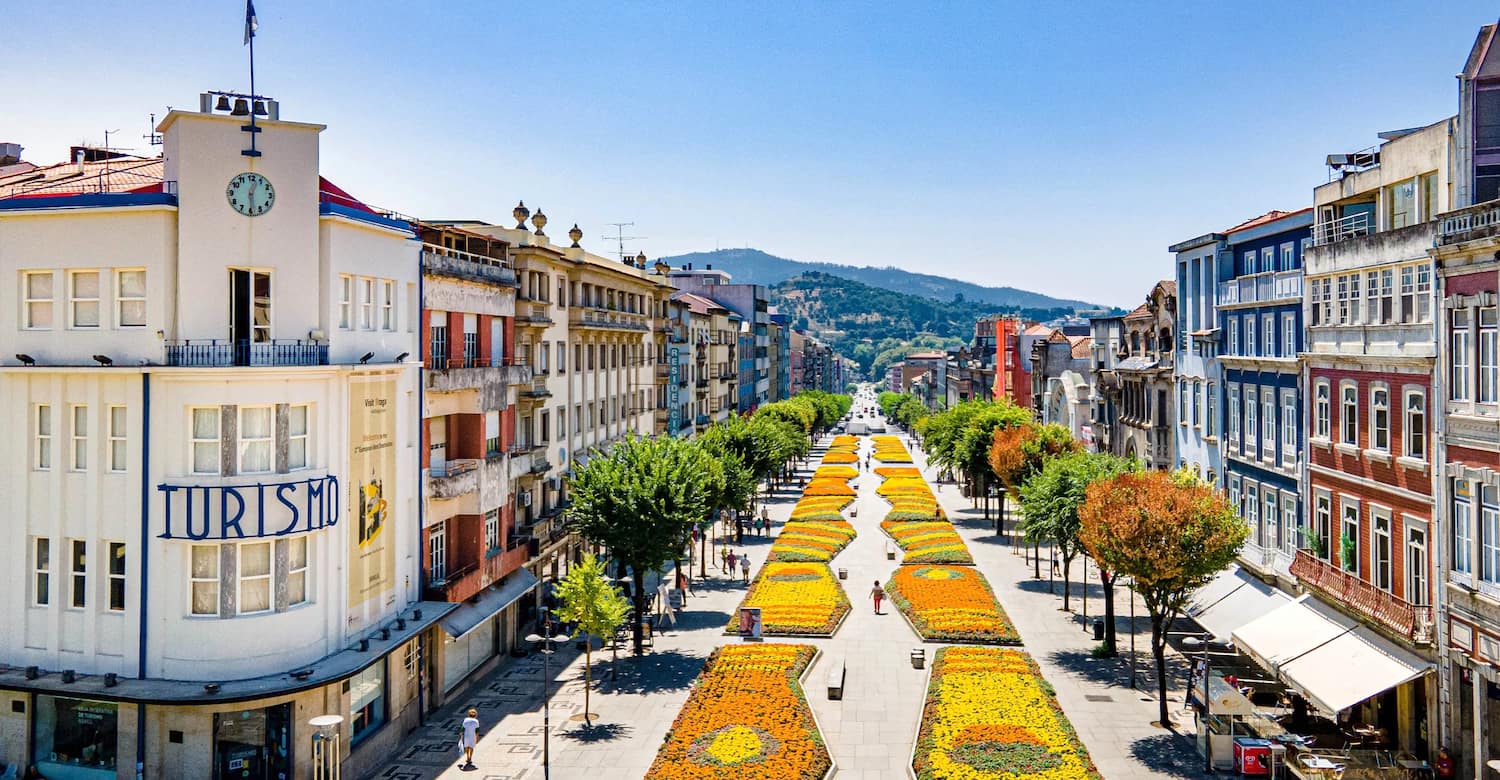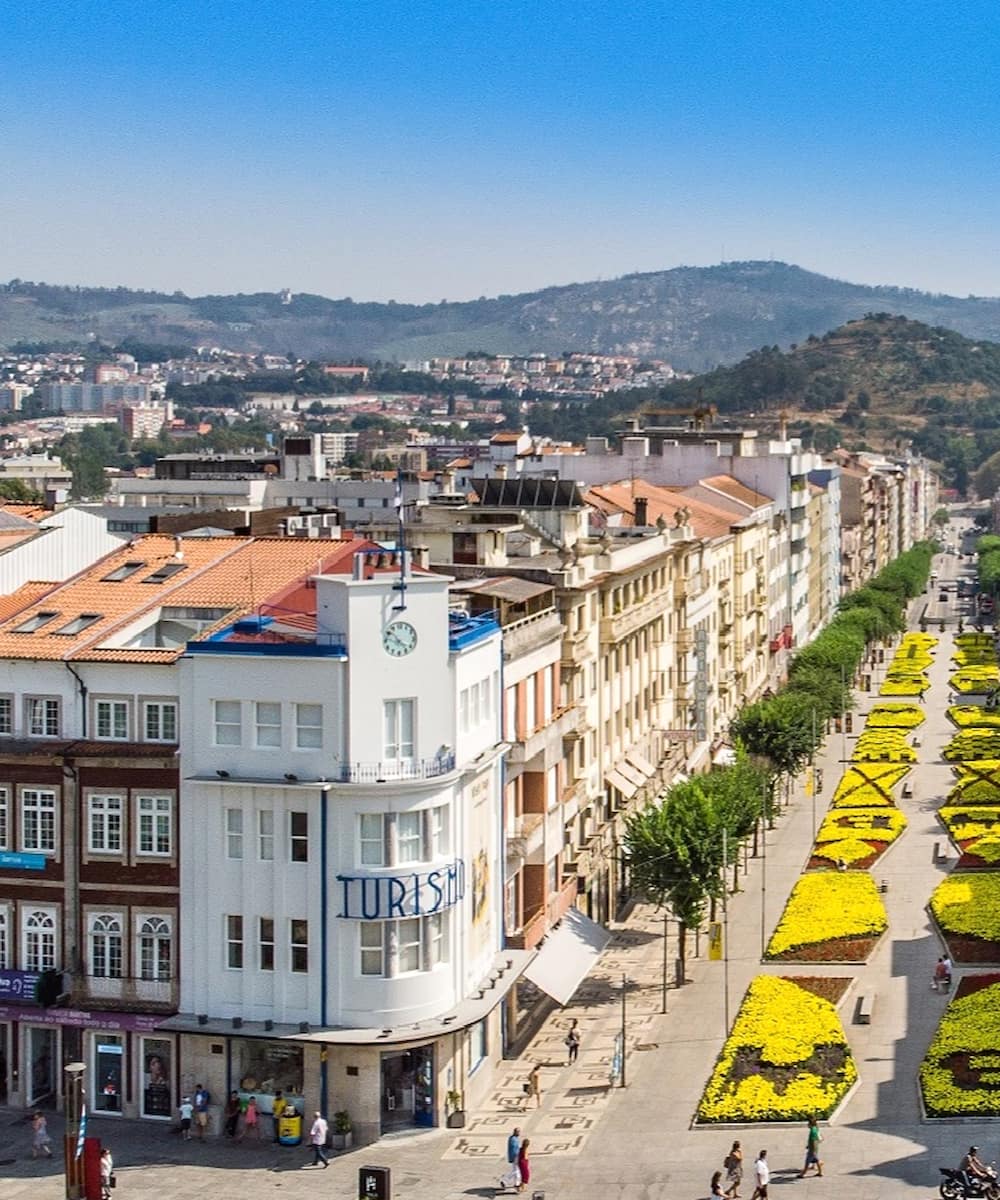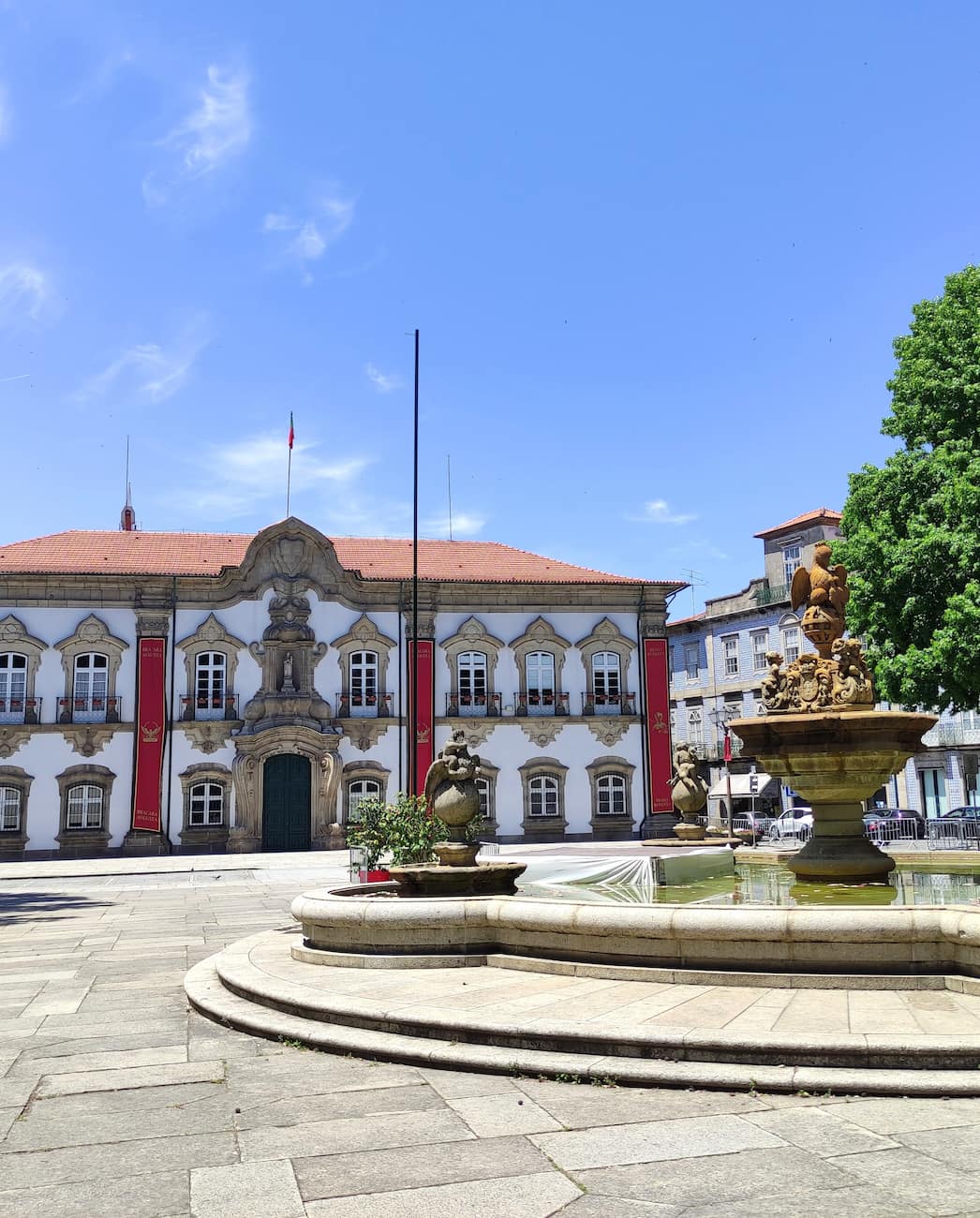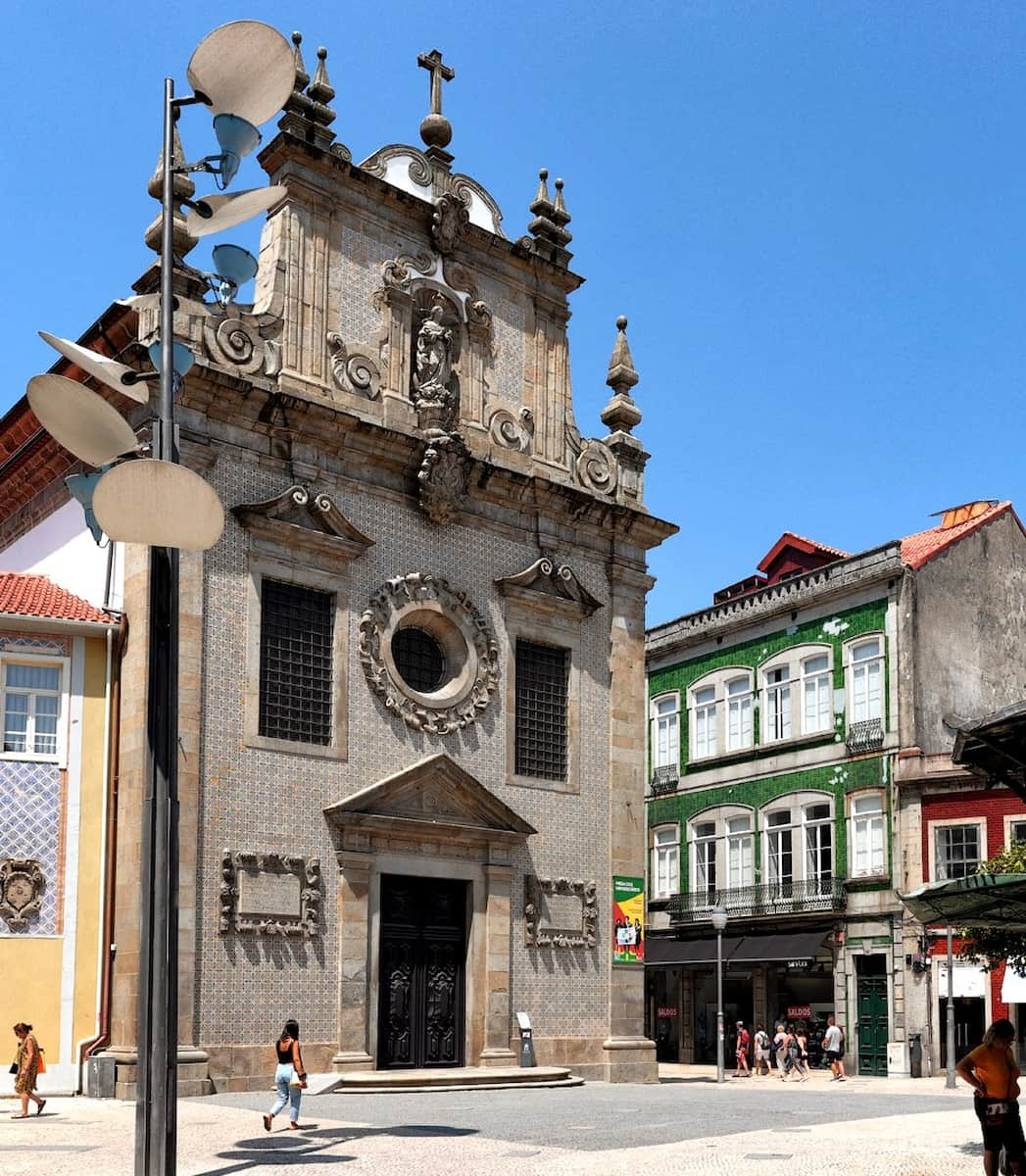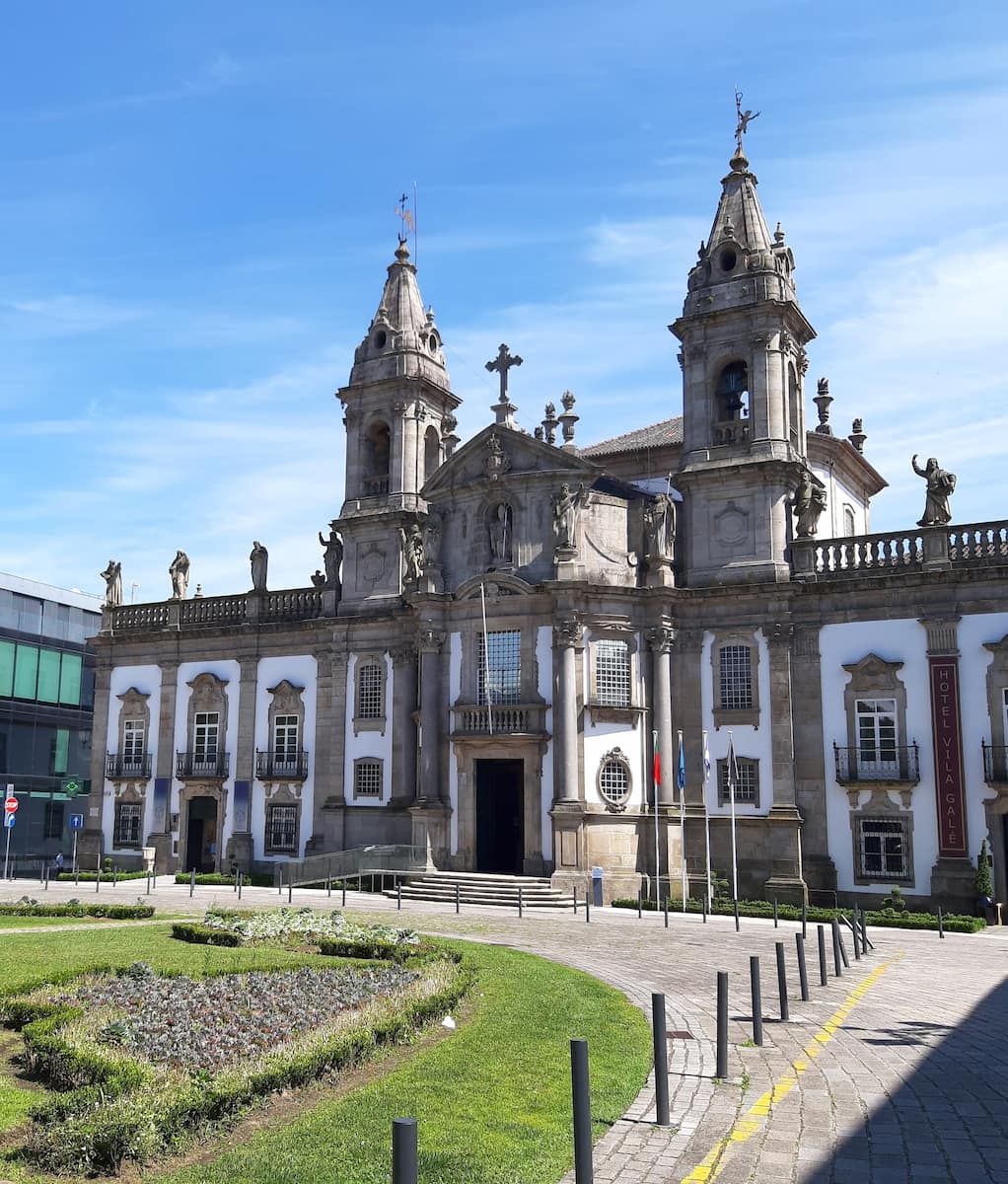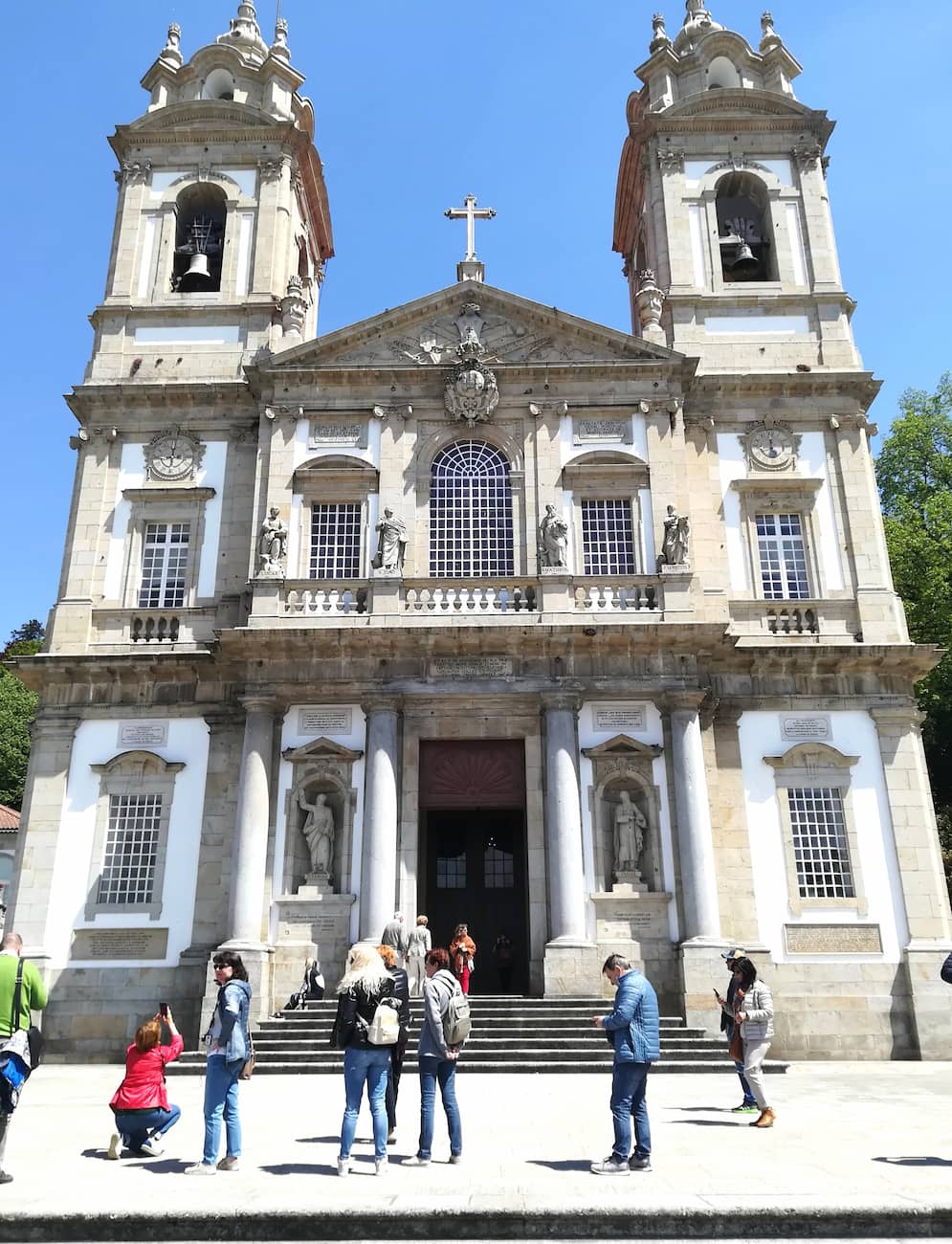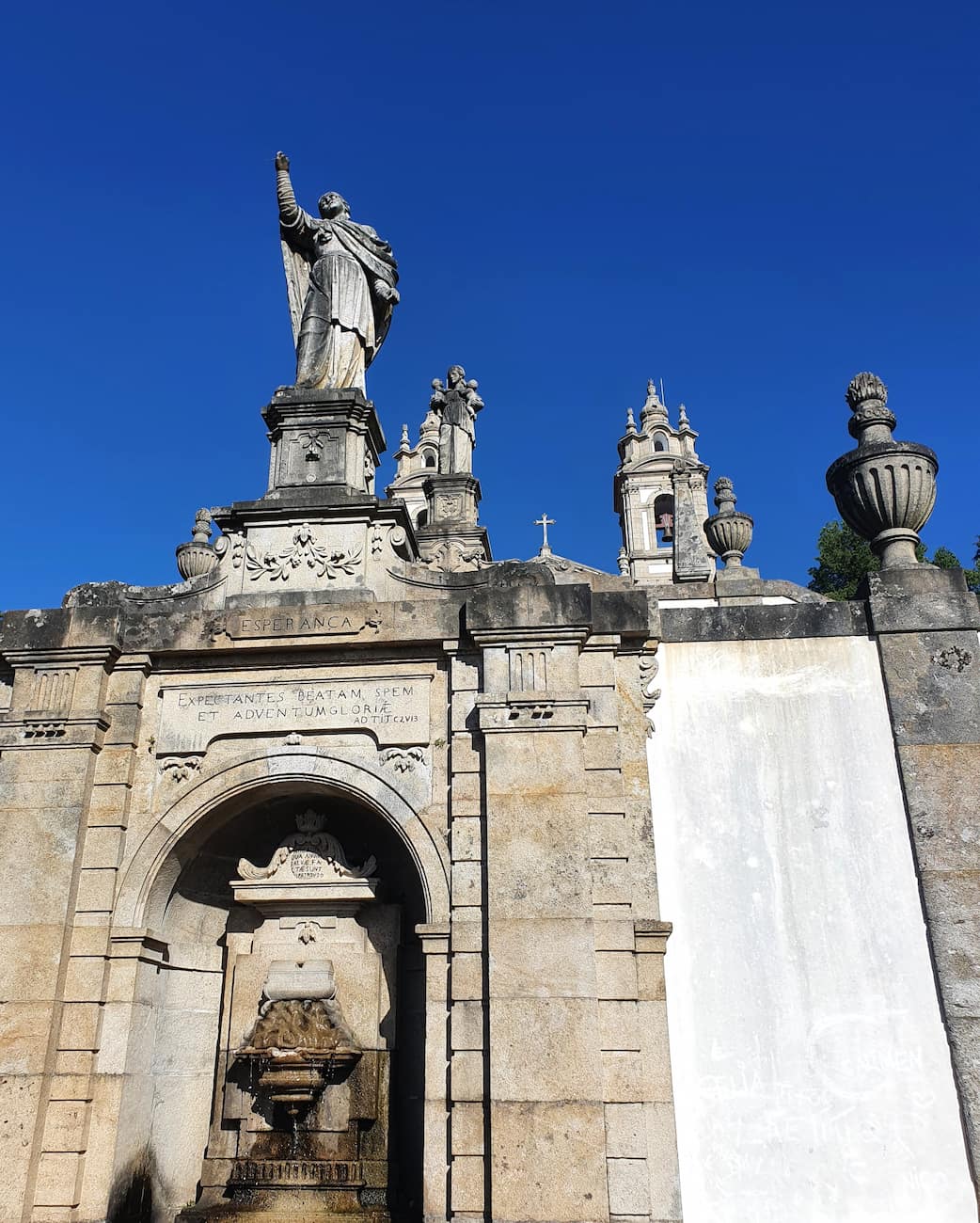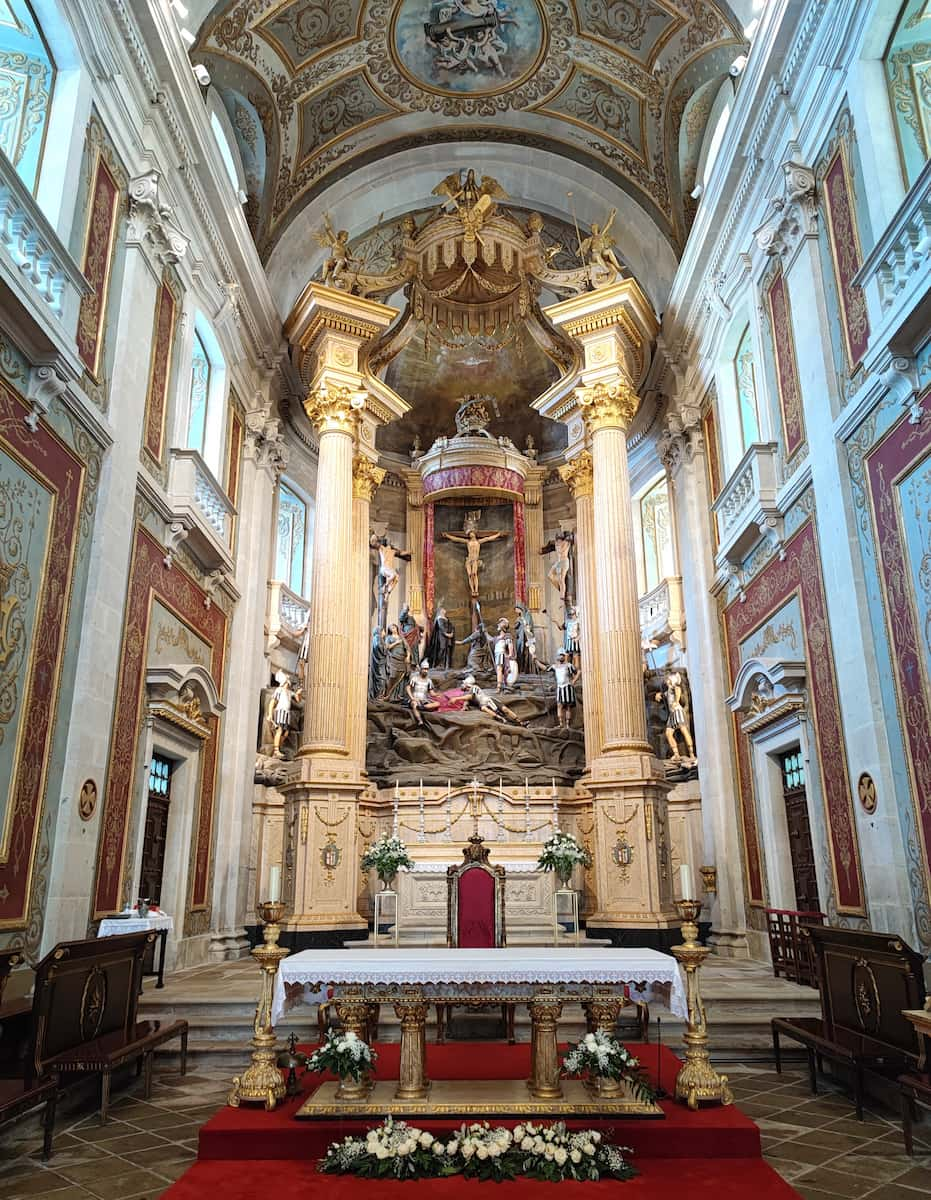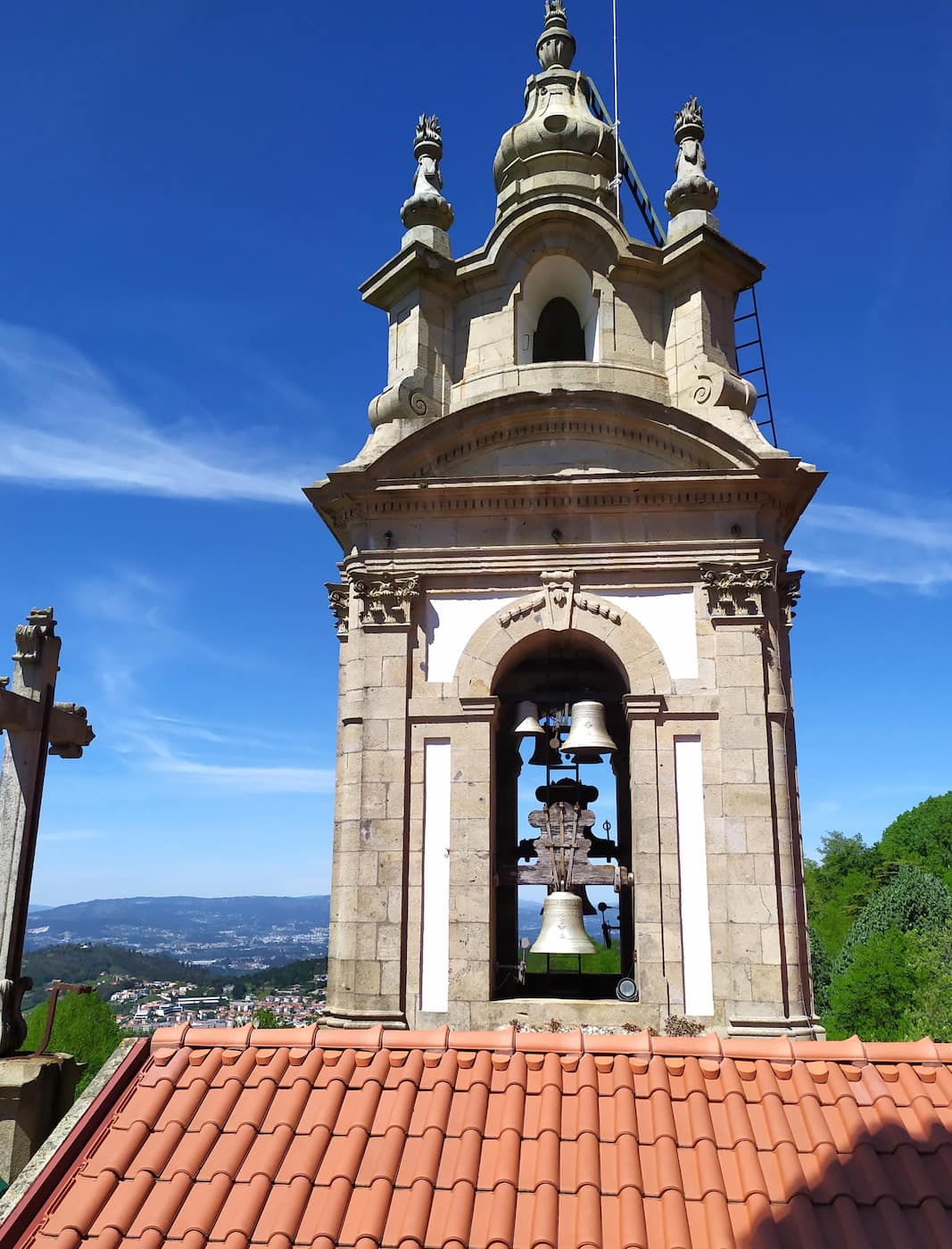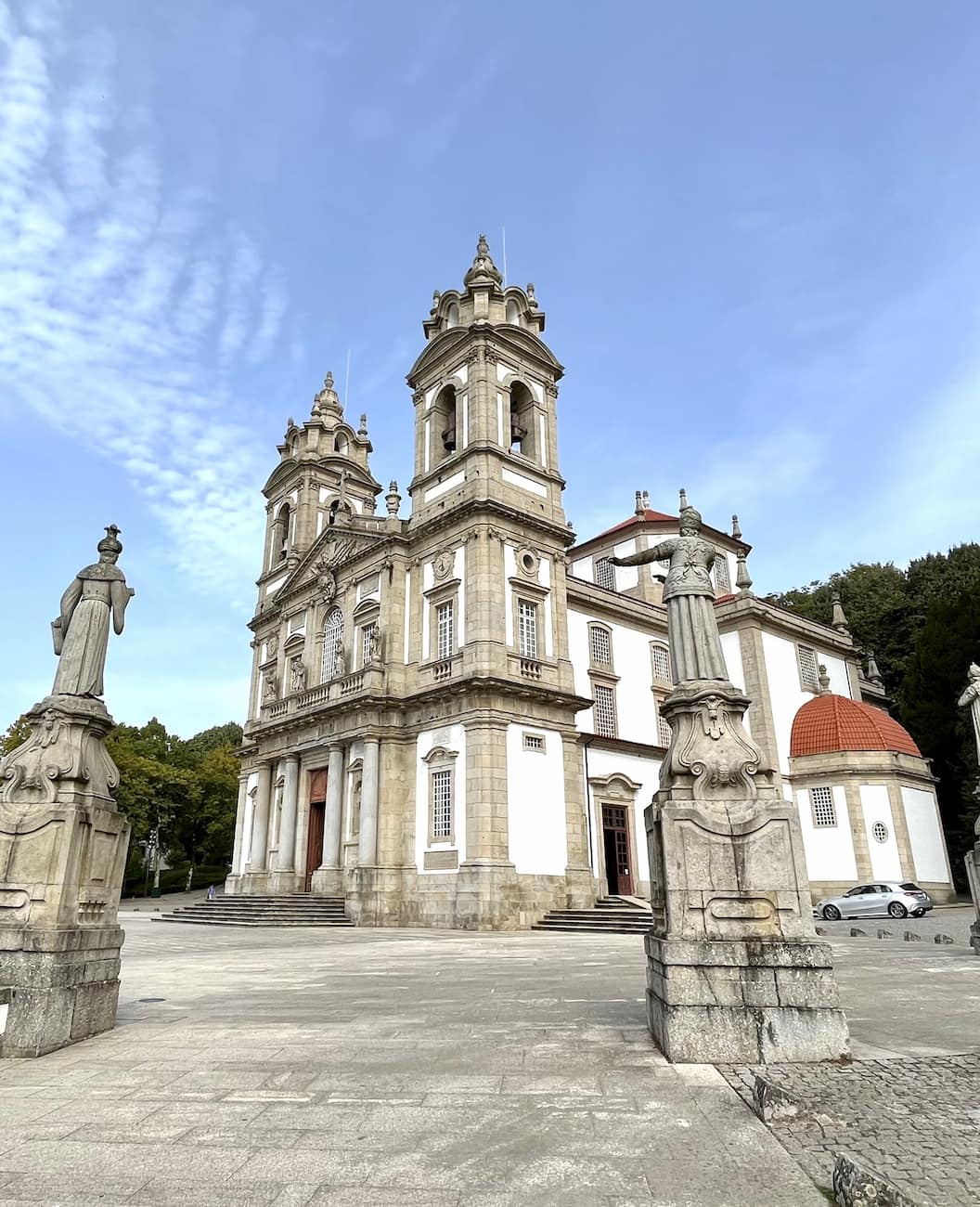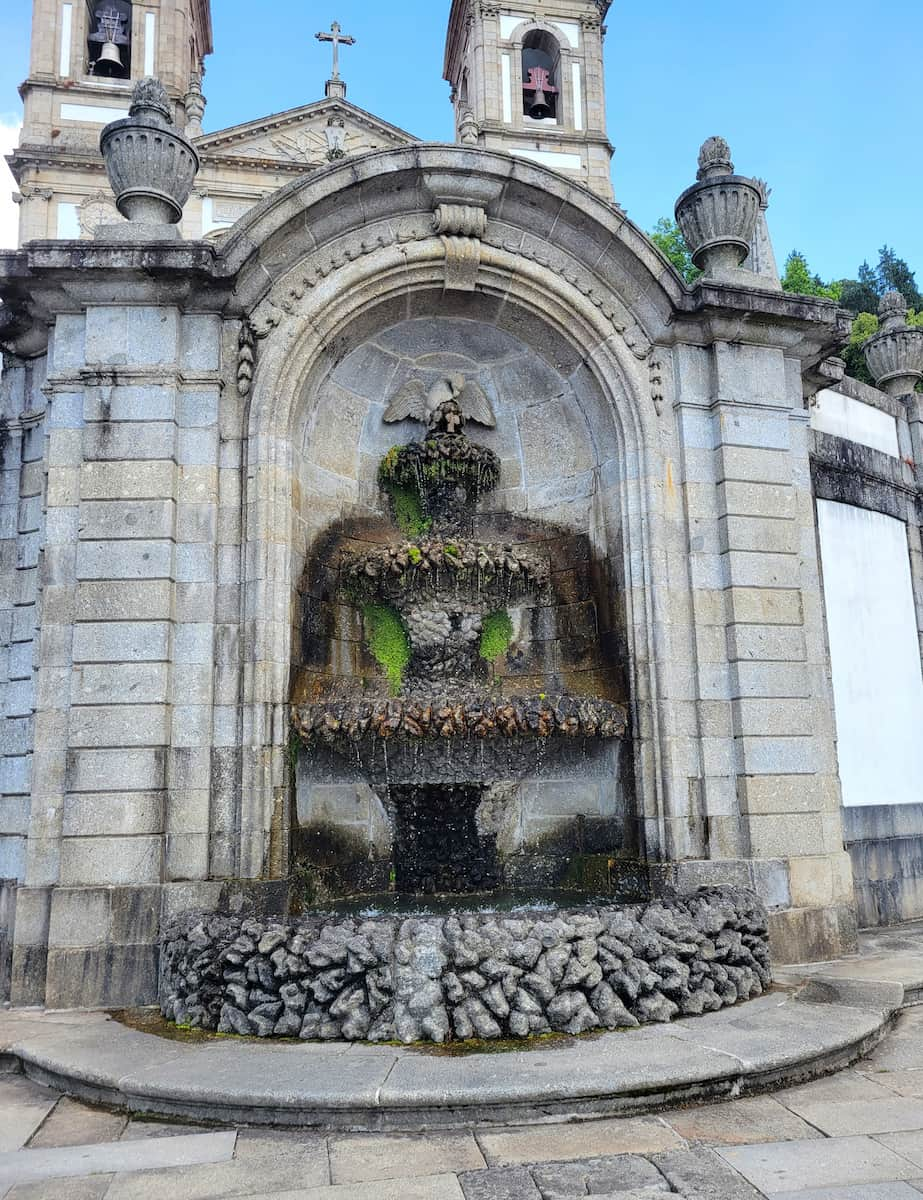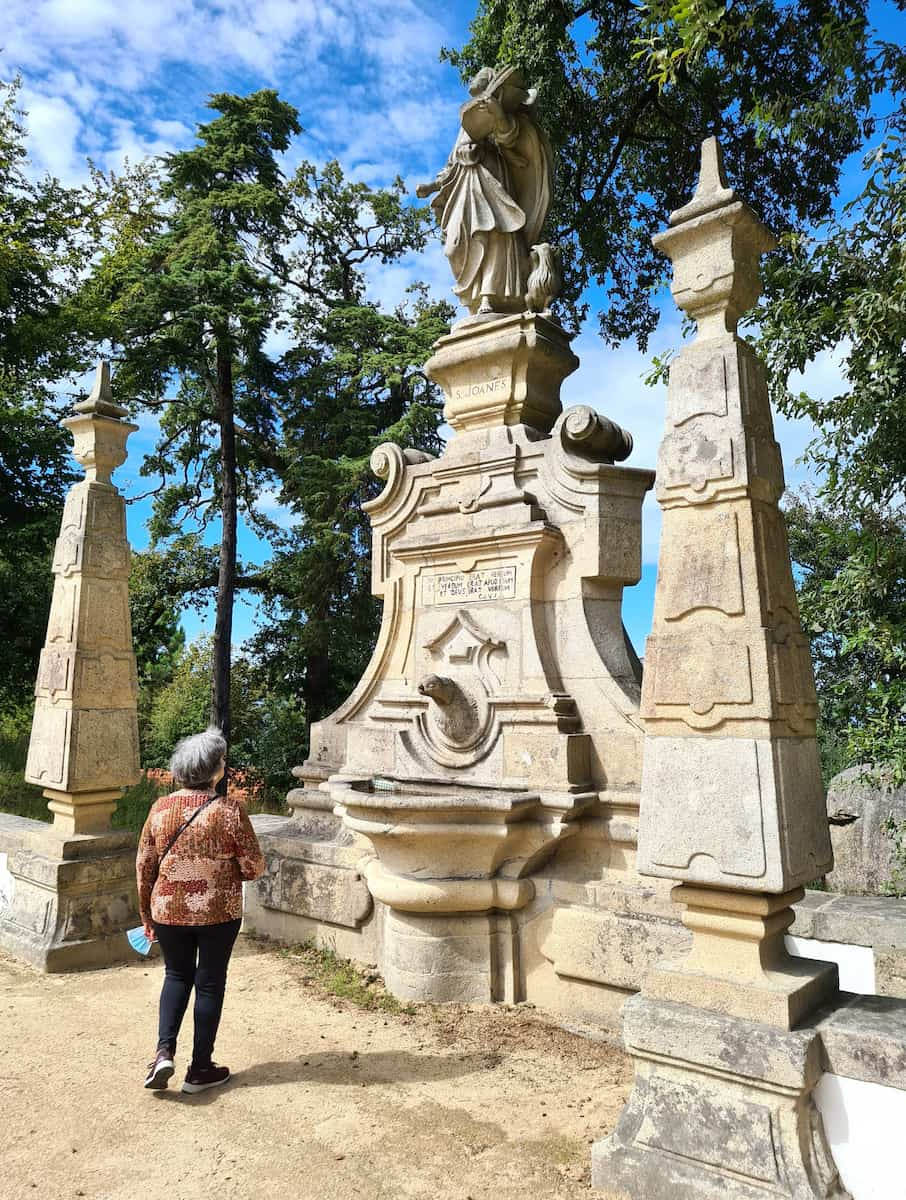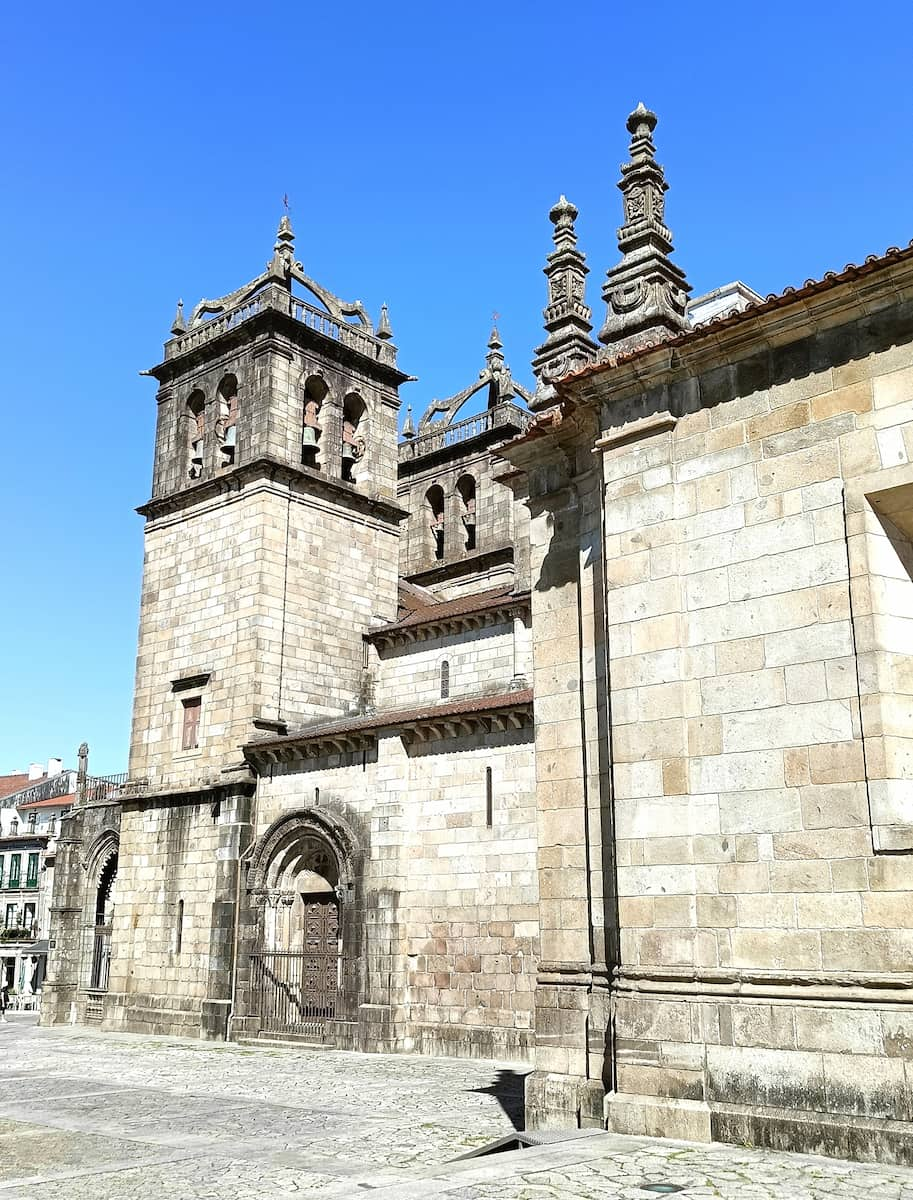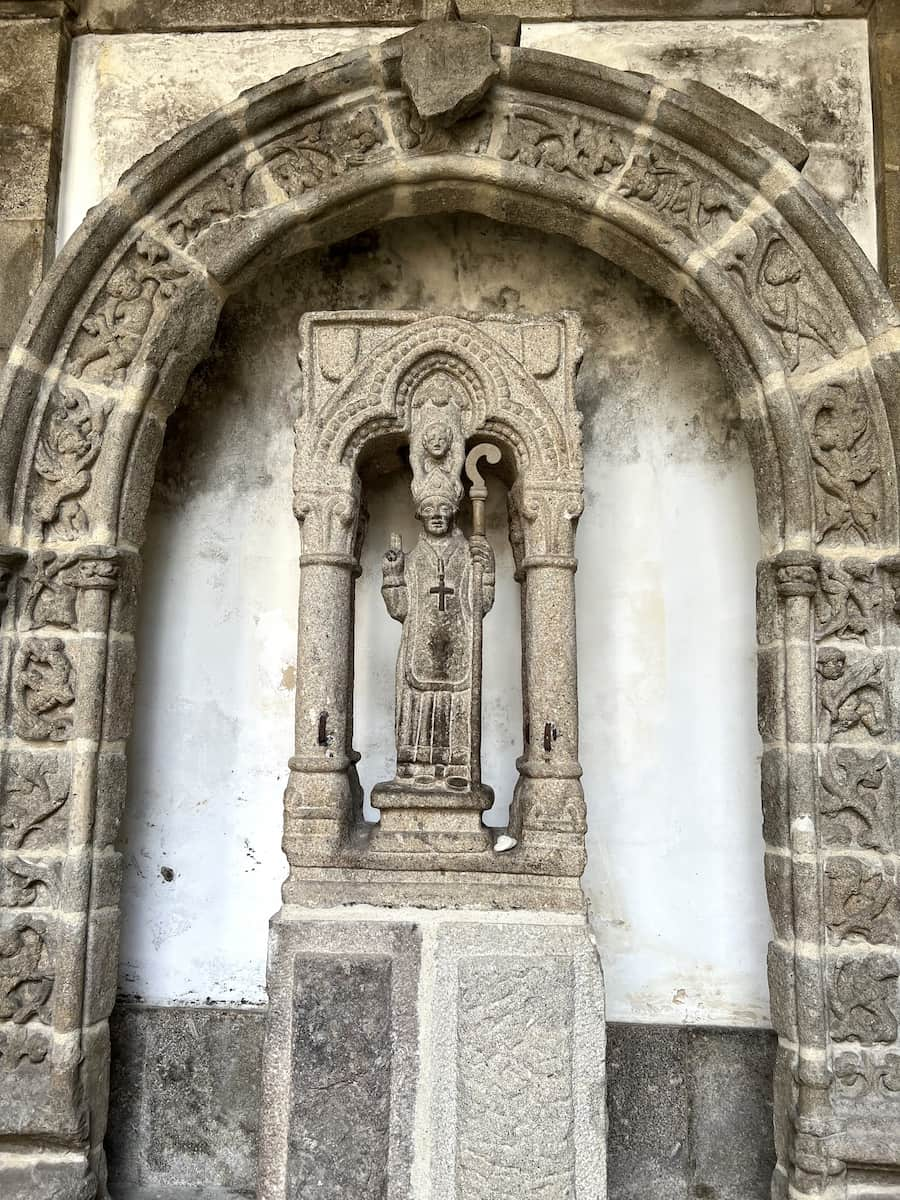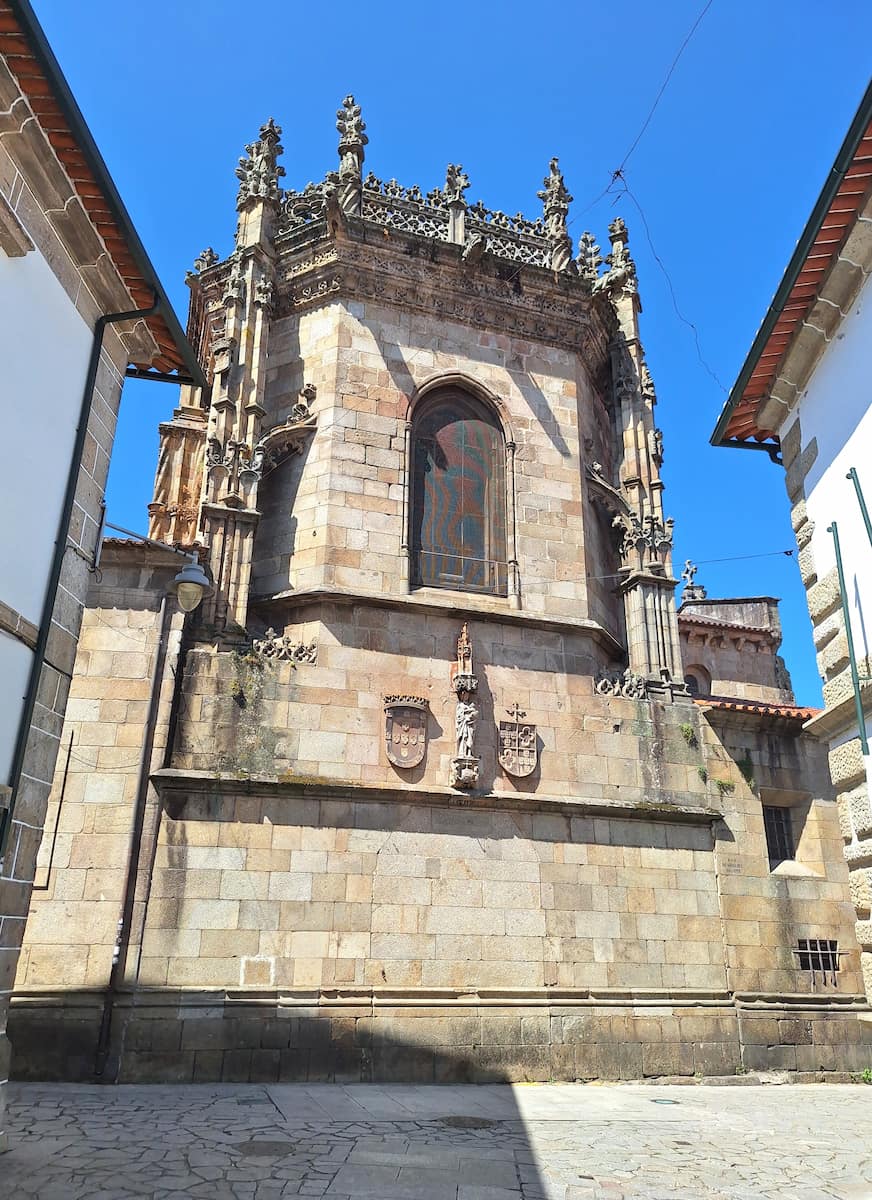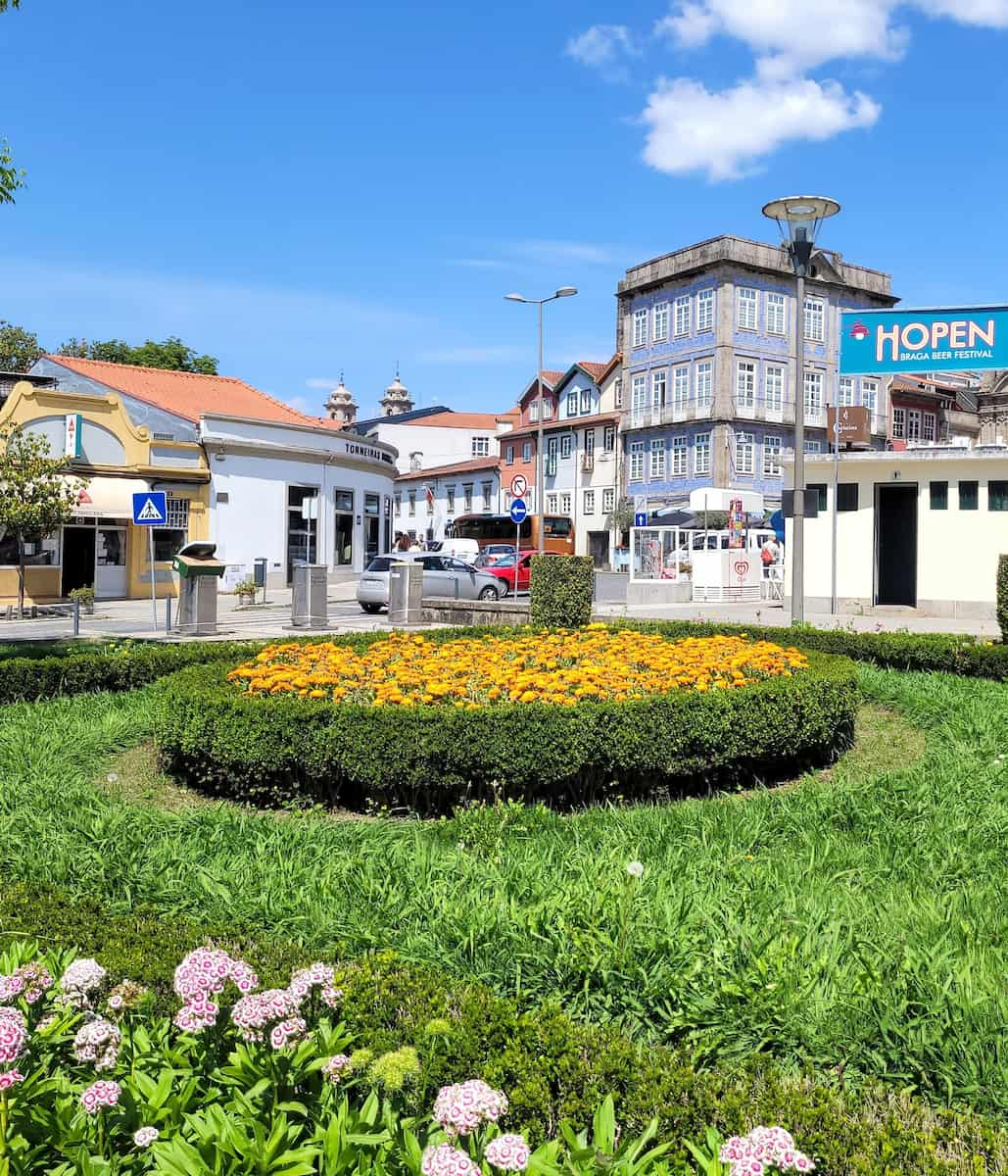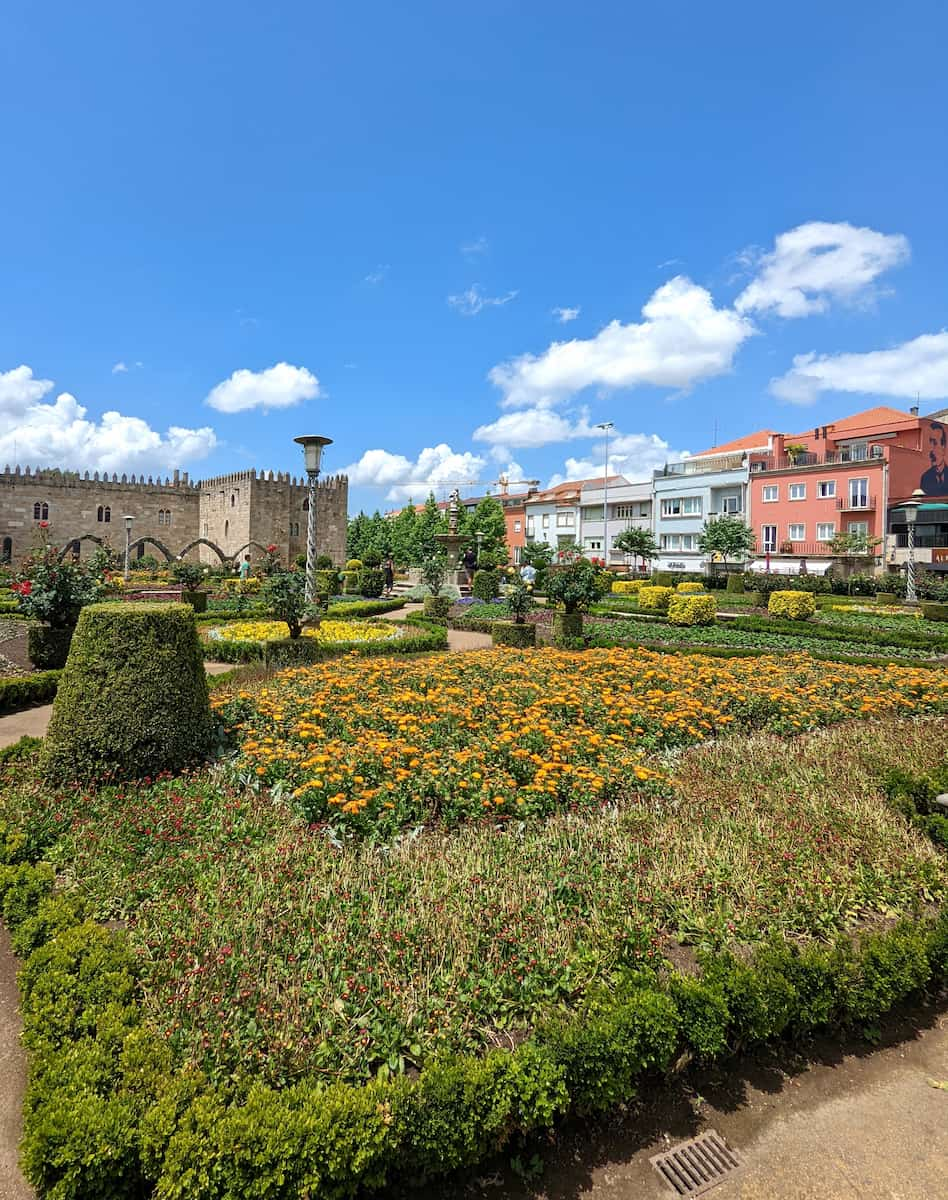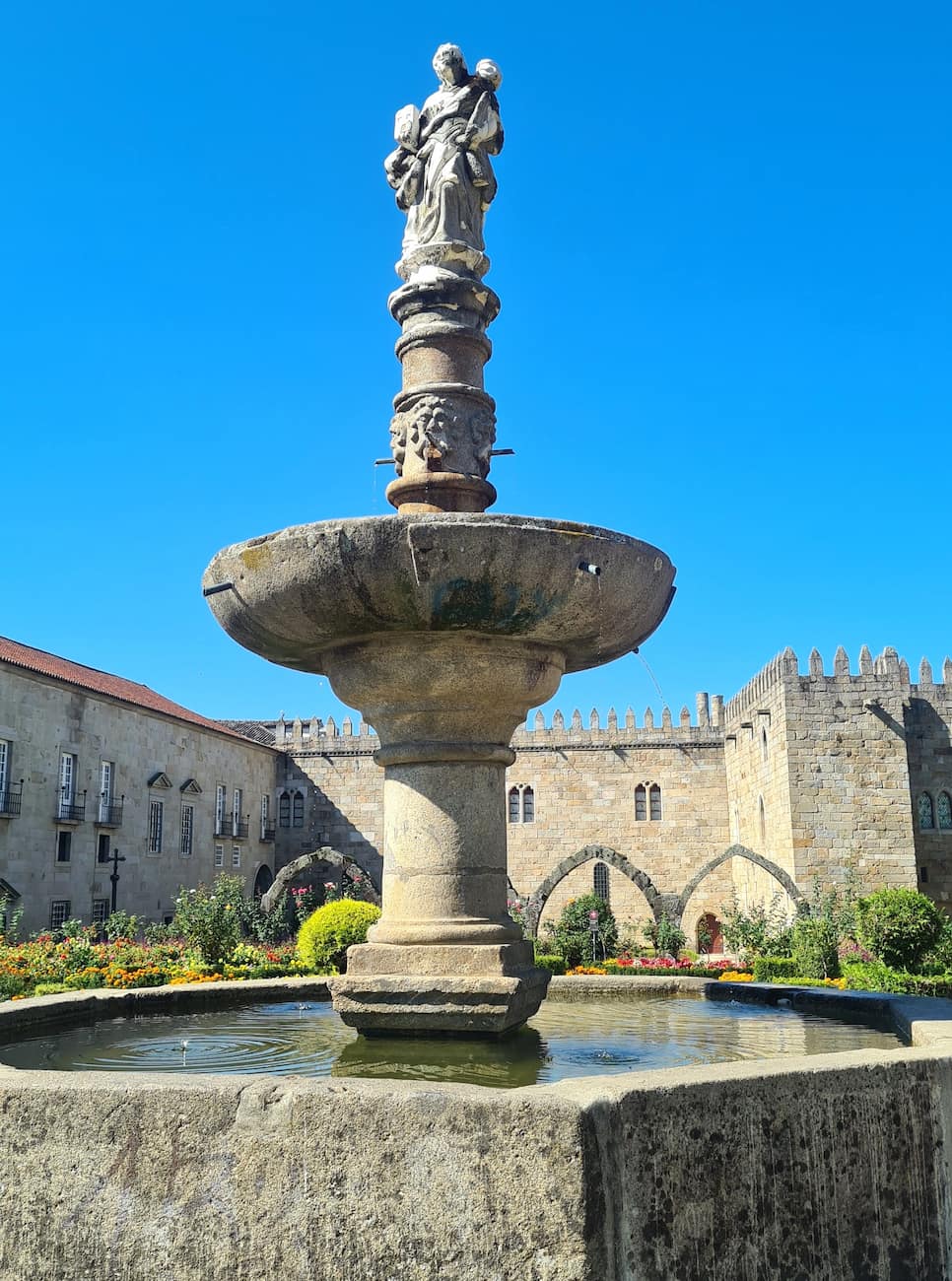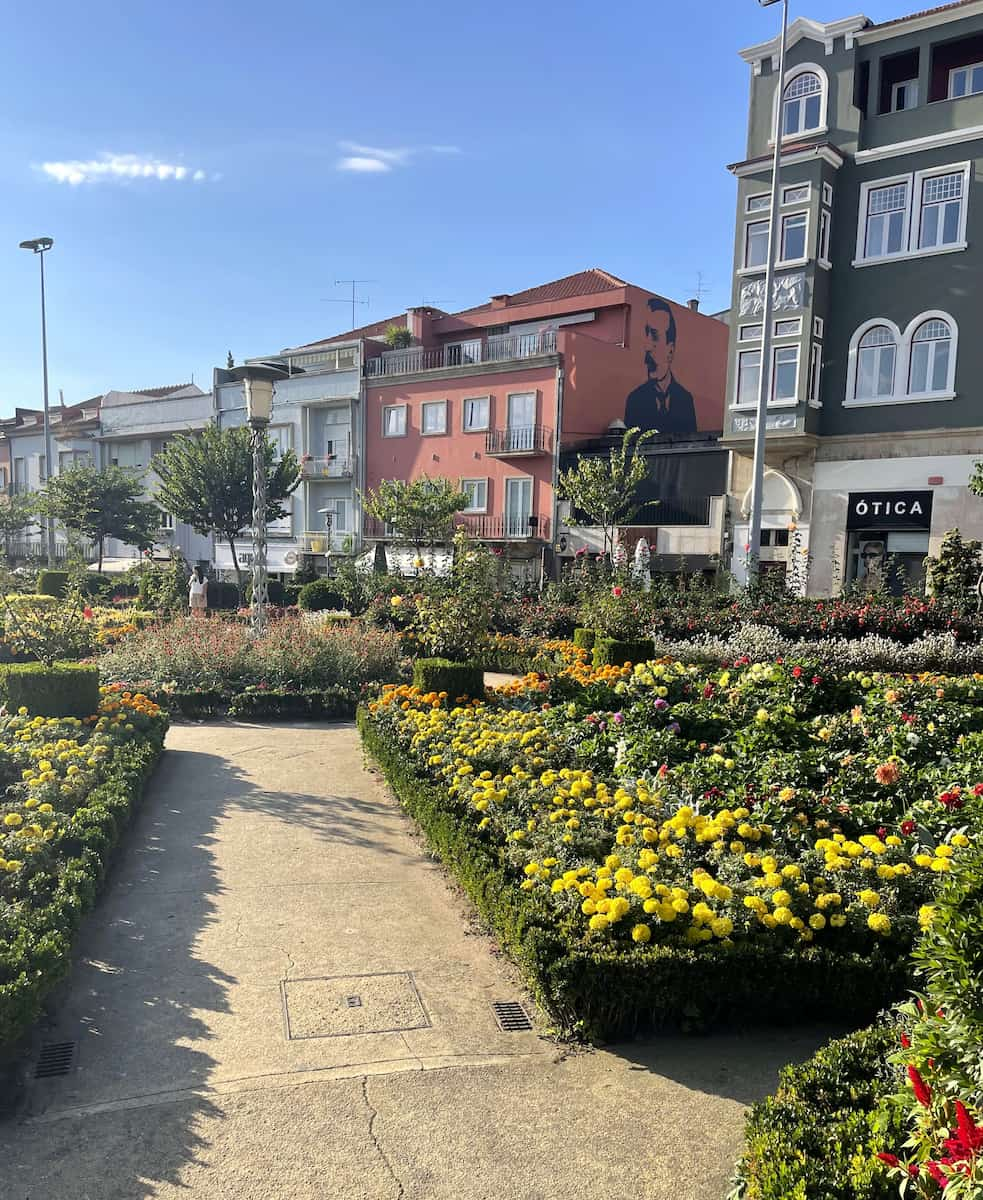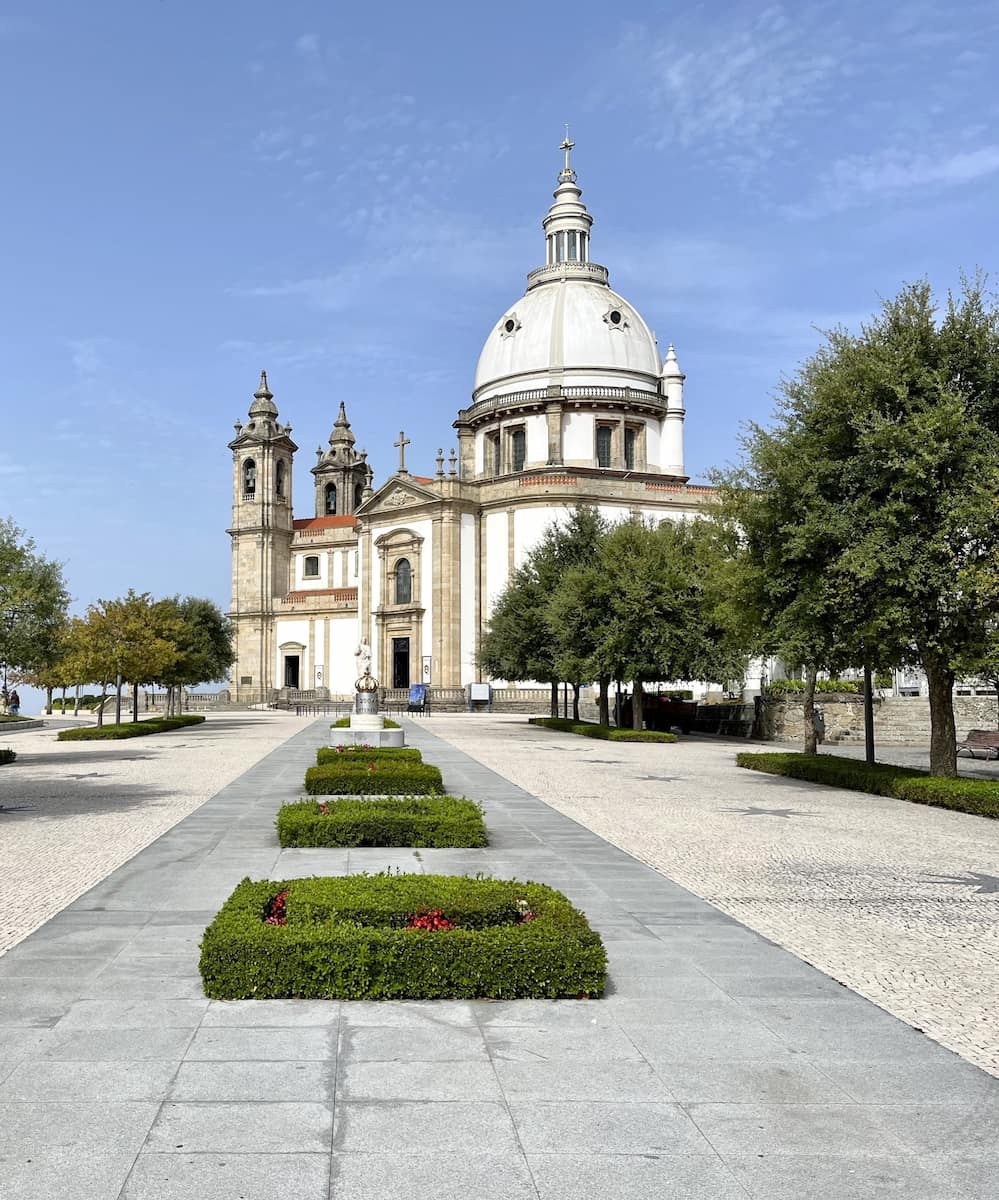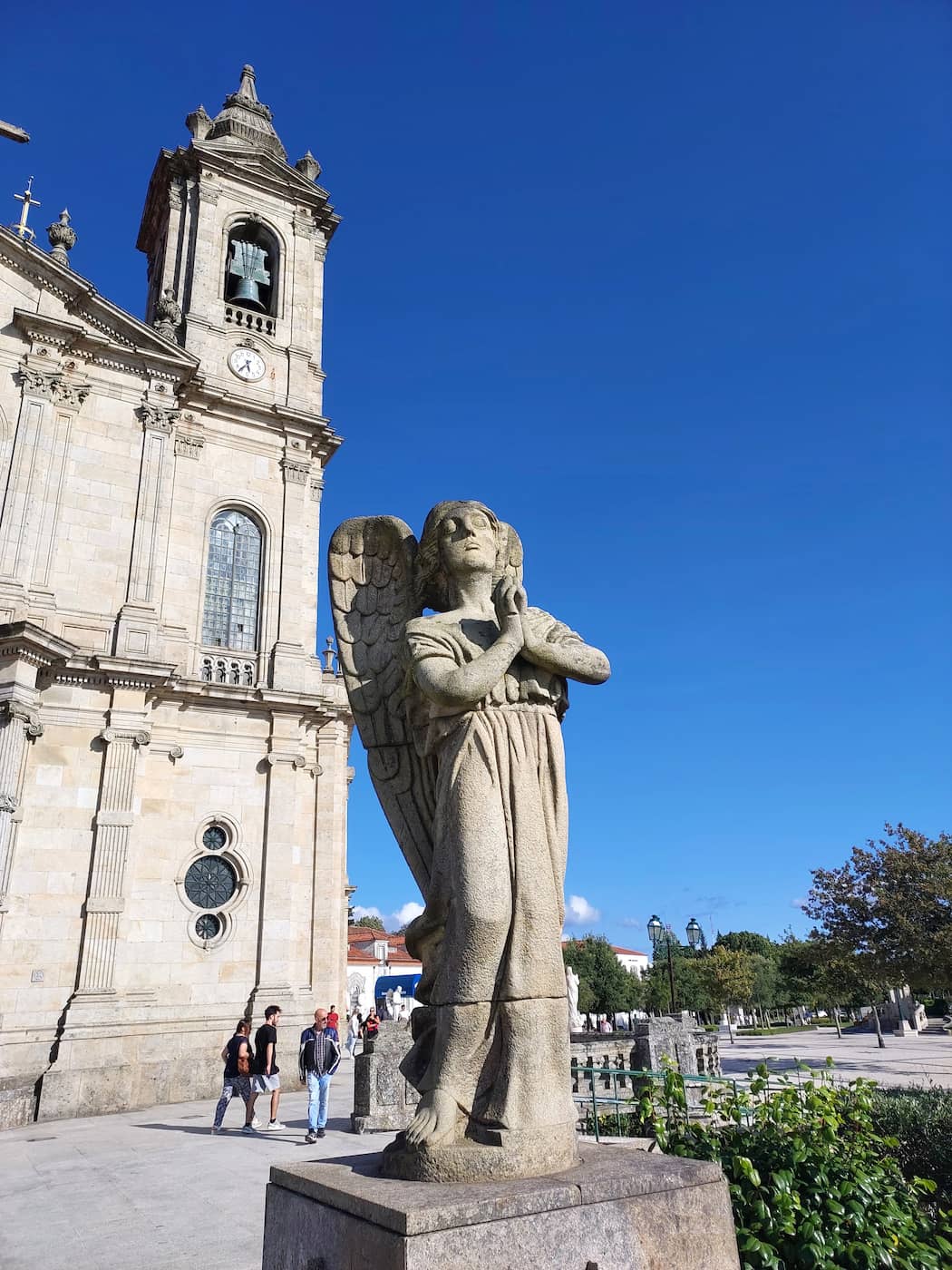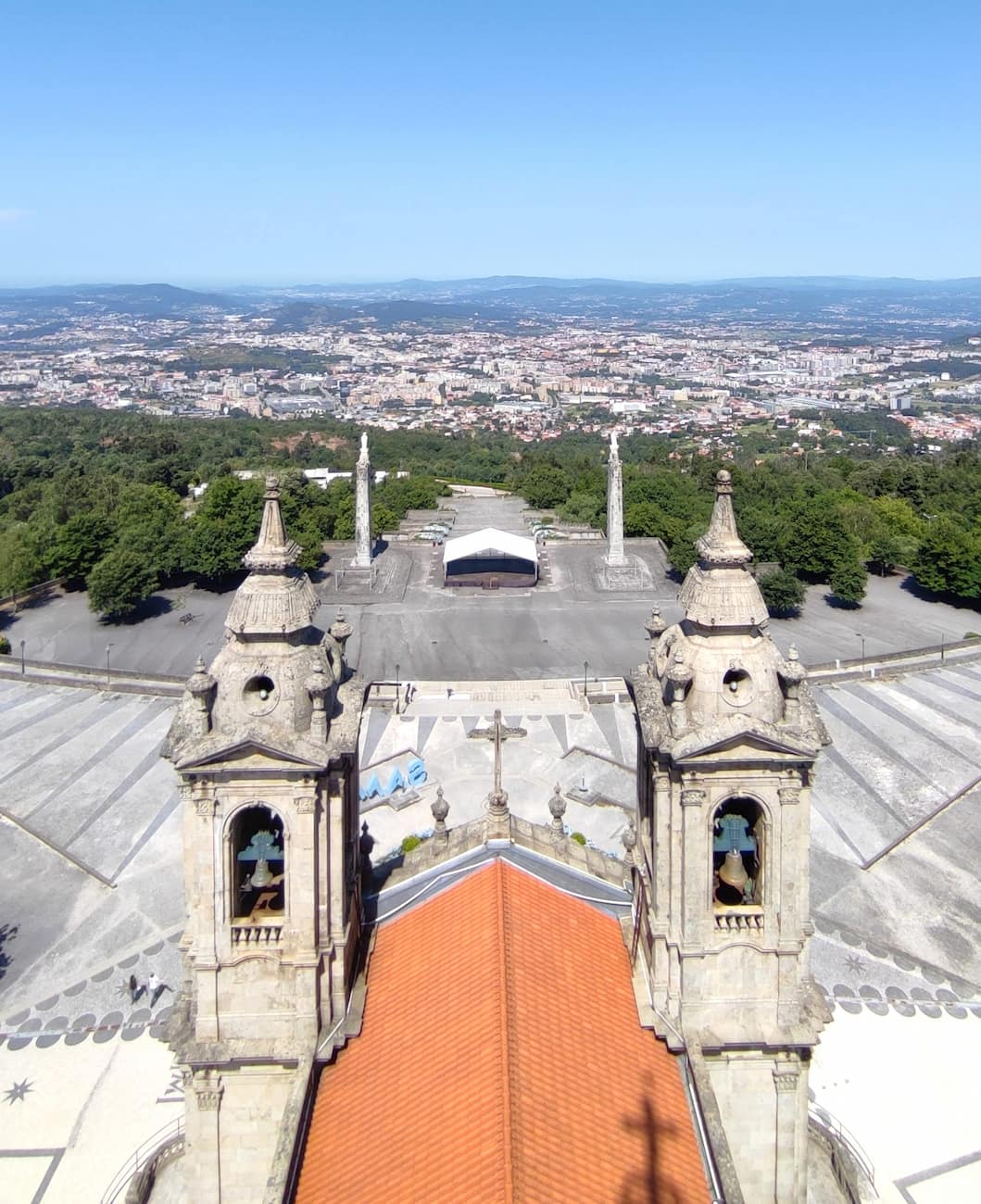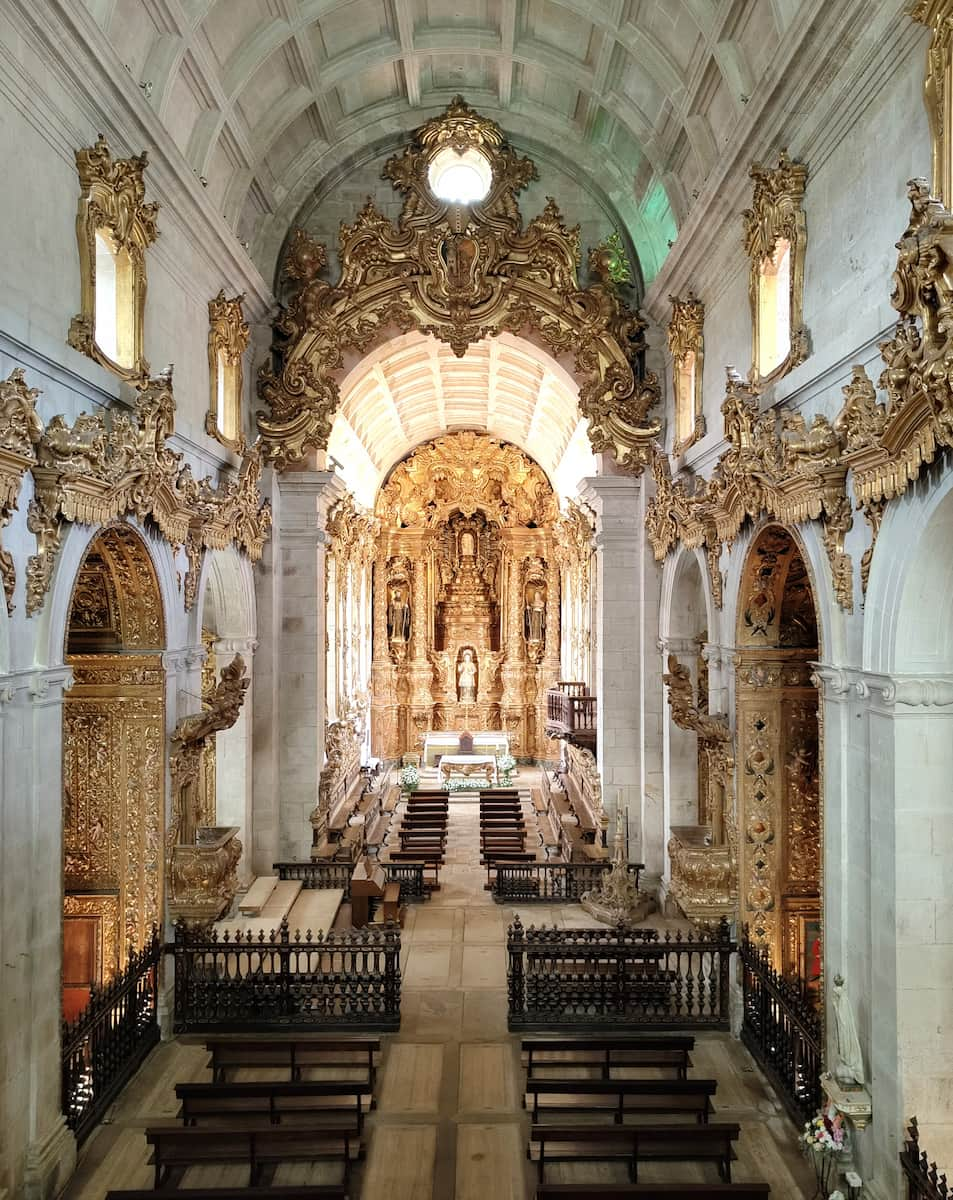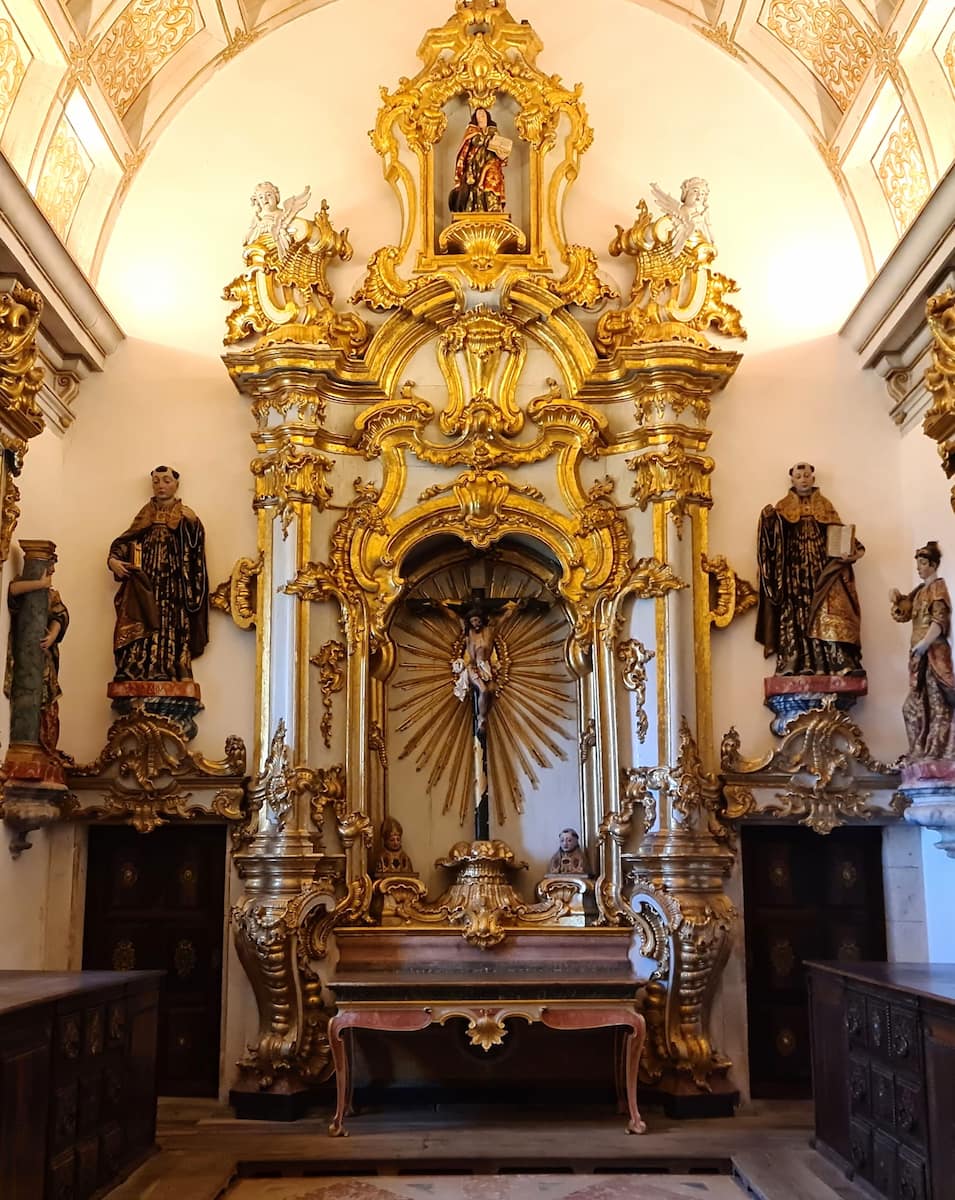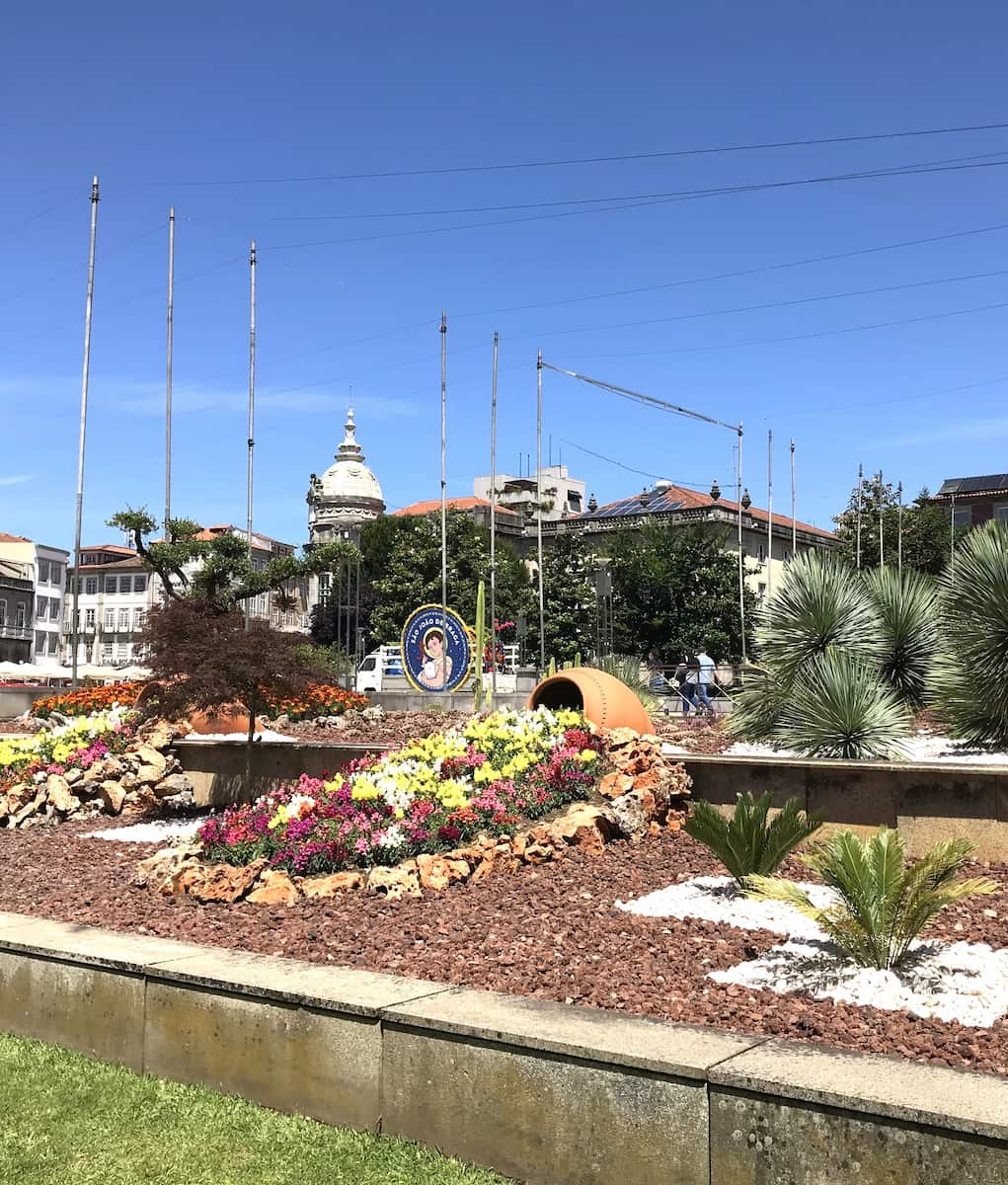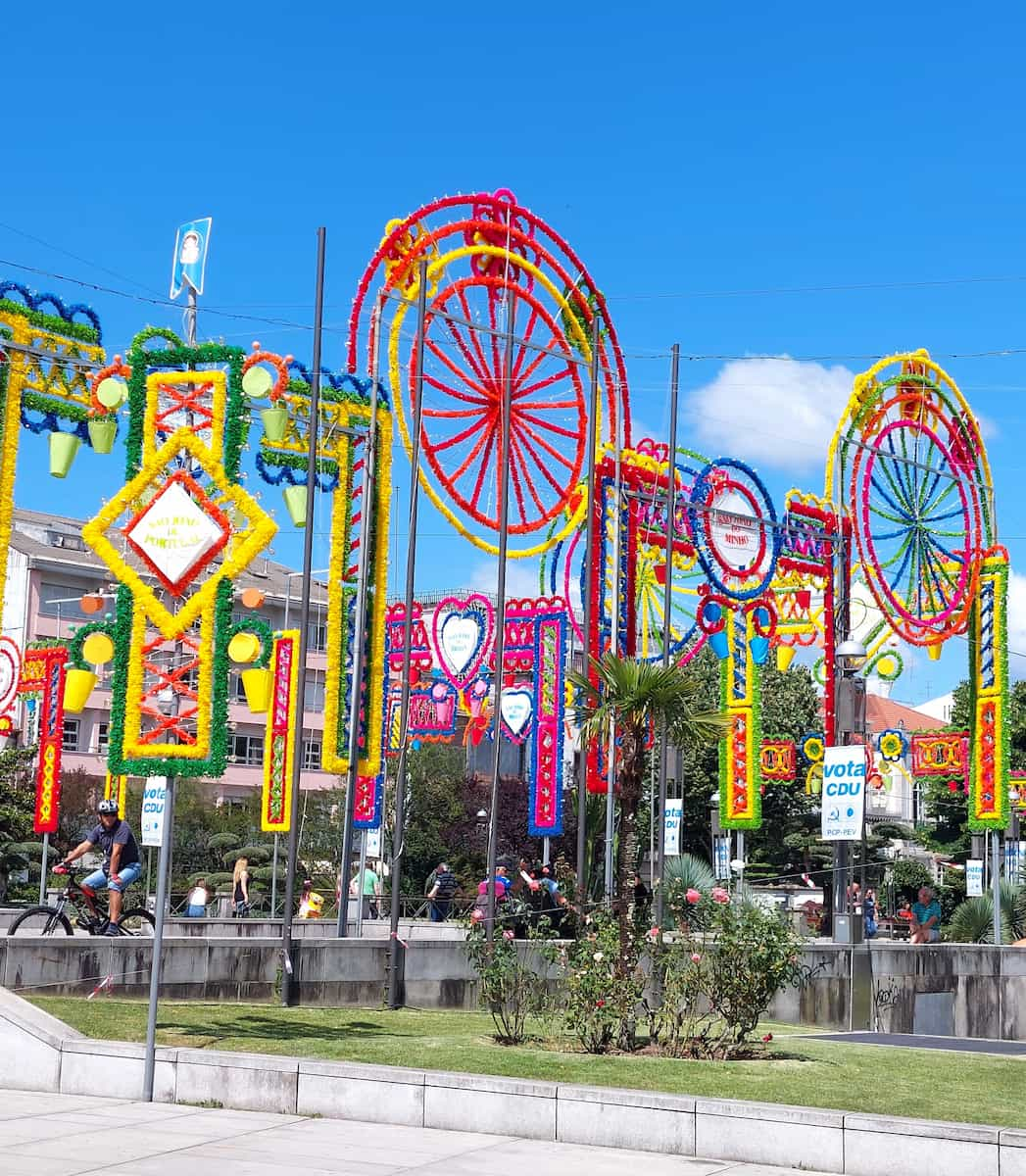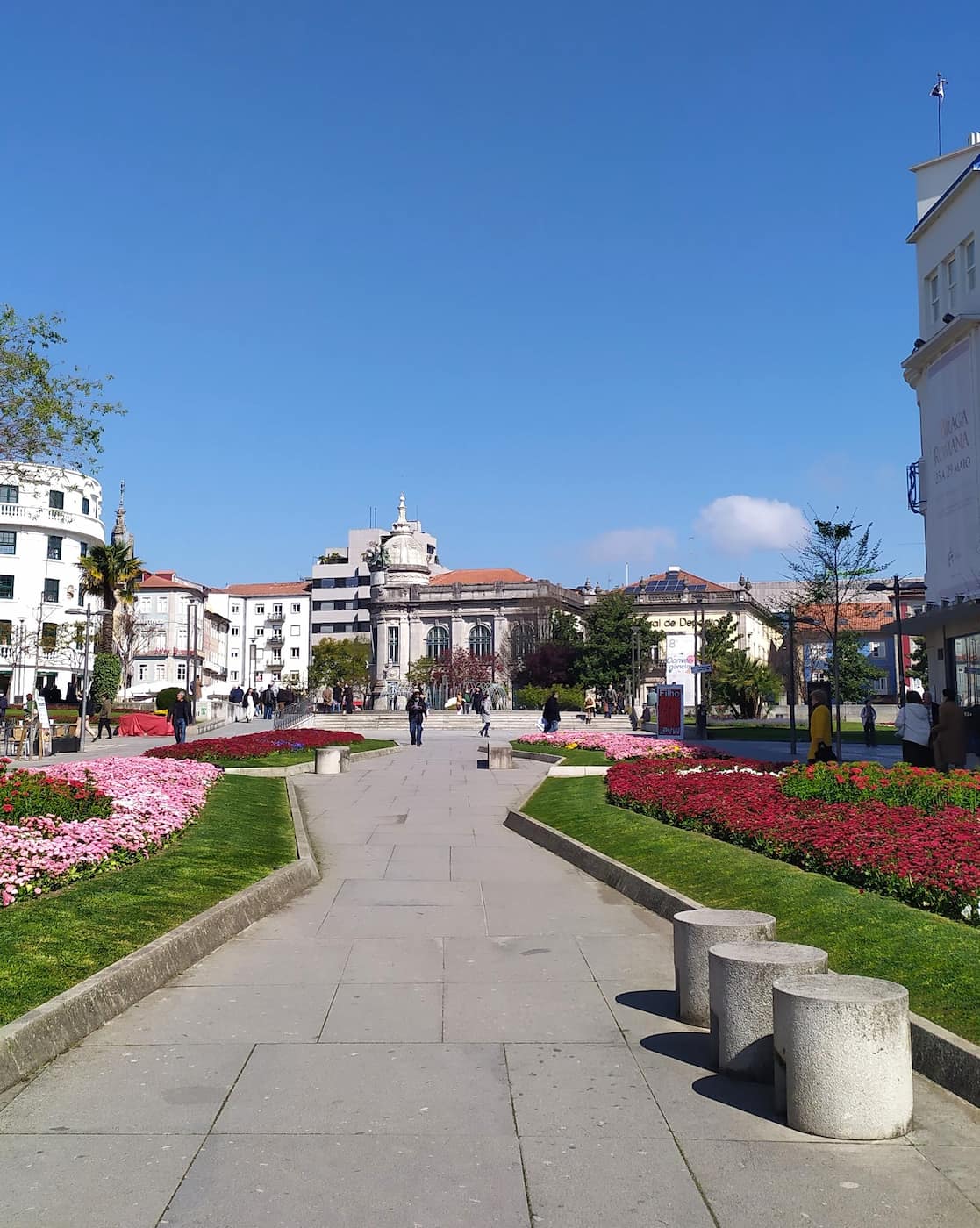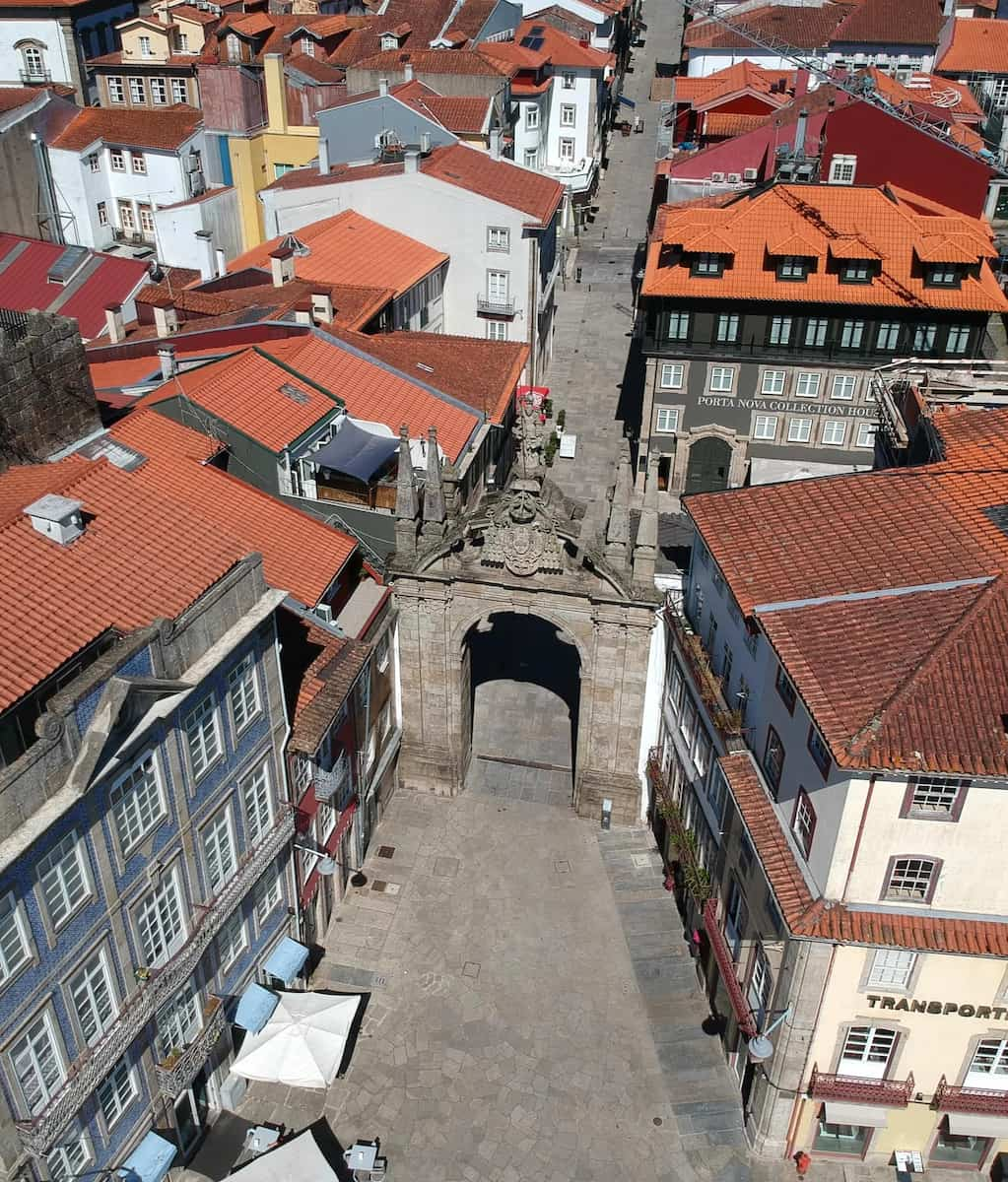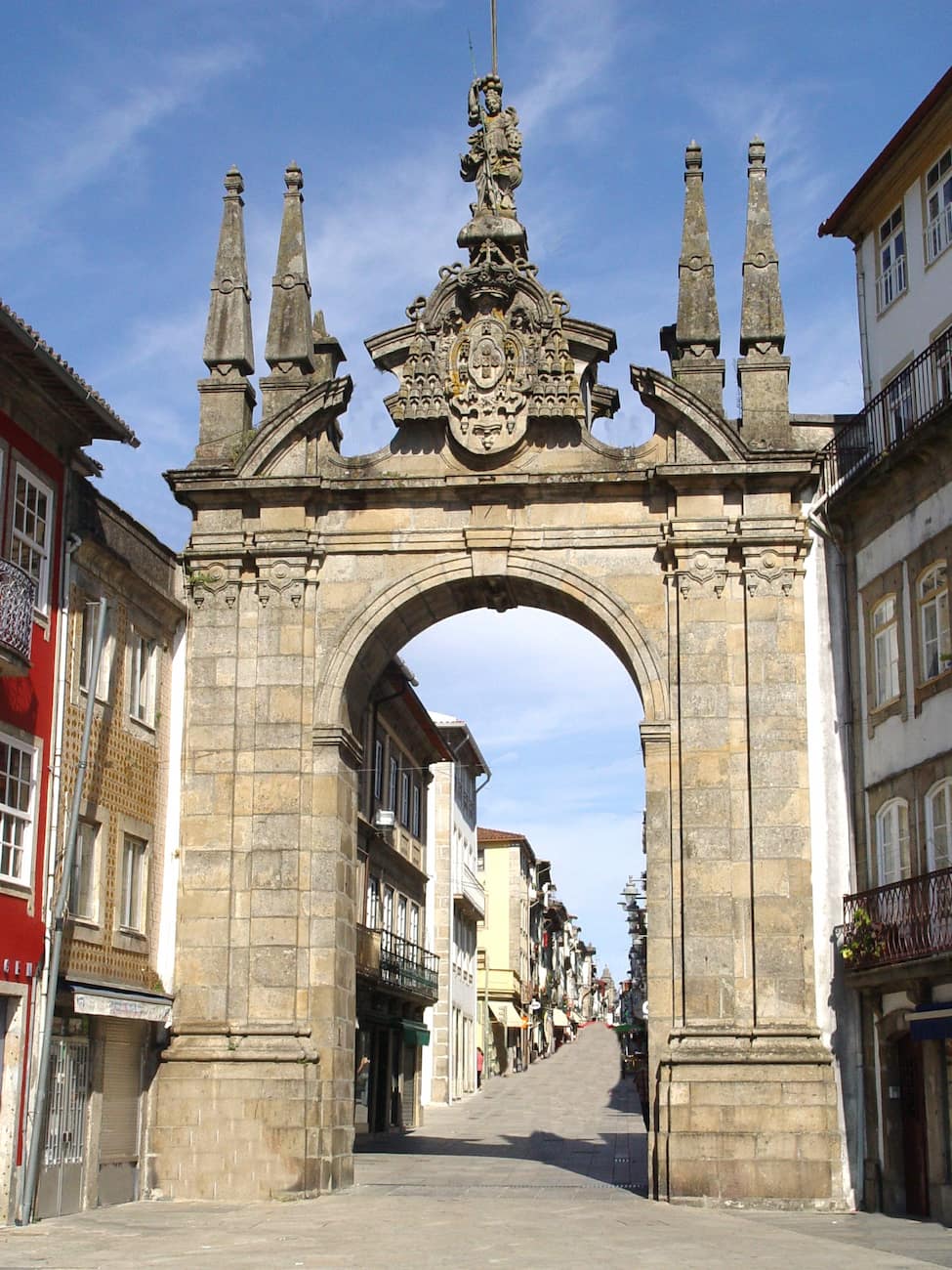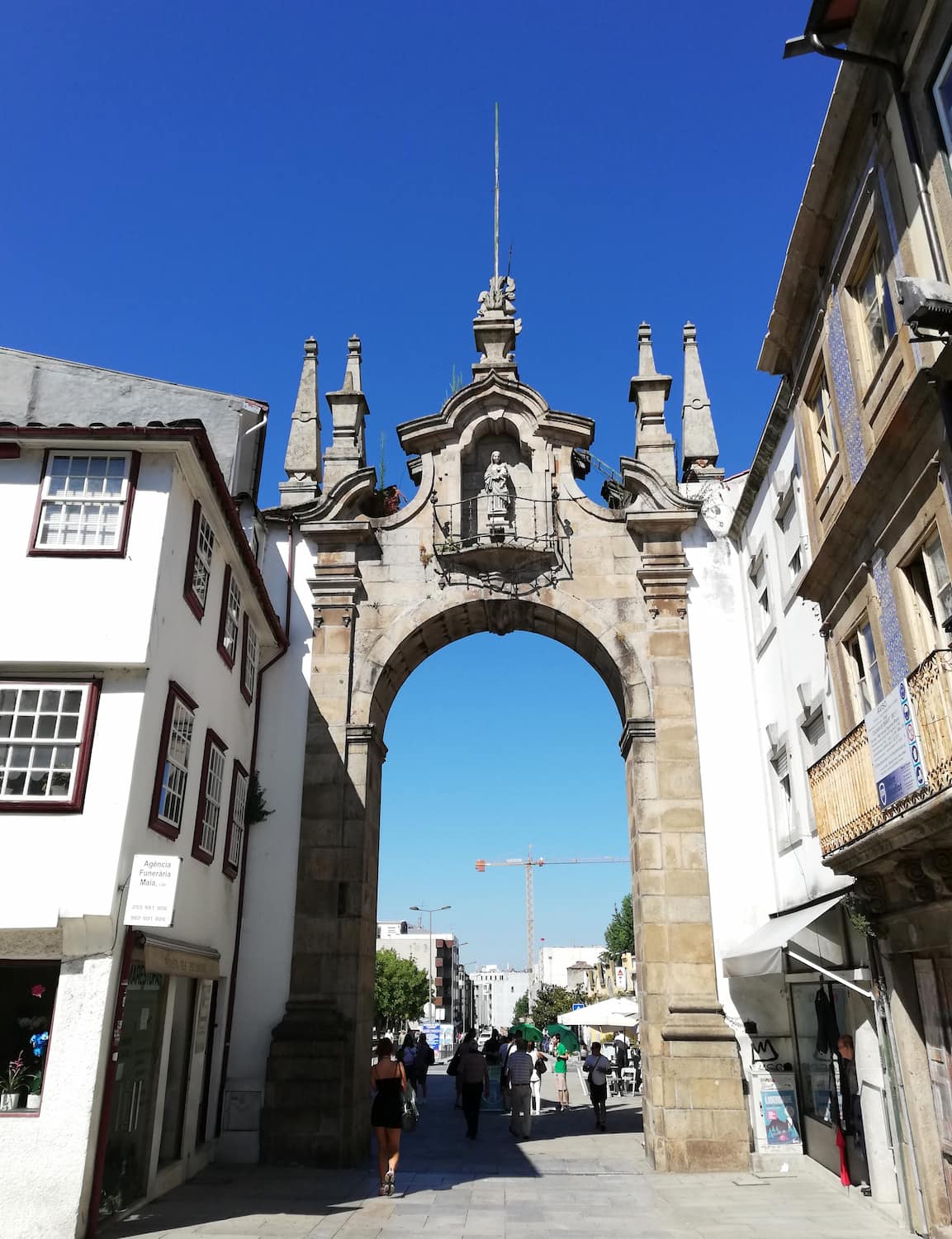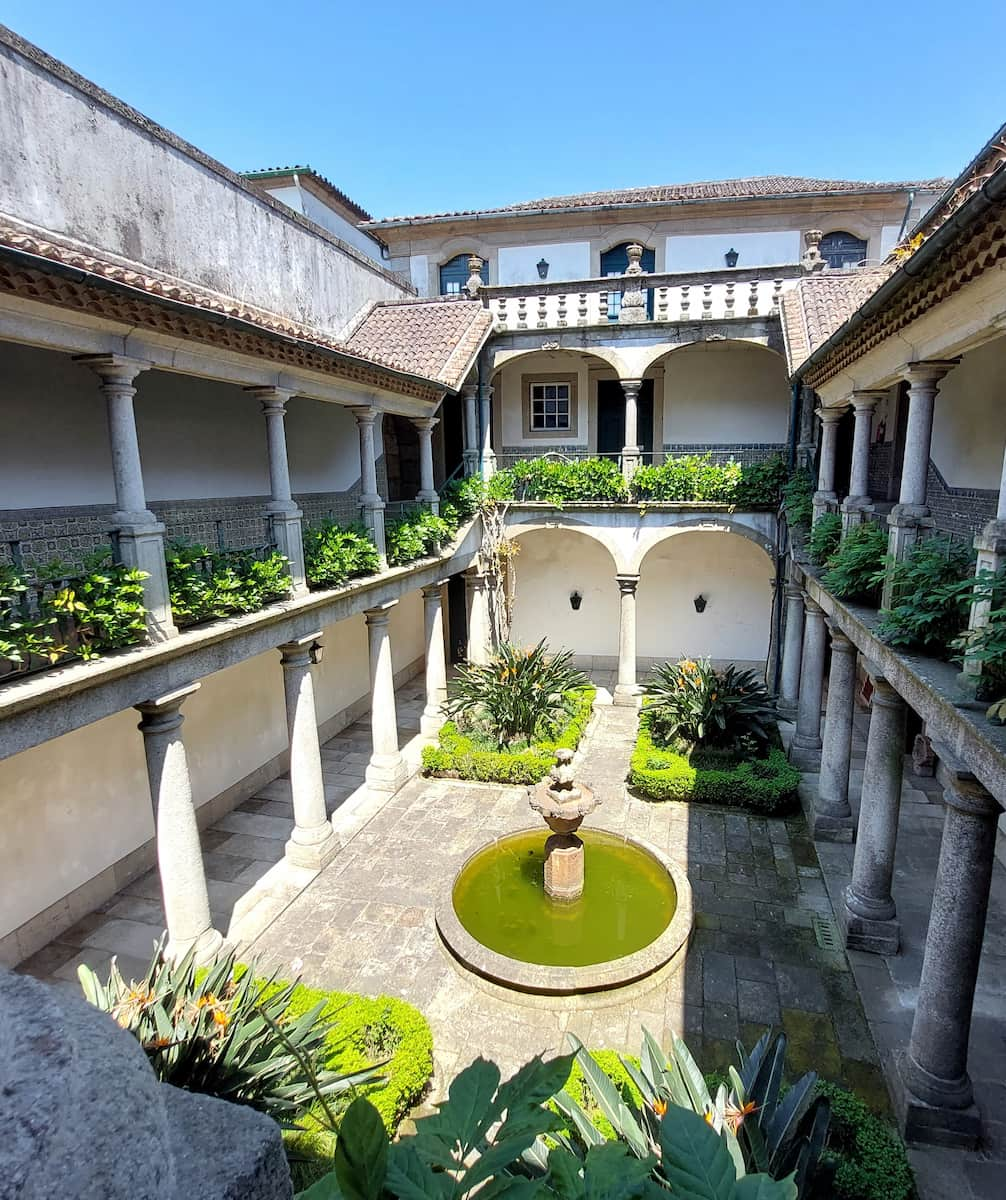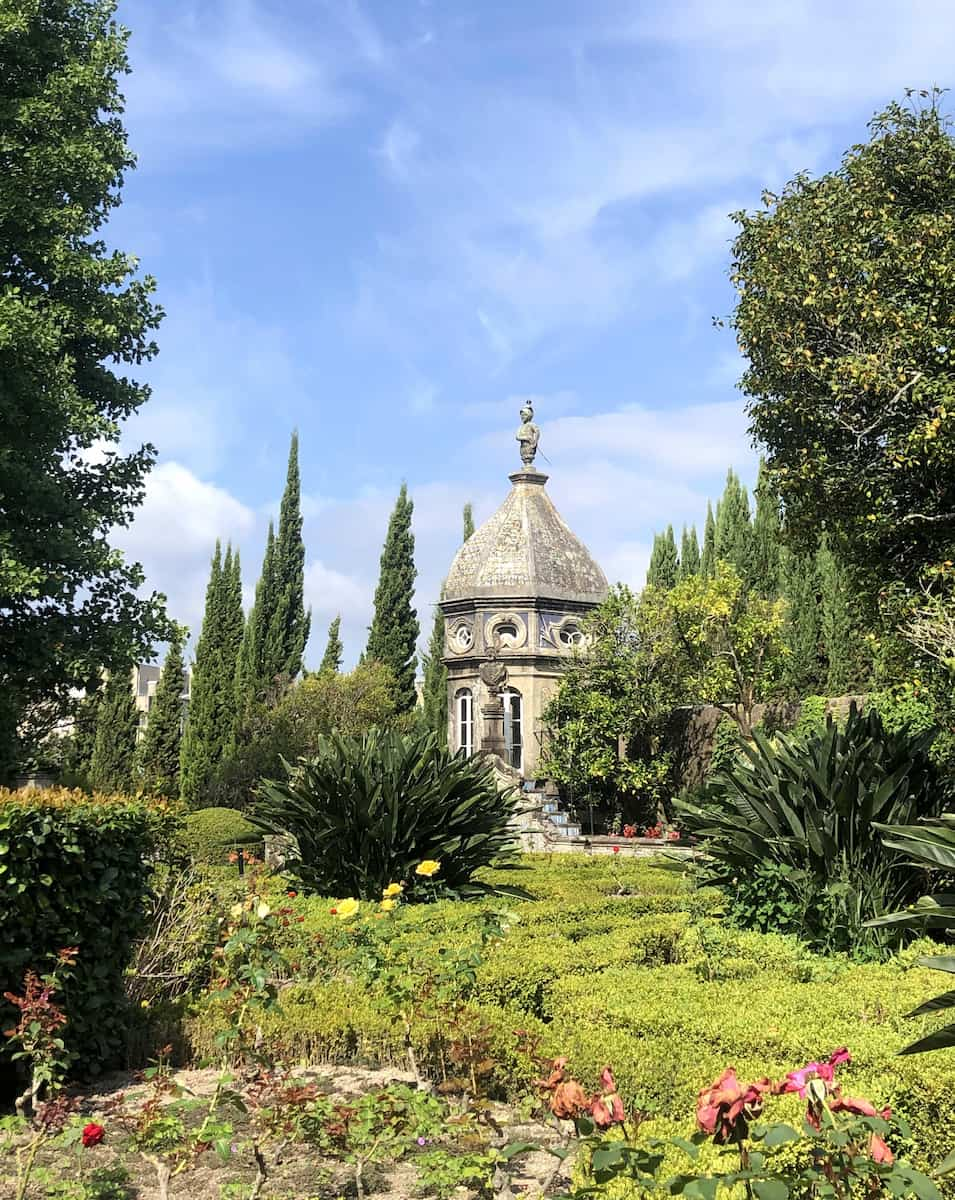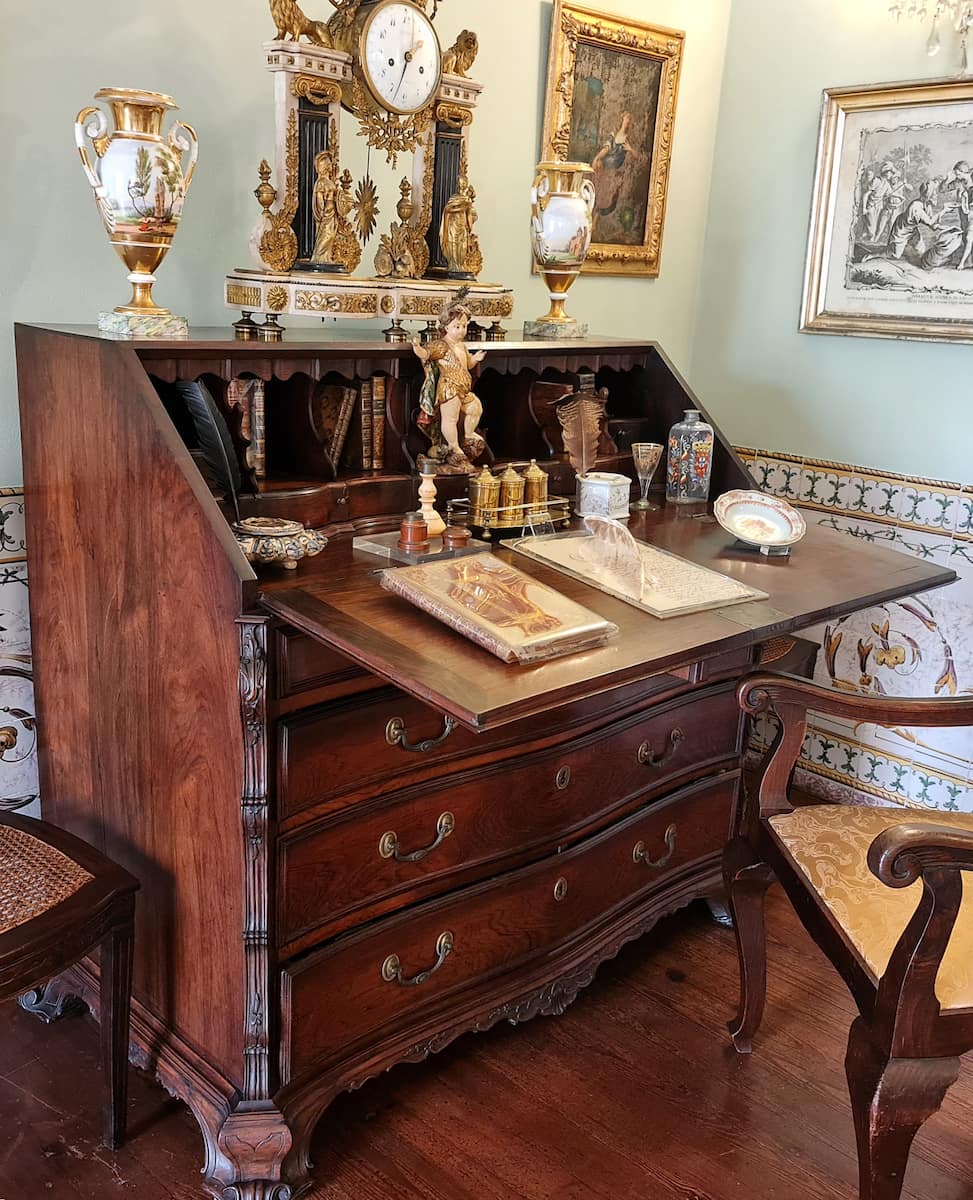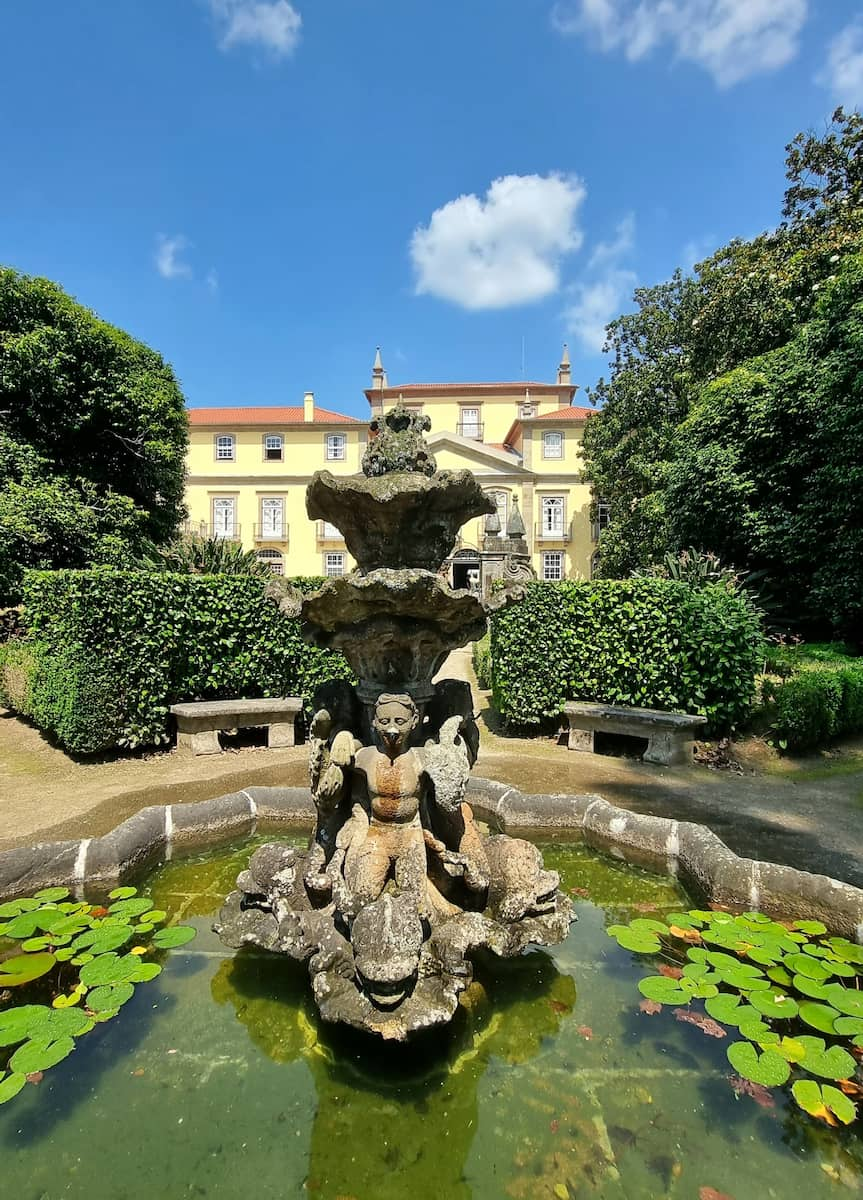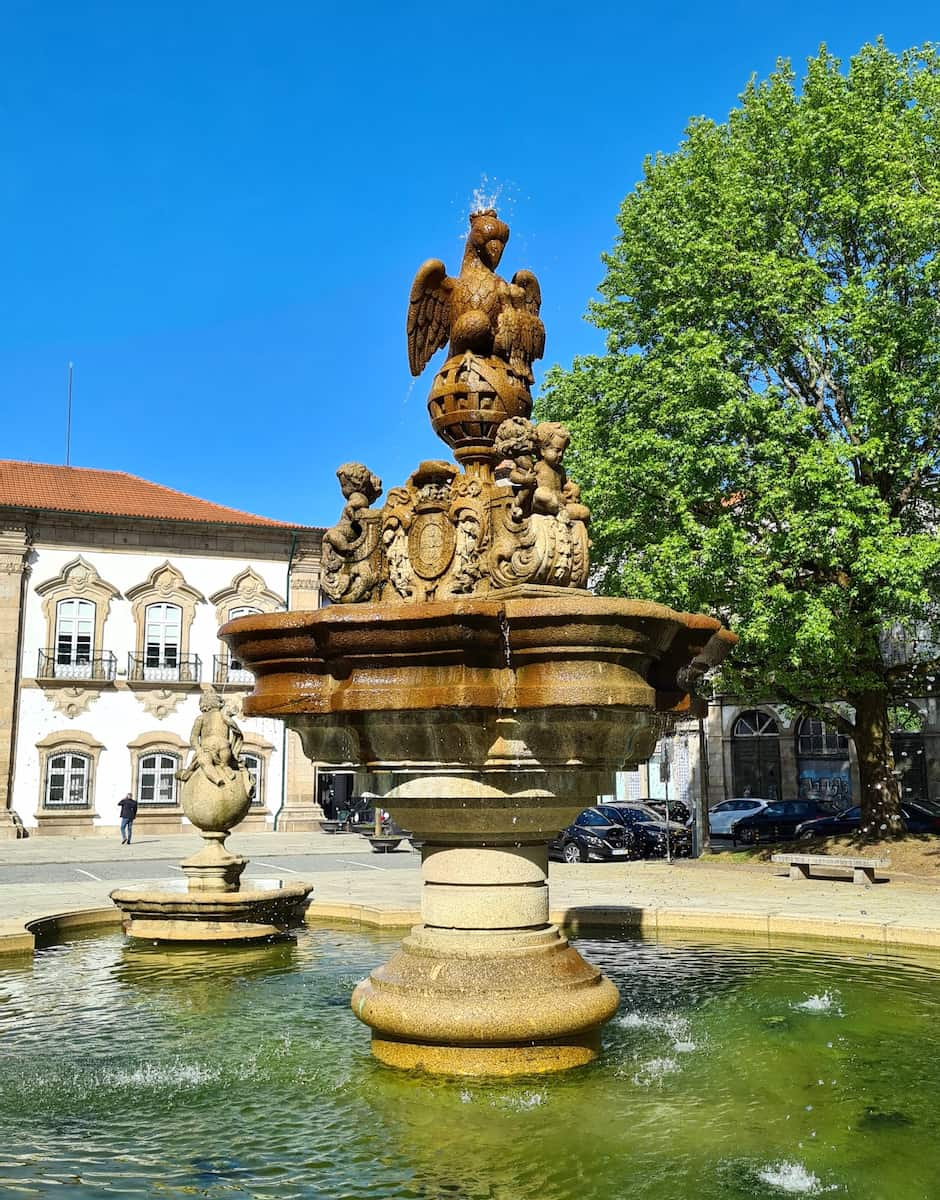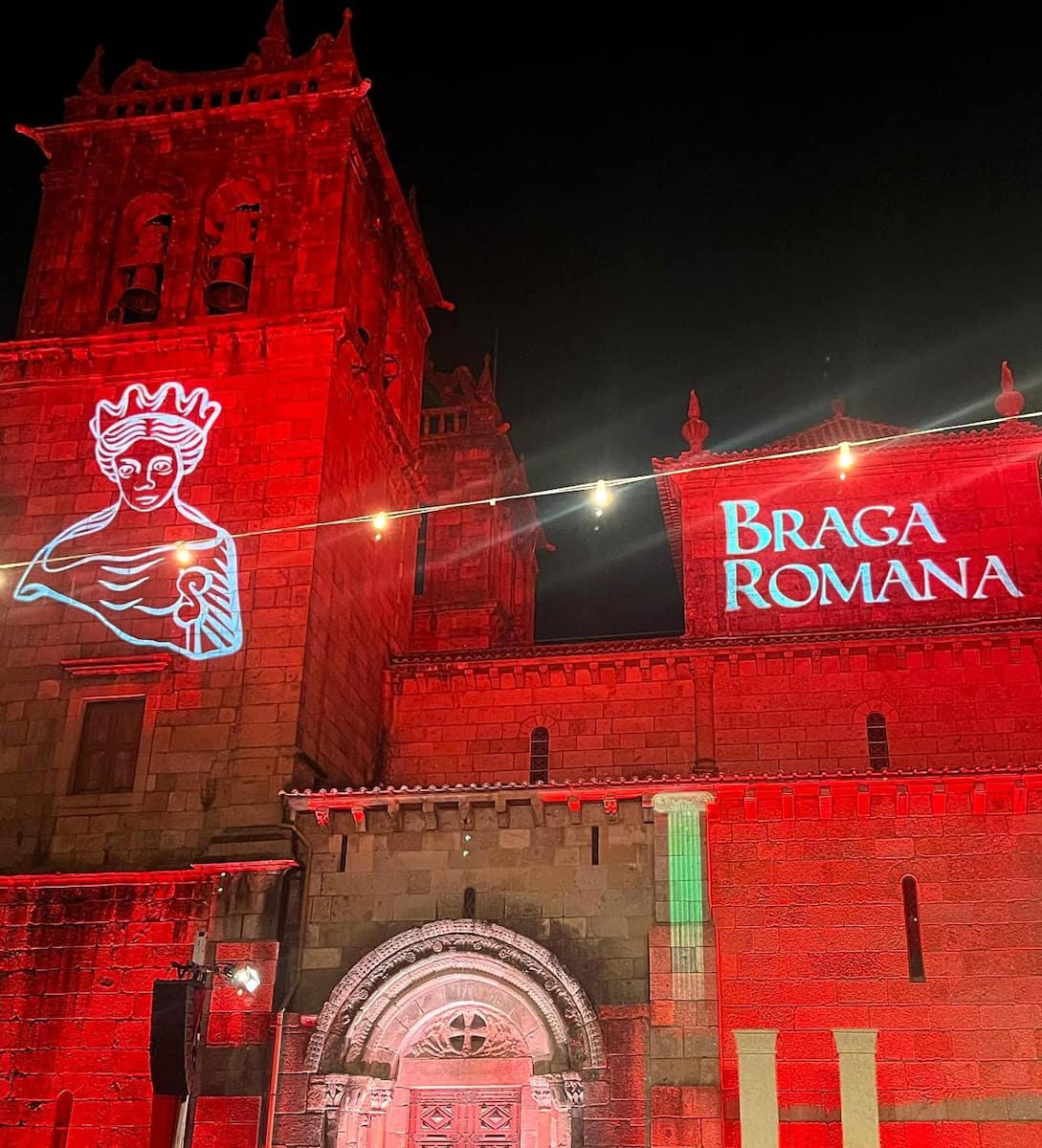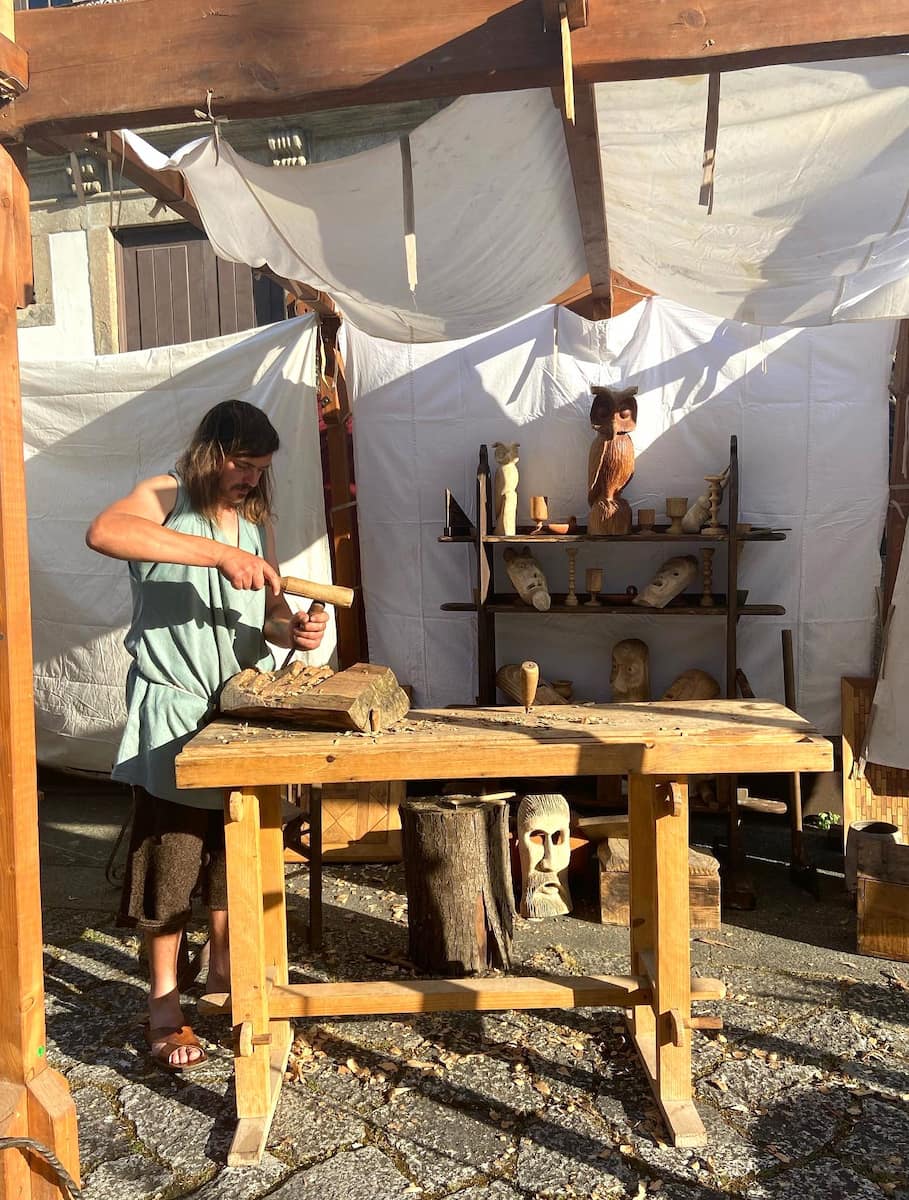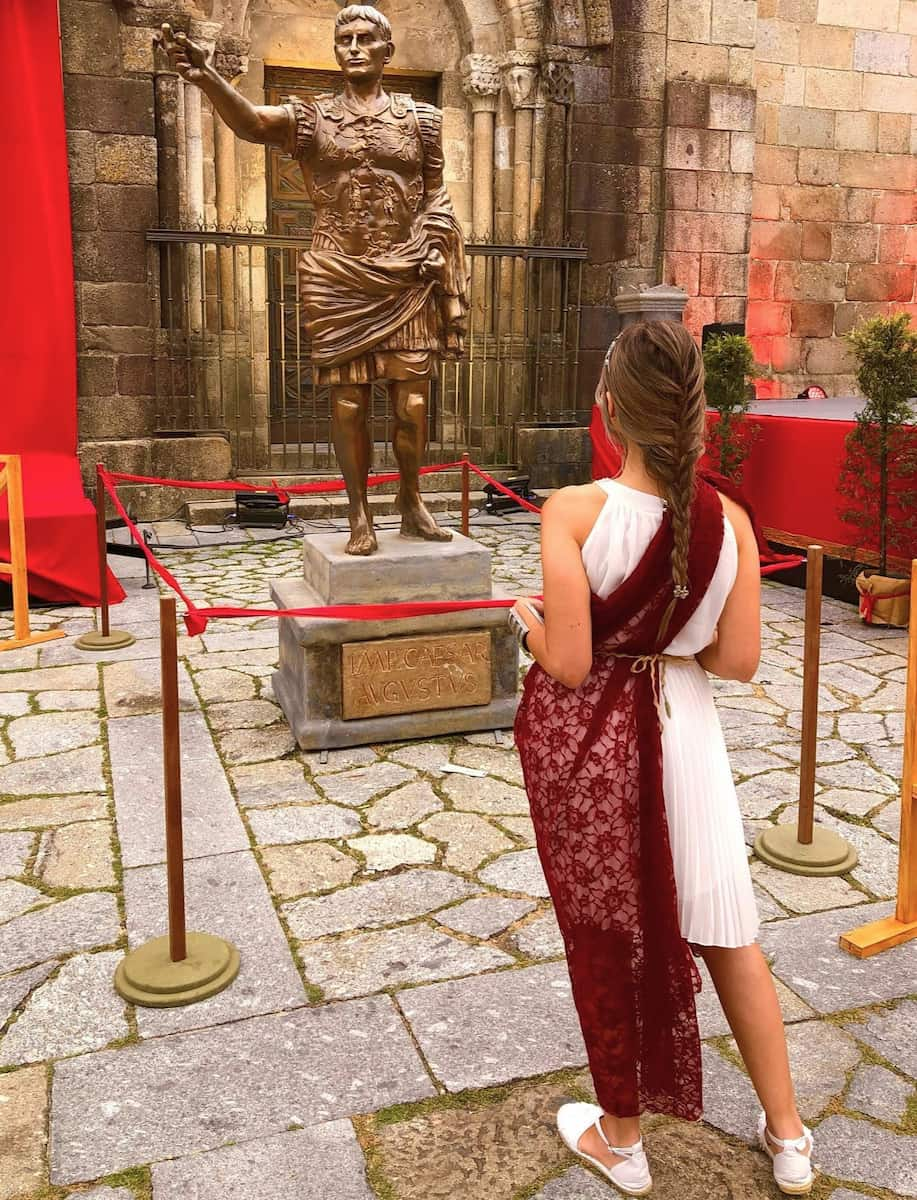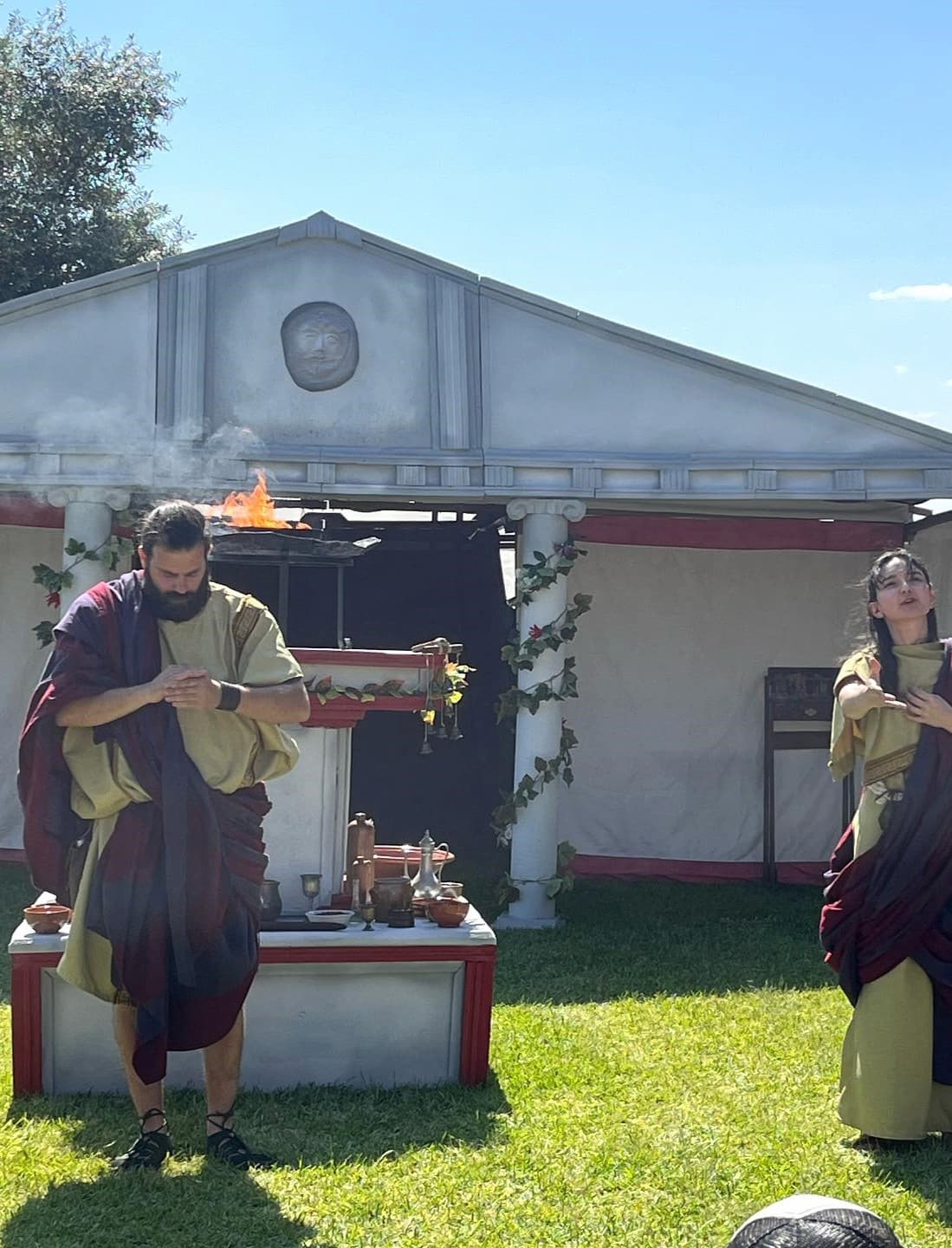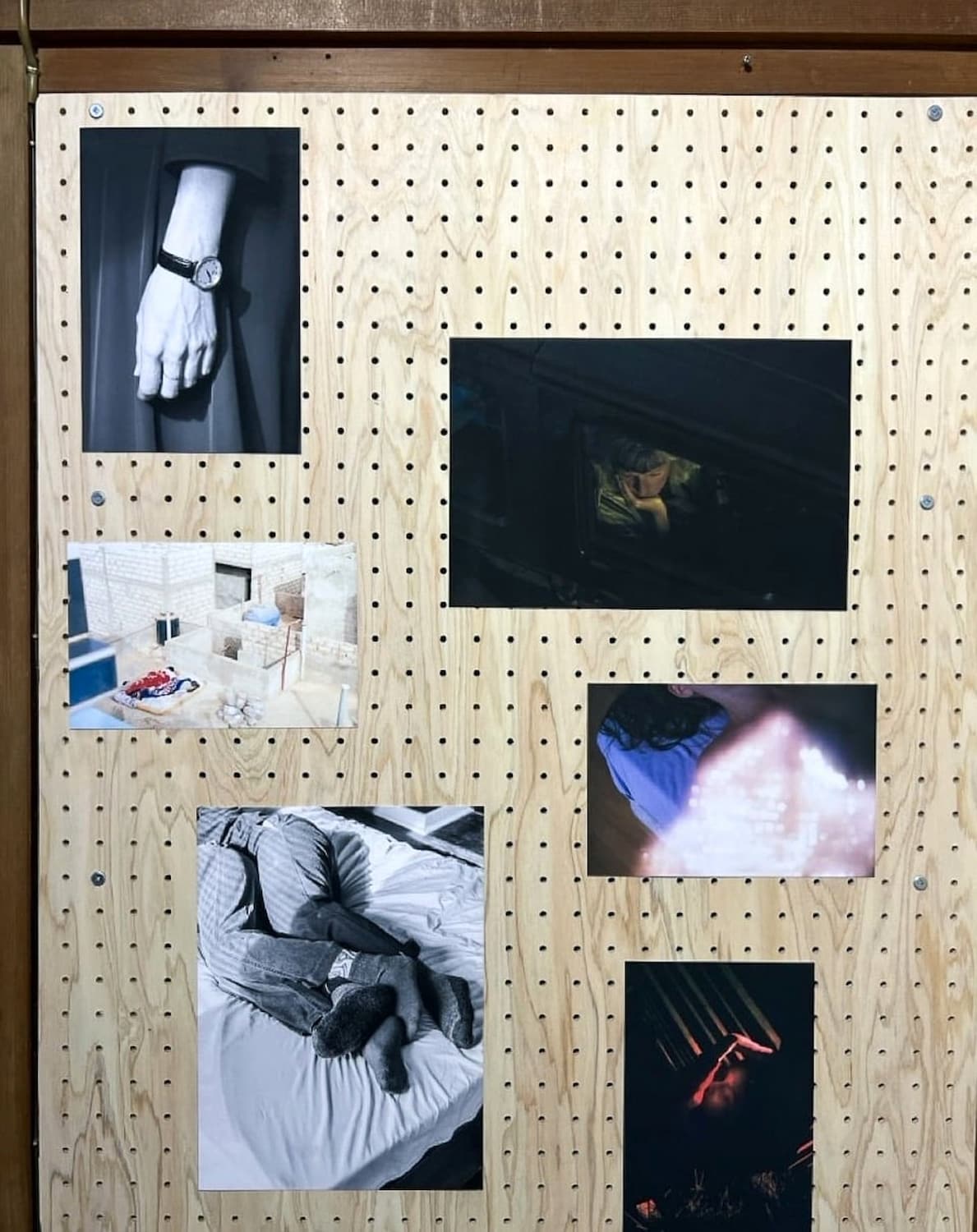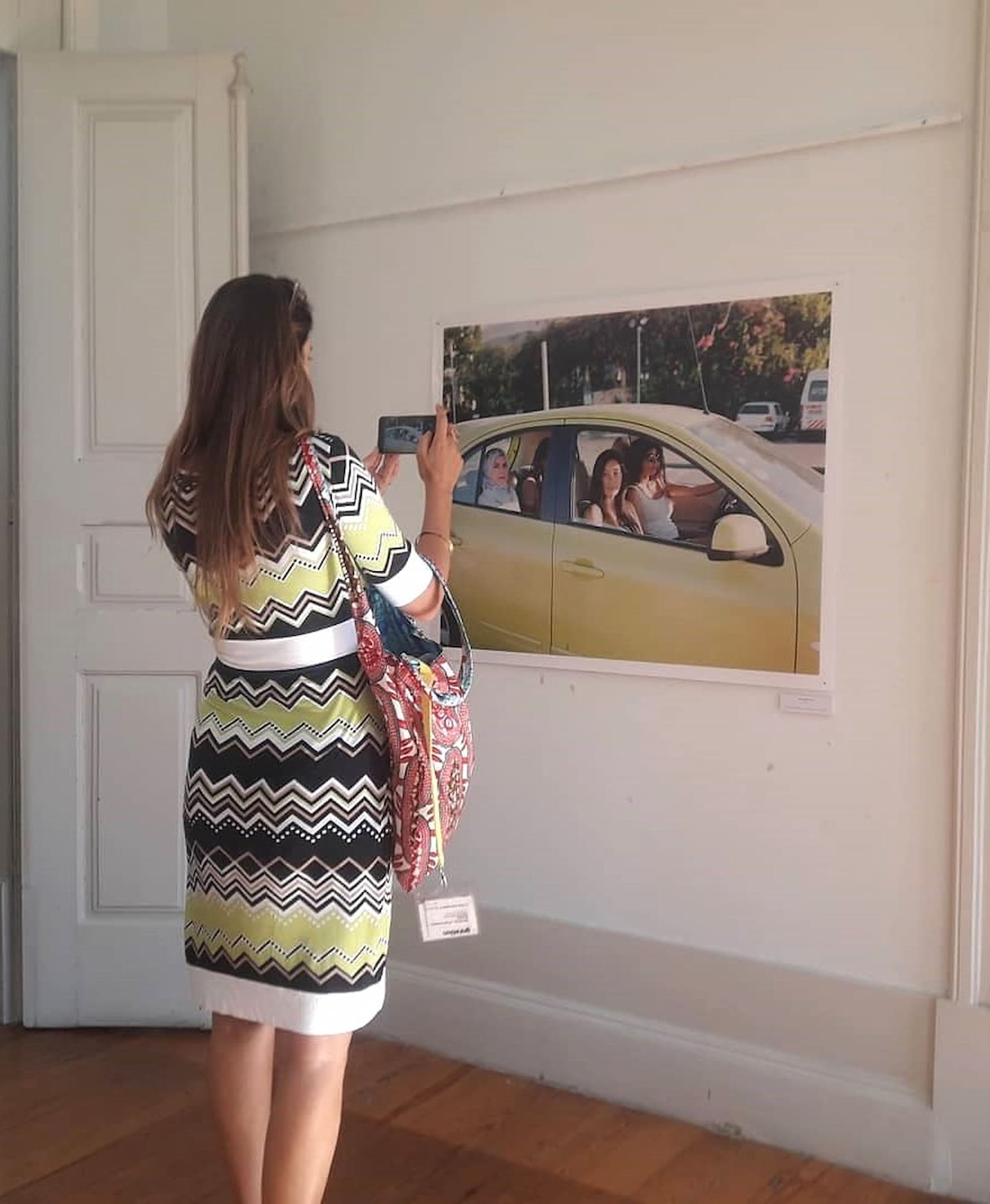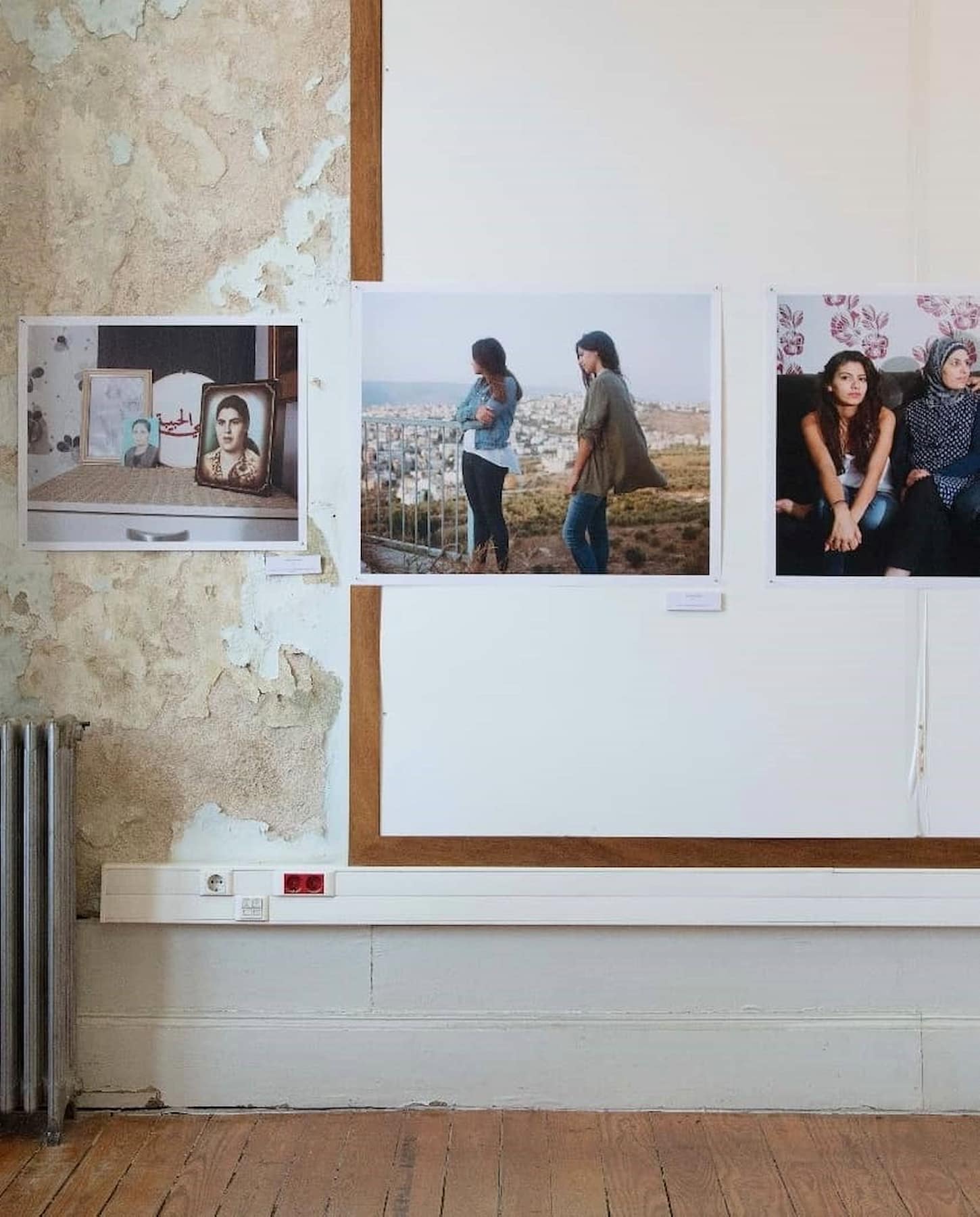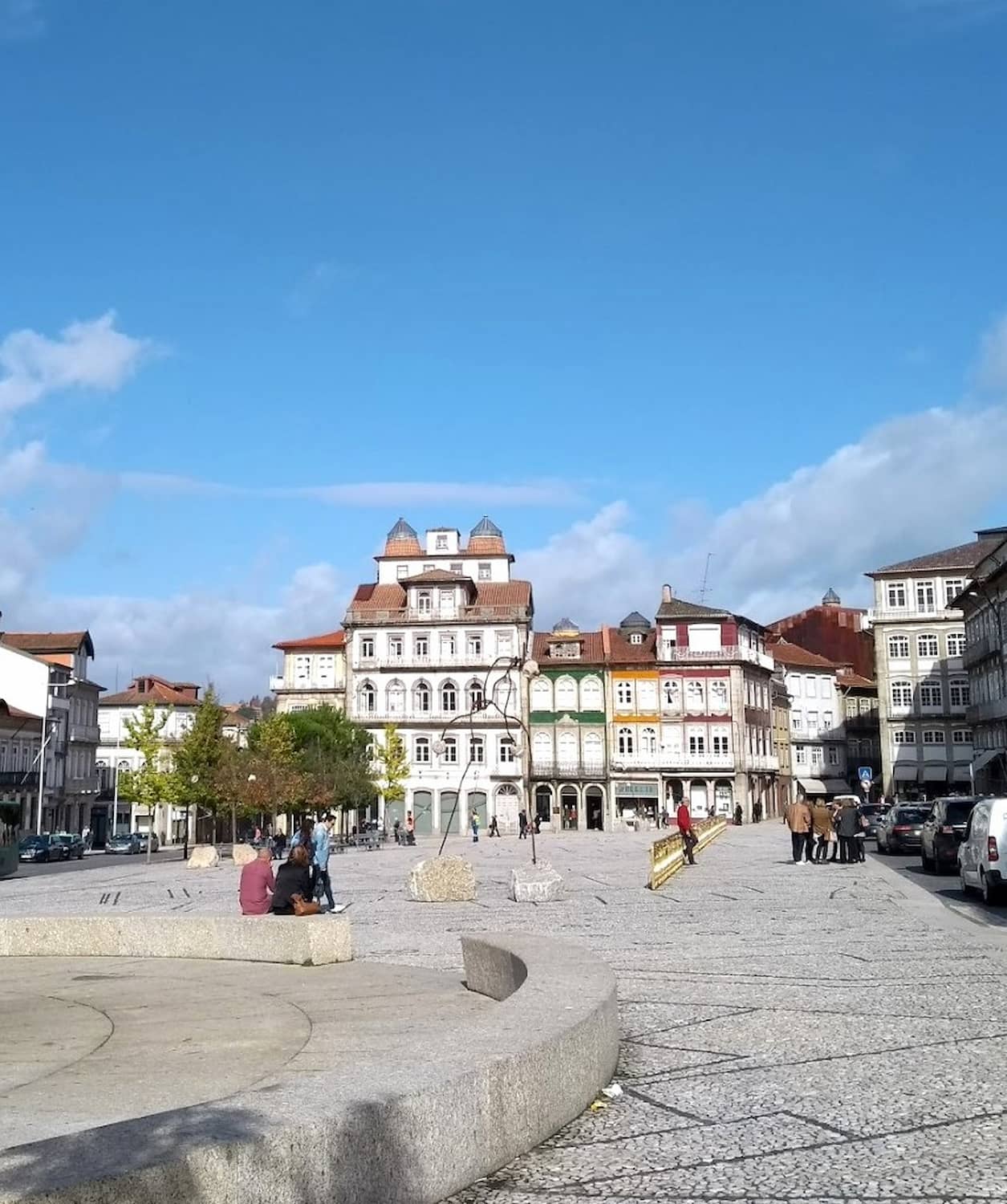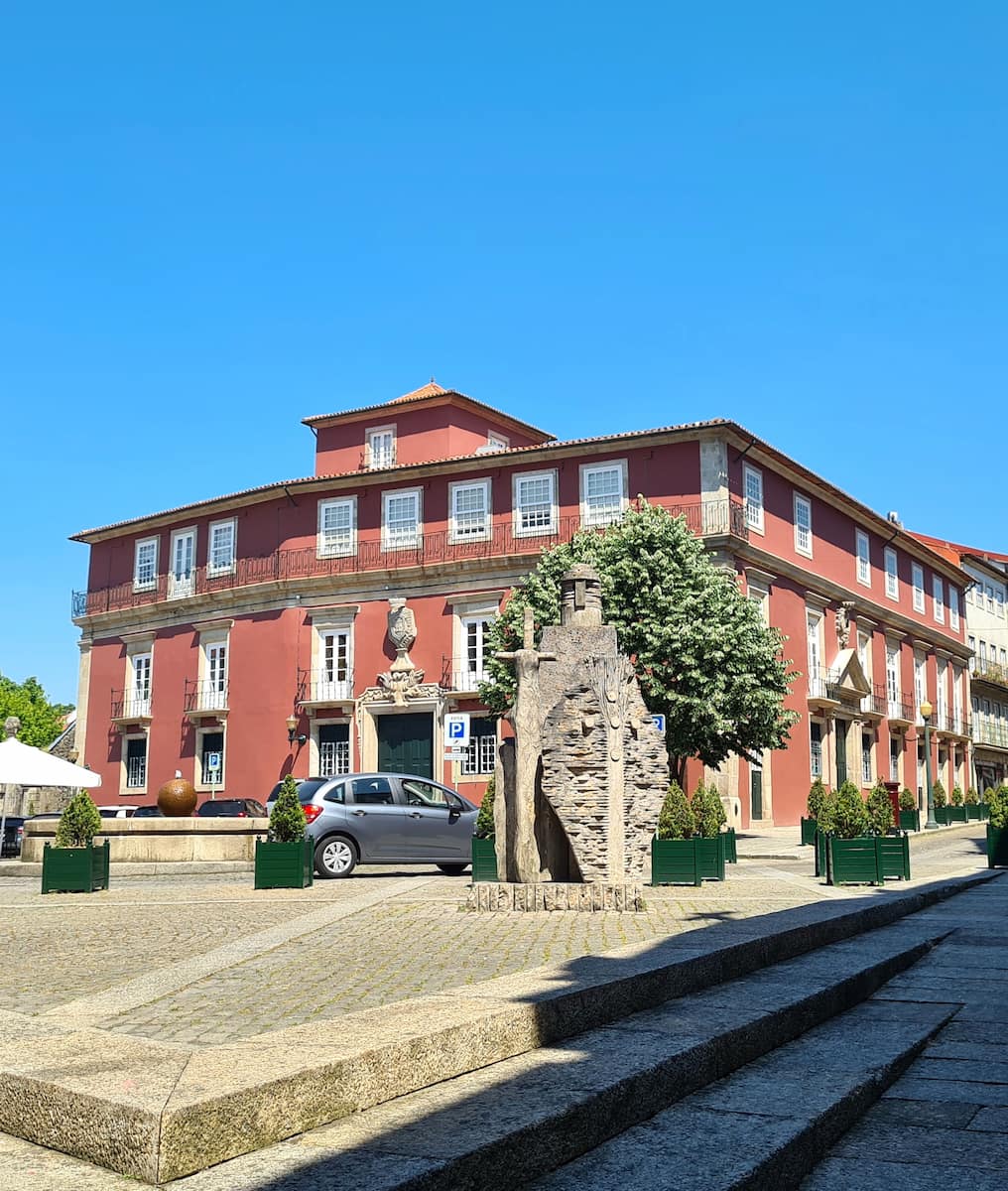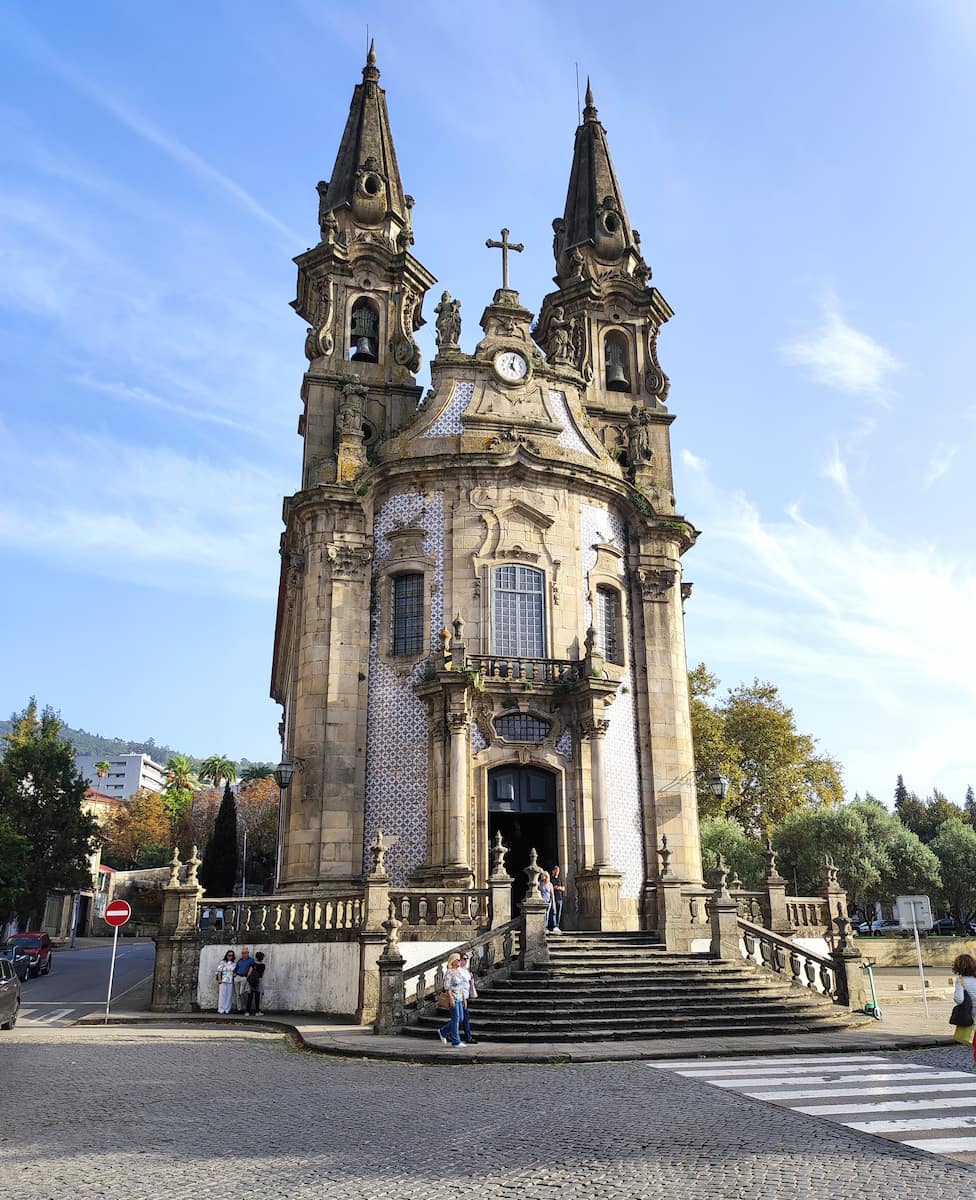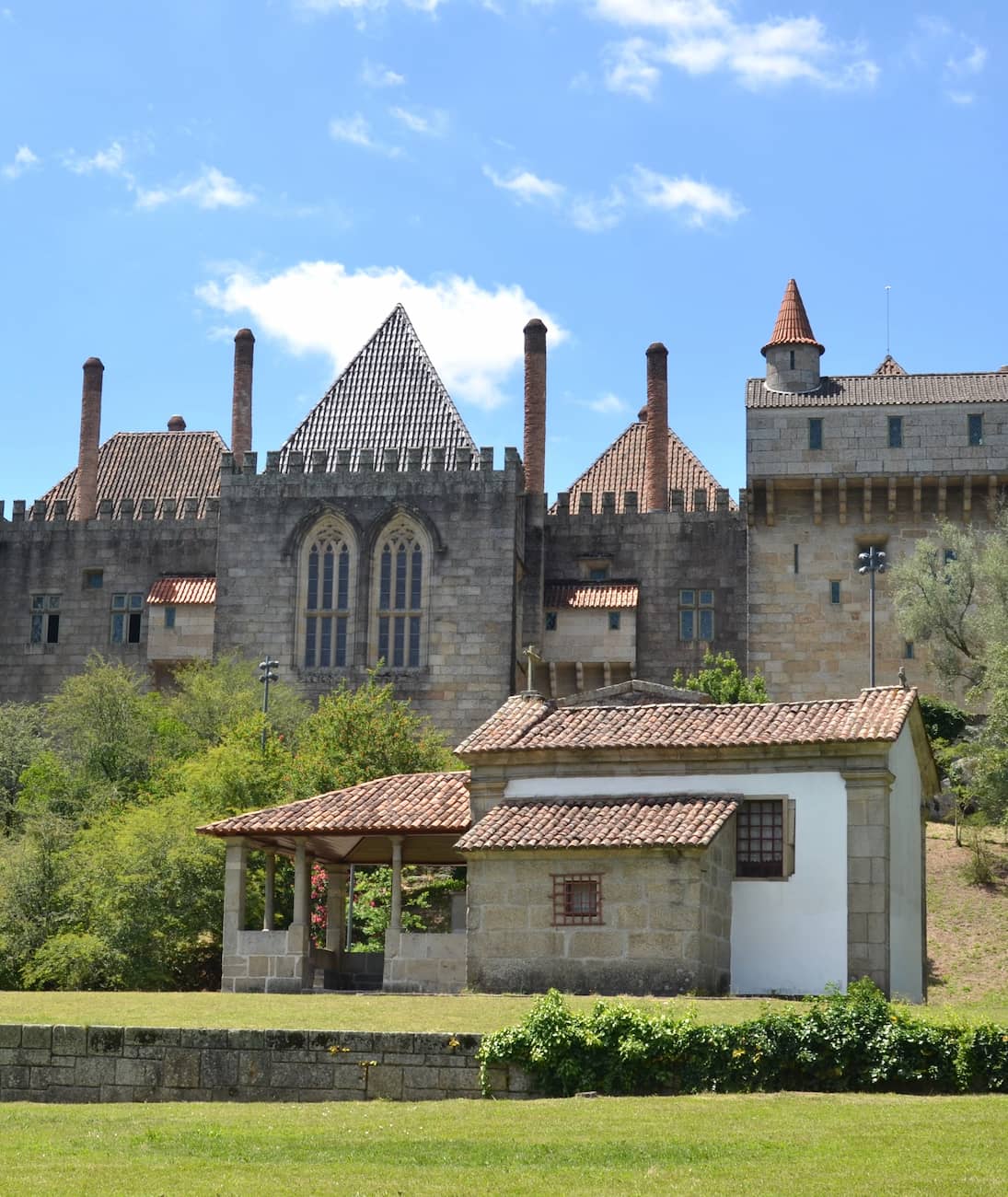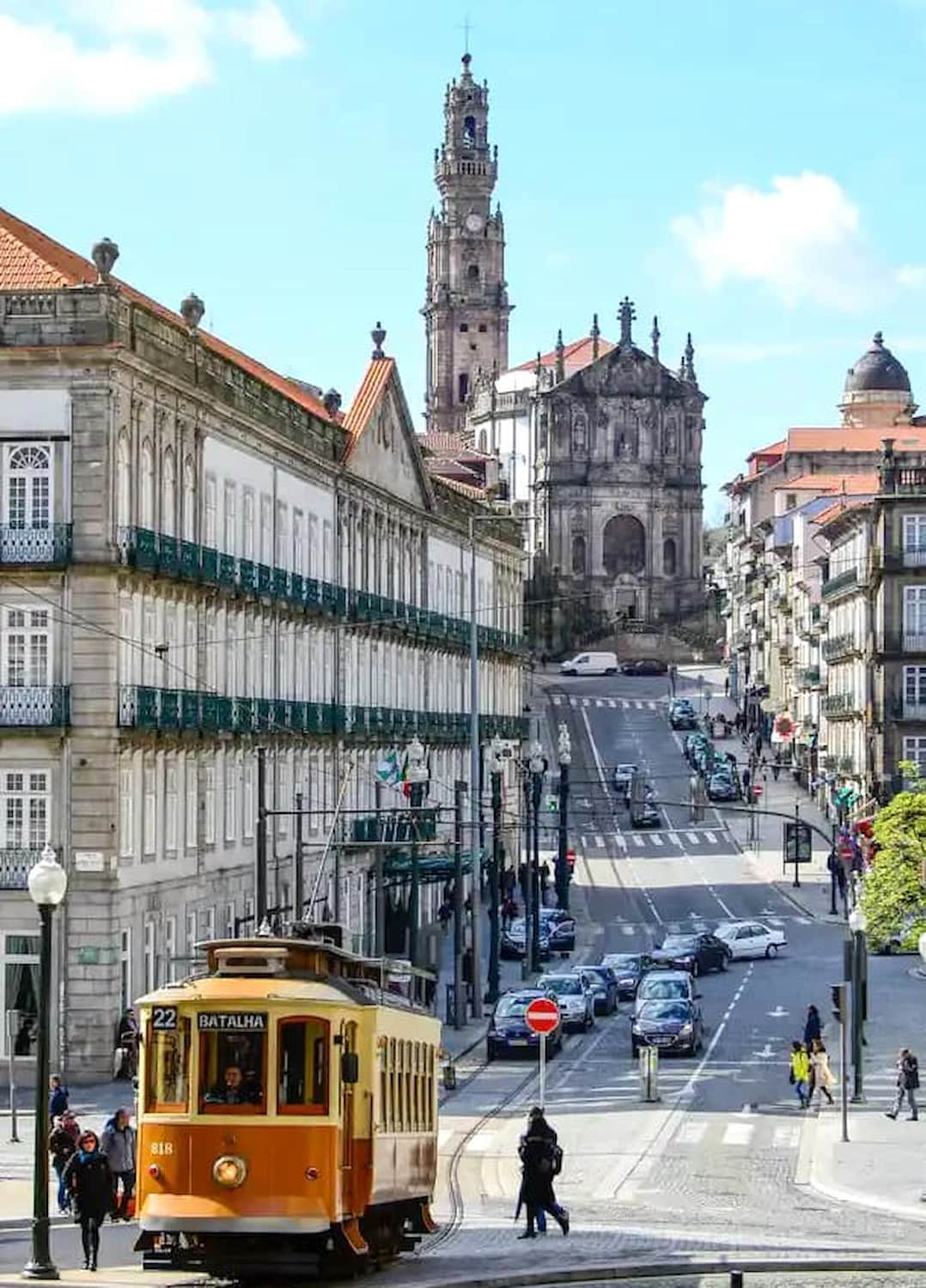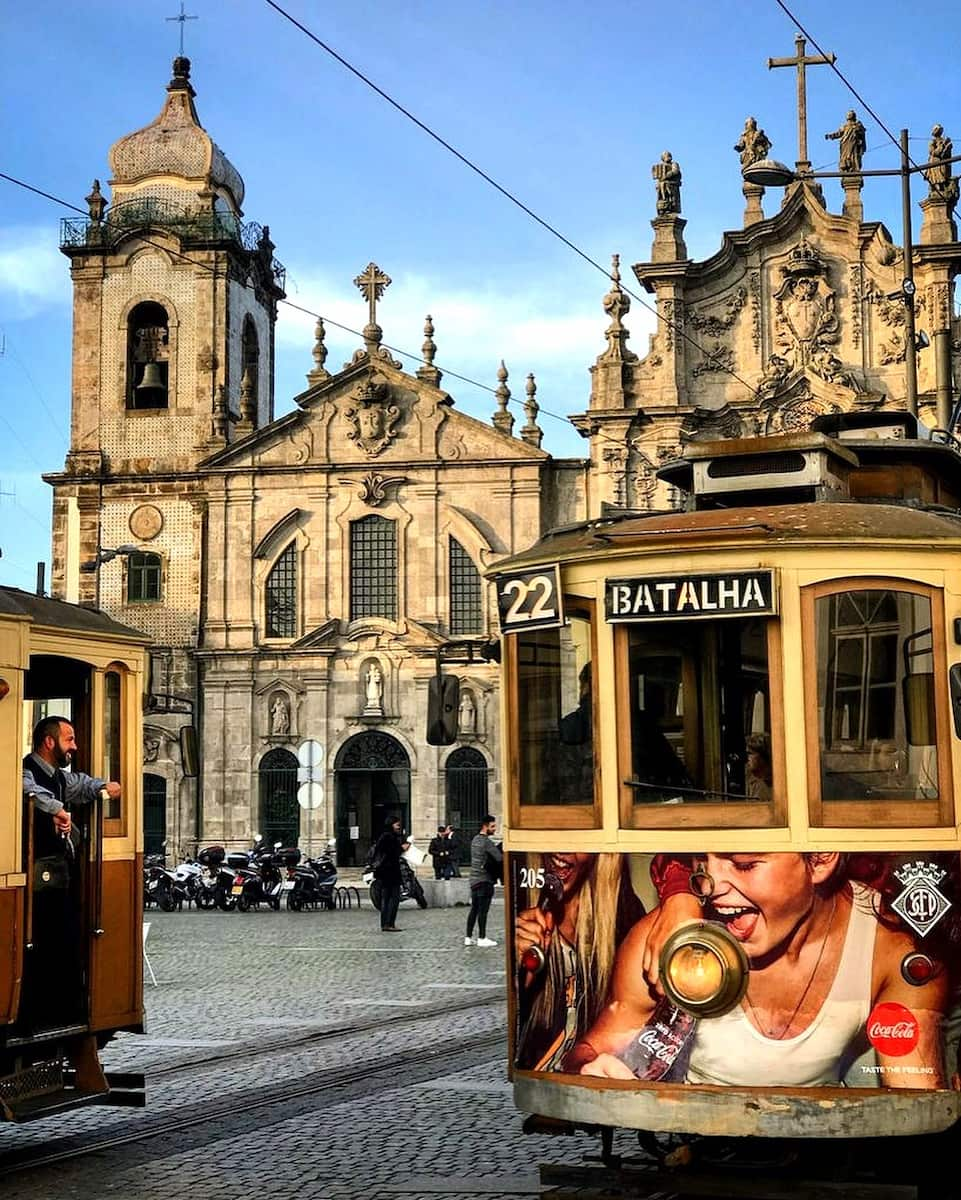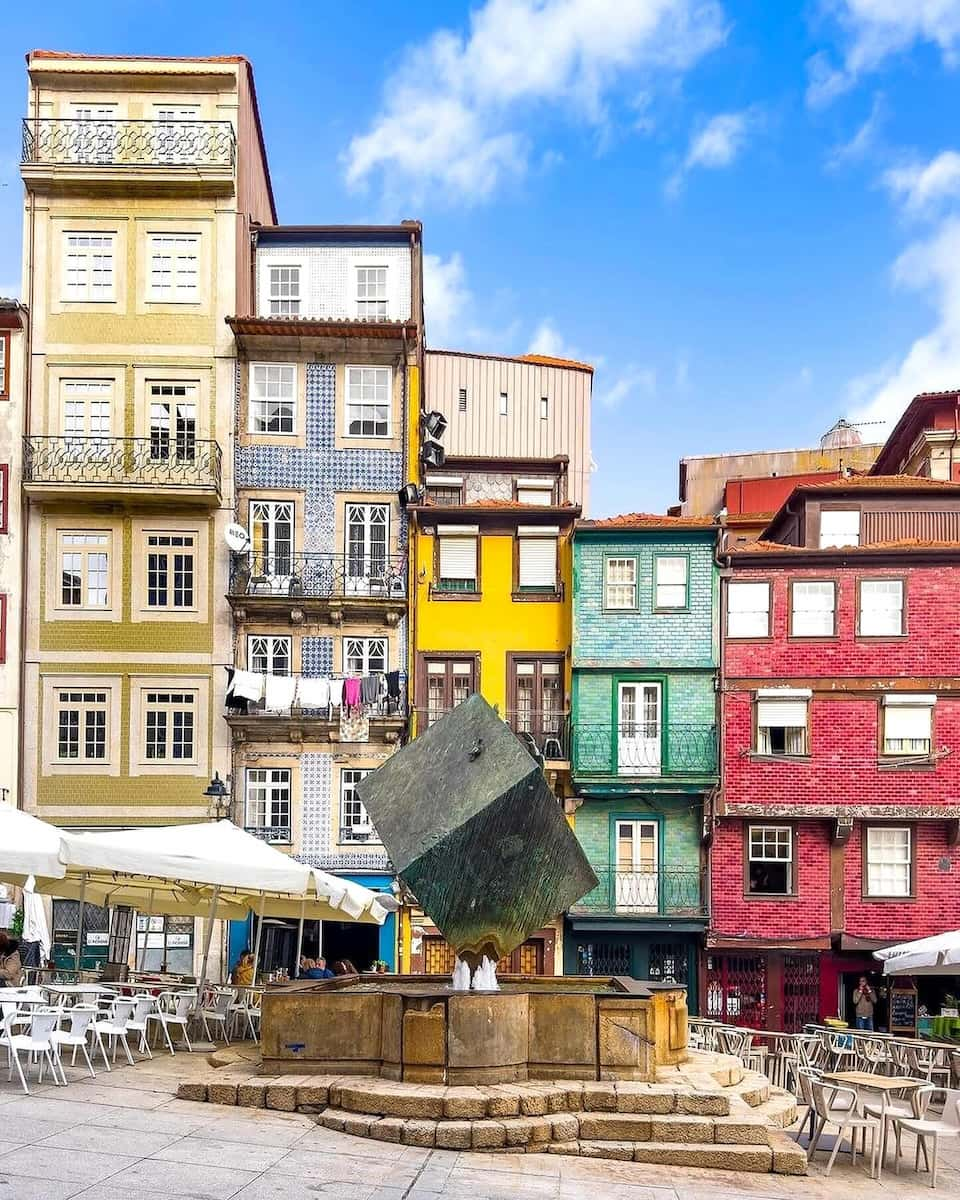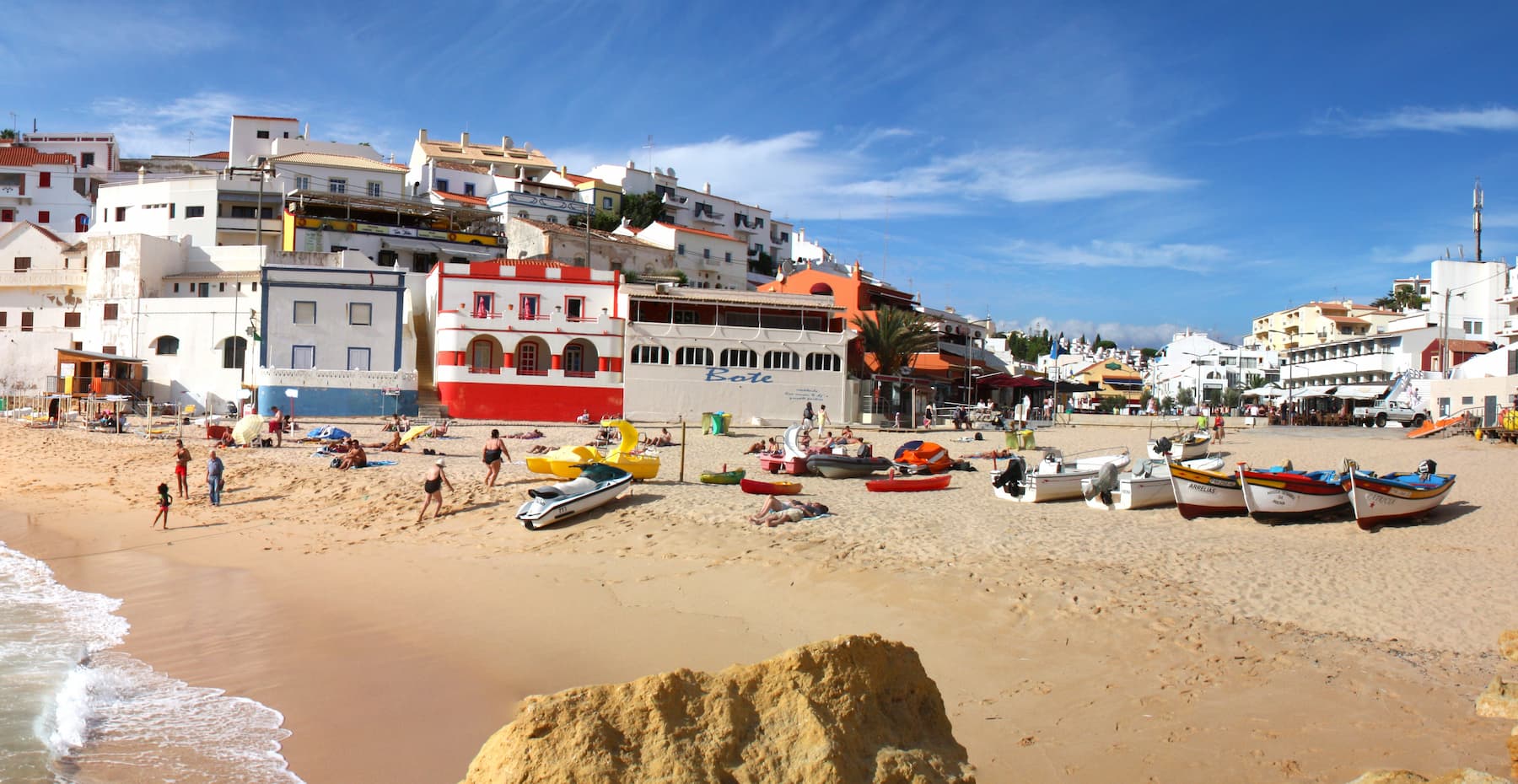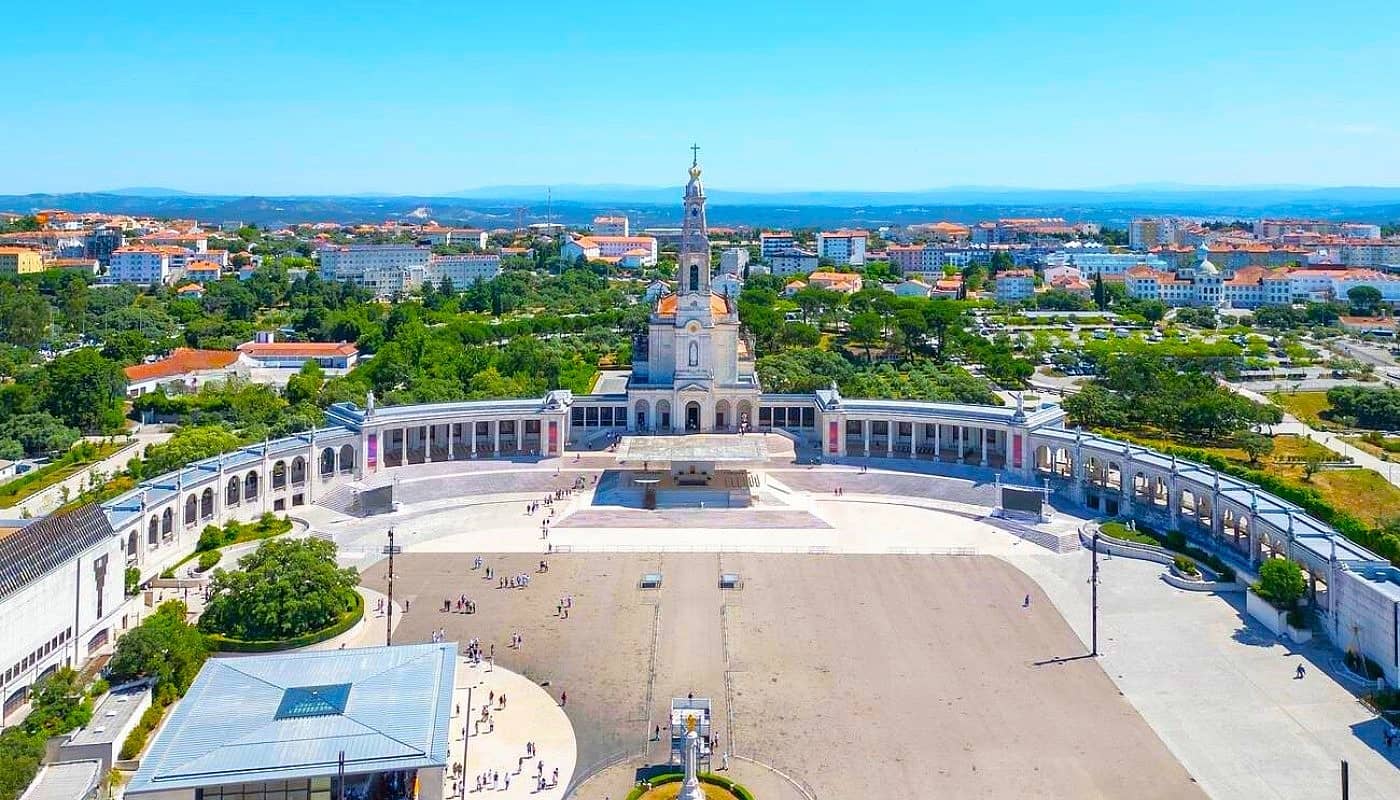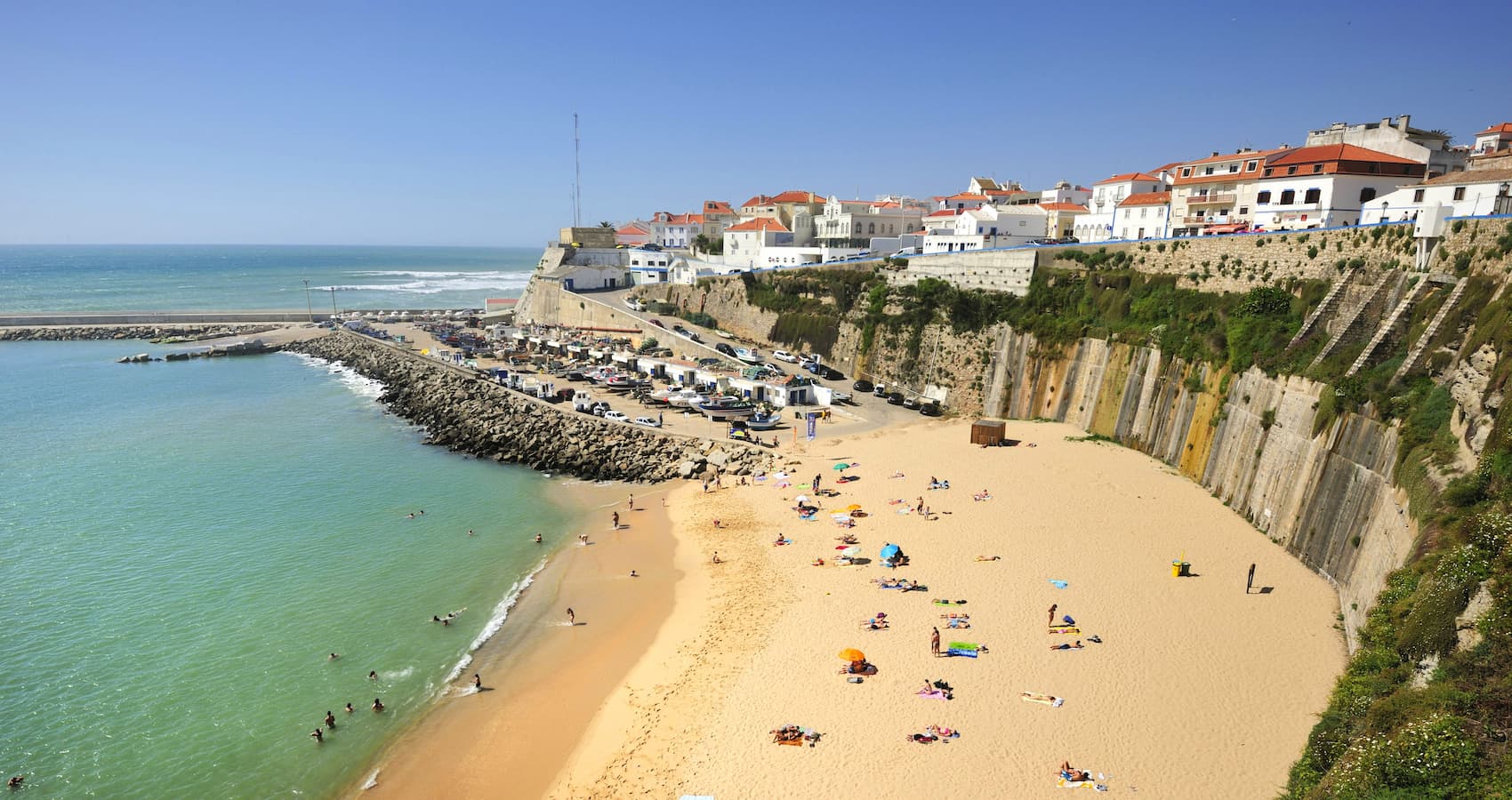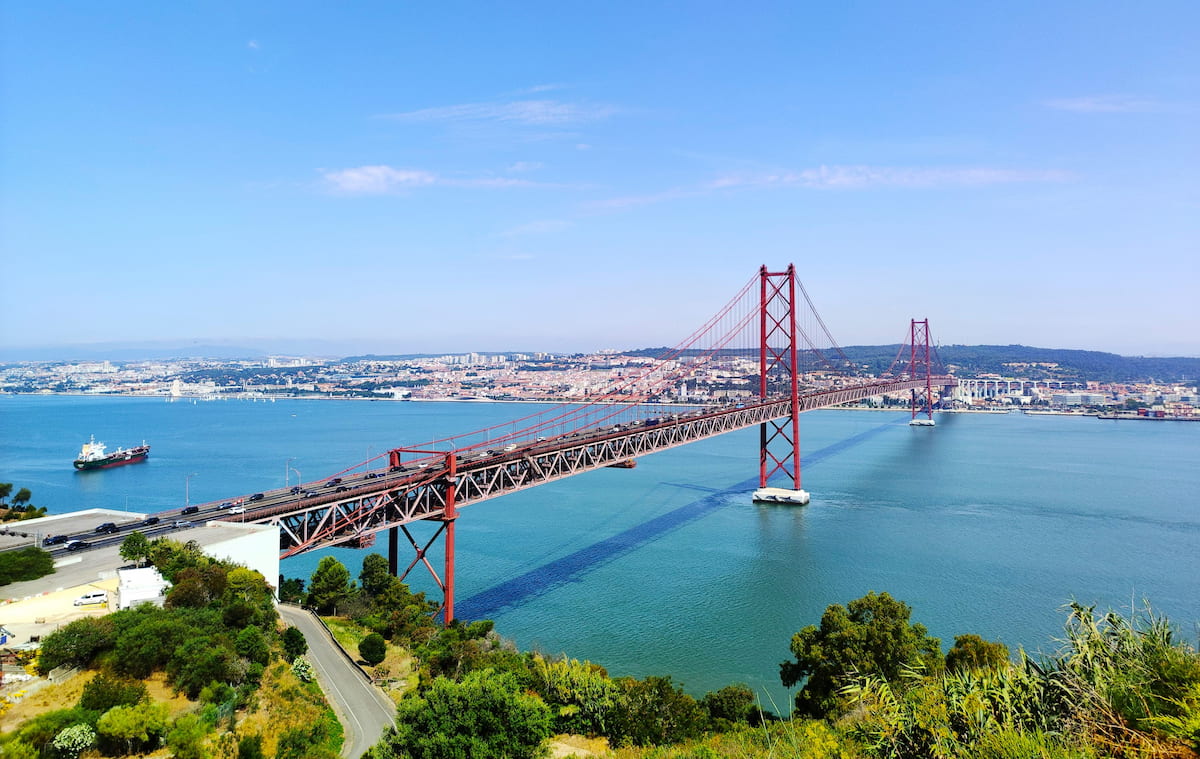I walked through Braga’s historic center and felt its centuries of history under my feet. This Portuguese city is often missed by travelers going between Porto and Lisbon, but it hides many secrets in its old streets and beautiful buildings. When I first climbed the steps at Bom Jesus do Monte, I knew I would fall in love with this place.
In Braga, I found both amazing churches and simple everyday joys. I relaxed in hidden gardens, tasted local pastries in small cafés, and watched local children playing in parks next to medieval walls. If you’re planning your first trip to Portugal or looking for new places to explore away from the usual tourist spots, Braga has wonderful surprises waiting for you at every corner.
🏡 Where to stay in Braga:
- 💎 Luxury Hotel: Vila Gale Collection Braga
- ✨ 5-Star: Melia Braga Hotel & Spa
- 🏨 4-Star: Hotel Moon & Sun Braga
- 🛏️ 3-Star: Hotel Estacão - Braga
- 💸 Cheap: Hotel ibis Braga
- 🏢 Apartment: Basic Braga by Axis
- 👨👩👧👦 For Families: INNSiDE by Meliá Braga Centro
- 🏩 For Couples: Hotel Senhora A Branca
👩🏻 Best guided tours:
- Bom Jesus do Monte Guided Tour from € 35 (⭐️ 4.8/5)
- Braga: Small-Group Half-Day Tour with Bom Jesus from € 40 (⭐️ 4.9/5)
- Medieval Guimarães- by Dusk or Day time -from Porto or Braga from € 35 (⭐️ 4.8/5)
- Braga: Tuk Tuk City Tour from € 30 (⭐️ 4.7/5)
Best Things to Do in Braga
1. Bom Jesus do Monte
Spiritual Ascent. I’ll never forget my first glimpse of Bom Jesus do Monte, one of the most iconic Braga attractions. This magnificent sanctuary combines architectural grandeur with natural beauty. Visiting the sanctuary of Bom Jesus is a must for anyone exploring the north of Portugal, as it offers a unique blend of spirituality and stunning panoramic views. Whether you’re climbing the baroque staircase or taking the historic funicular, this is a go-to Braga destination.
Architectural Marvel. The staircase, adorned with fountains and statues, is a masterpiece that reflects the style of Braga’s baroque architecture. Many inhabitants of Braga recommend taking your time to admire its intricate details. Insider tip: Don’t miss the chance to photograph the iconic Braga letters, located near the sanctuary.
Panoramic Views. Once at the top, I was rewarded with breathtaking panoramic views over Braga and the surrounding landscapes. The sanctuary has been recognized as a UNESCO World Heritage site since 2019, acknowledging its cultural significance and unique architecture. Budget tip: While the sanctuary itself is free to visit, the funicular costs €1.50 one-way (approximately $1.60). If you’re watching your spending, climb up early in the morning before the heat of the day makes it challenging.
Sacred Experience. What makes Bom Jesus truly special is its spiritual ambiance. Whether you’re religious or not, there’s something moving about this place that has drawn pilgrims for centuries. I noticed many visitors taking time for quiet contemplation in the church or gardens. Insider tip: Visit on weekdays to avoid crowds, especially during summer months when tour buses arrive in droves. Early mornings offer the most tranquil experience and the best light for photography.
| Bom Jesus do Monte | Details |
|---|---|
| Entrance Fee | Free (Church and grounds) |
| Funicular | €1.50 one-way (≈$1.60) |
| Opening Hours | 7:30am-7:00pm (summer), 7:30am-5:30pm (winter) |
| Location | Estrada do Bom Jesus, 4715-056 Braga |
| Best Time to Visit | Weekday mornings |
⭐Best tours
- Bom Jesus do Monte Guided Tour – Explore the spiritual and architectural marvel of Bom Jesus do Monte with this guided tour.
- Braga & Guimarães: The Heart of Portugal Guided Tour – Visit Bom Jesus do Monte, a UNESCO World Heritage site, and experience its stunning architecture and beautiful gardens.
2. Santa Maria de Braga Cathedral
Sacred Heritage. Standing in the hushed interior of Santa Maria de Braga Cathedral, I felt the weight of history around me. This remarkable building holds the distinction of being Portugal’s first cathedral, constructed several decades before the country was even founded. The cathedral was consecrated and dedicated to the Virgin Mary on August 28, 1089, as construction neared completion. What struck me most was the blend of architectural styles – Romanesque, Gothic, and Baroque influences all visible throughout the structure. Many visitors miss the original Romanesque-style Porta do Sol door, which I discovered while exploring the ambulatory.
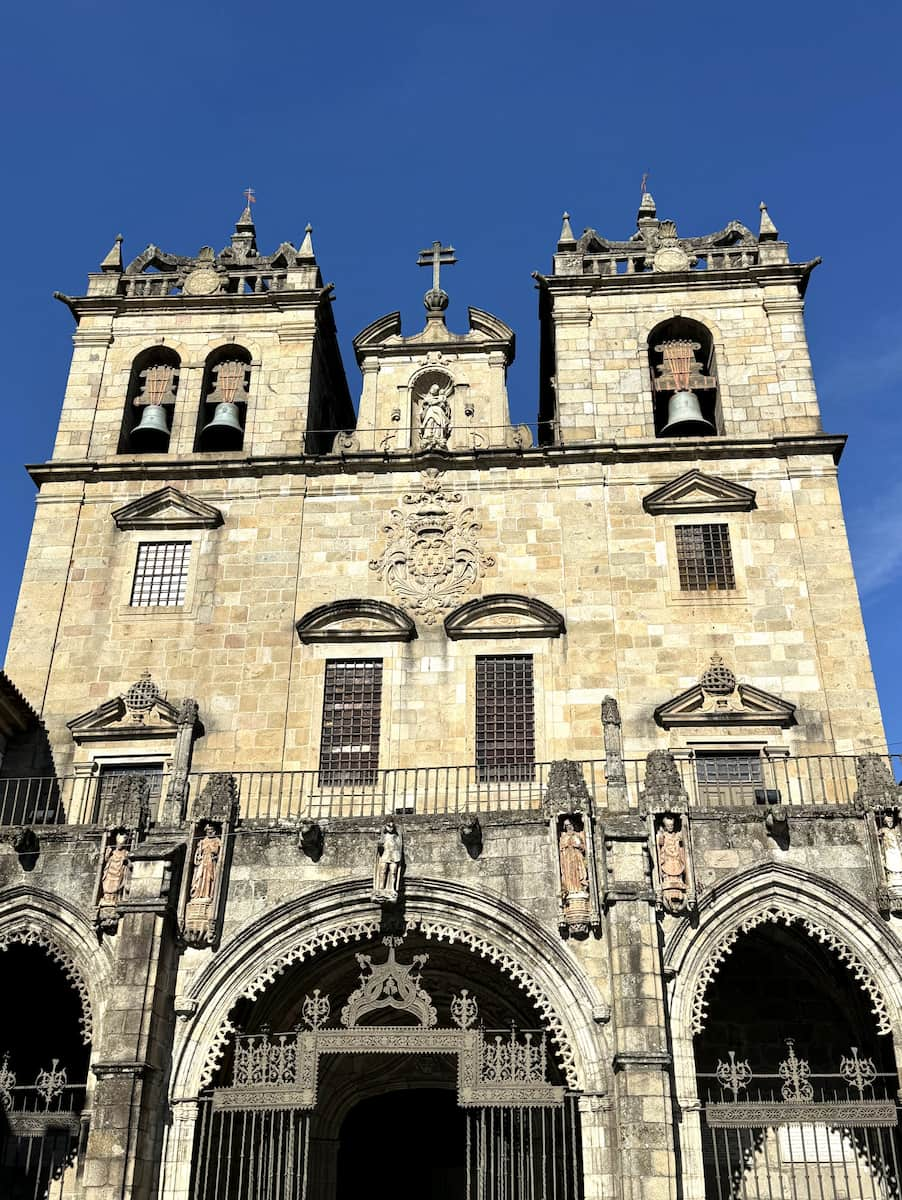
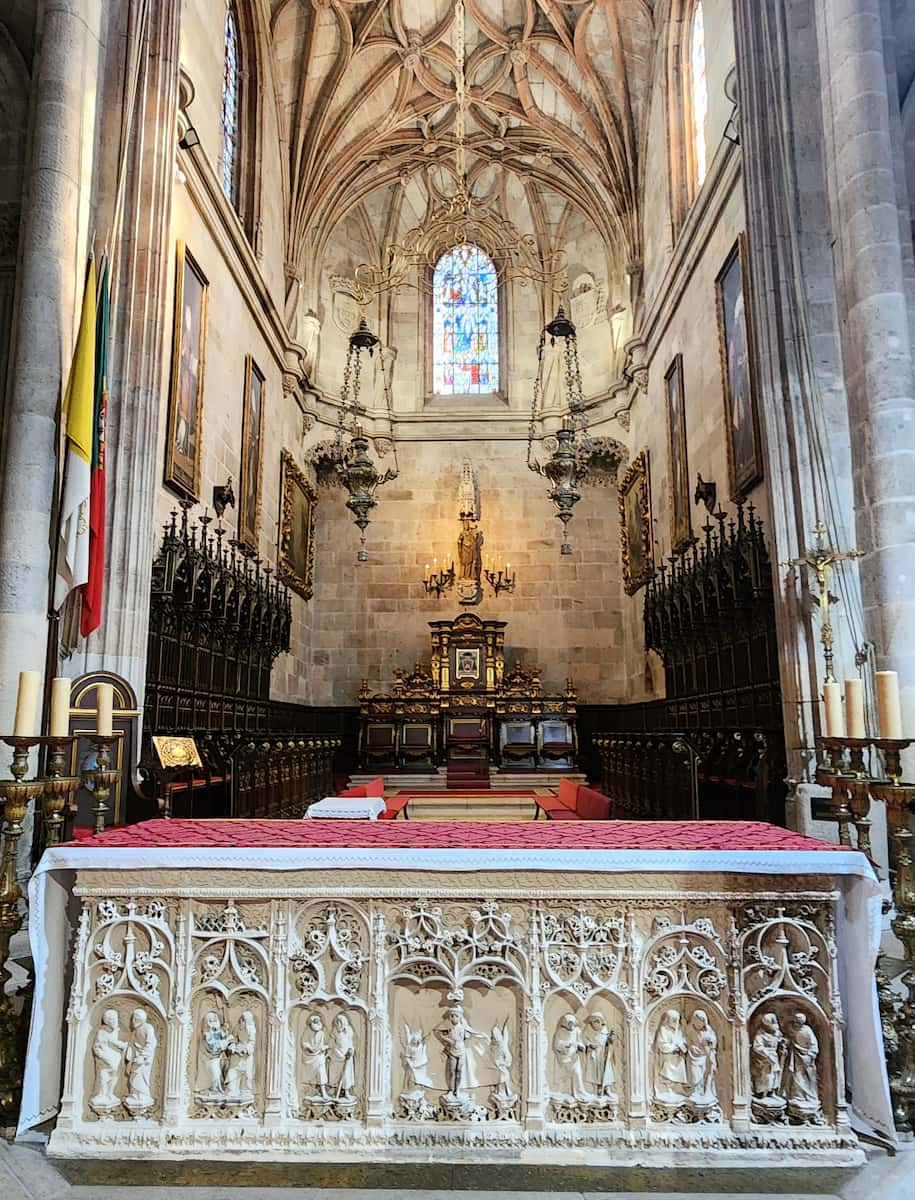
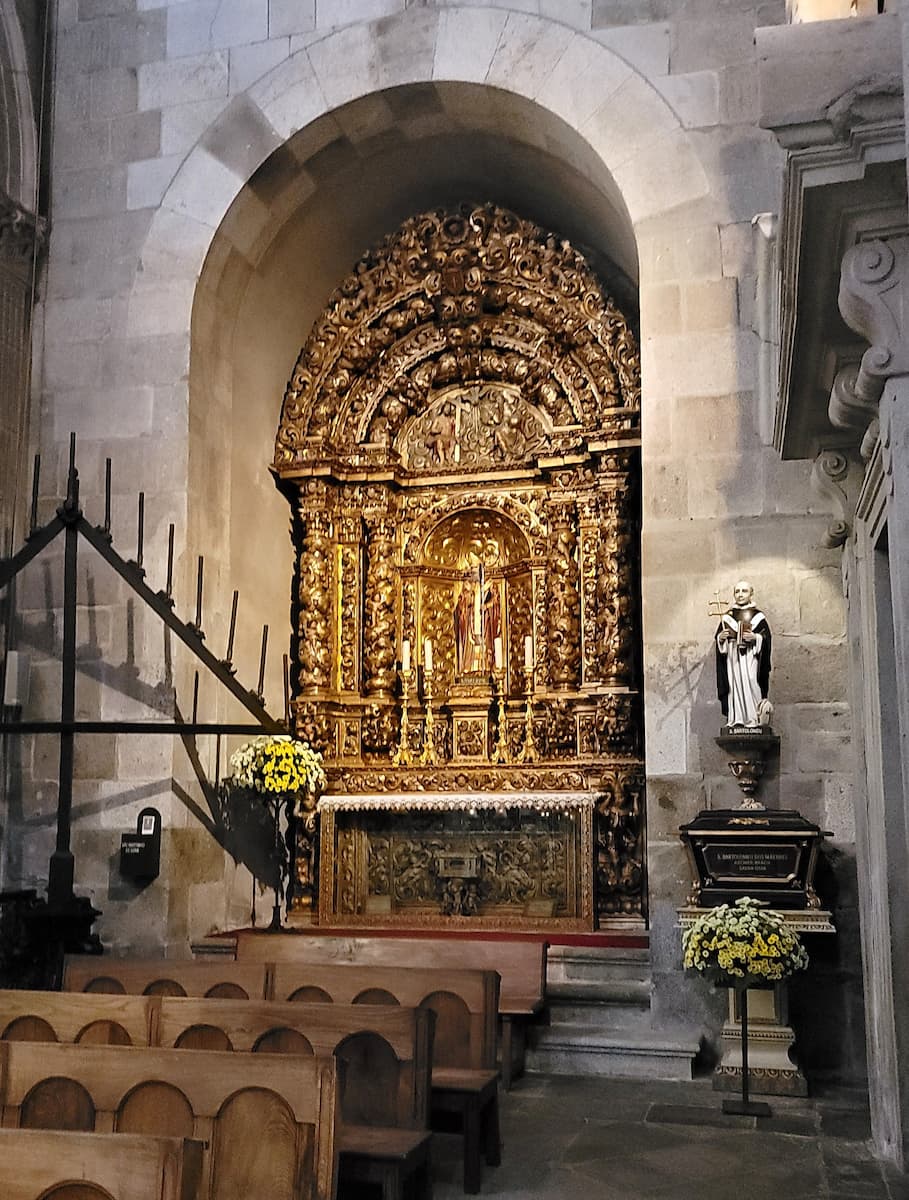
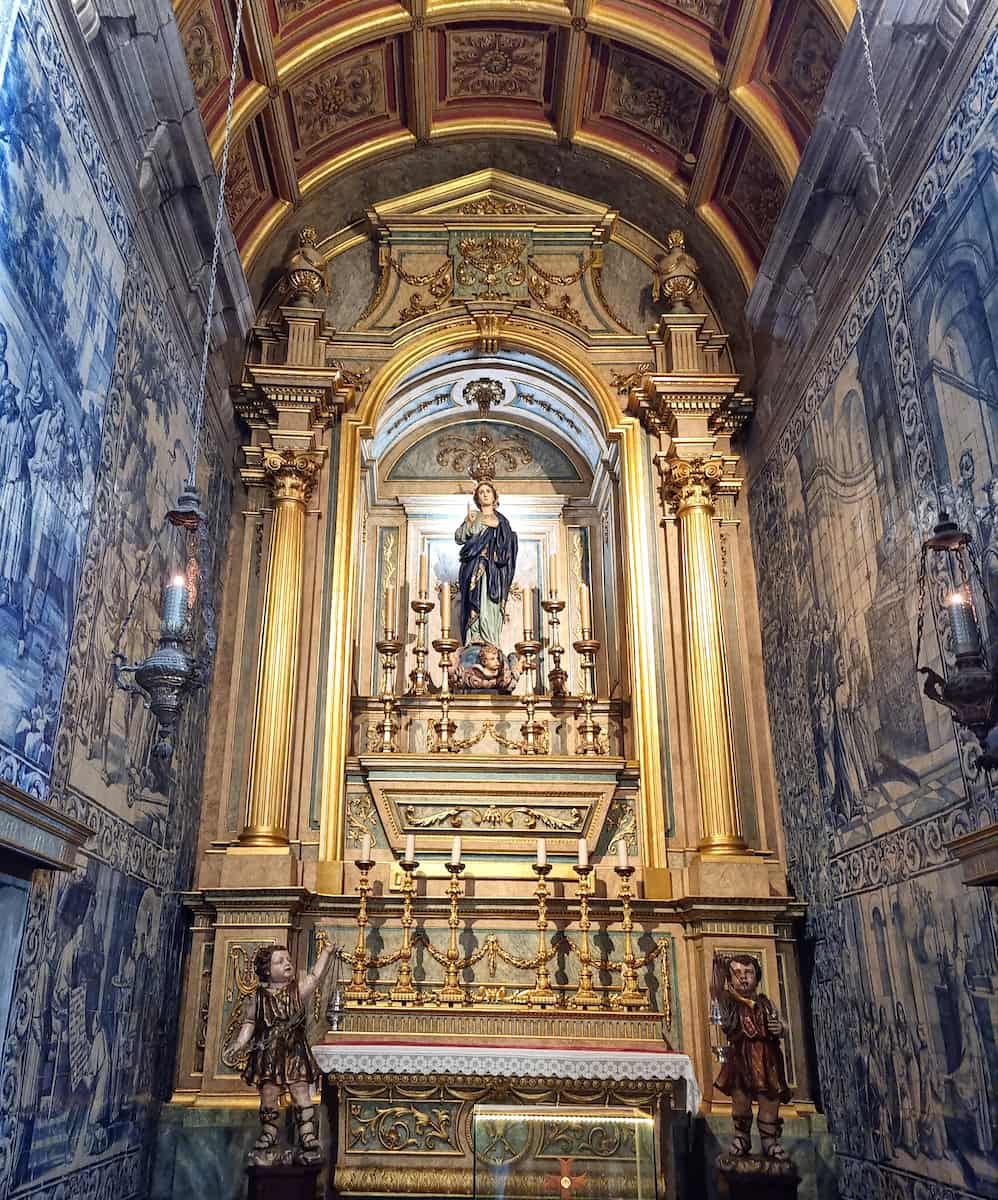
Artistic Treasures. The cathedral houses an impressive collection of artistic relics gathered over its nine centuries of history. I was particularly moved by the Gothic-Flemish style tomb belonging to Infante D. Afonso, son of King João I. The 15th-century Gothic-style entrance porch is another highlight not to be missed. Budget tip: While there’s a fee to visit the upper choir and outlying chapels, you can experience much of the cathedral’s grandeur for free. The paid sections are worth it for history enthusiasts, but casual visitors can enjoy the main areas without spending.
Royal Connections. The Chapel of Kings serves as the final resting place of D. Henrique and D. Teresa, parents of Portugal’s first king. This connection to Portugal’s founding makes the cathedral not just a religious site but a crucial piece of national heritage. Insider tip: Look for the cross used in the first mass celebrated in Brazil, led by Pedro Álvares Cabral – it’s displayed in the Cathedral’s Treasure Museum and often overlooked by visitors rushing through.
Architectural Details. As I wandered through the cathedral, I noticed fascinating decorative elements added during the reign of D. Manuel in the 16th century. The Baptismal Font is particularly beautiful, as is a niche with the statue of Our Lady of the Milk attributed to Nicolau Chanterenne. The two distinctive bell towers and the baroque-style interior decoration of the altars, with their gilded woodwork and monumental organs, create an atmosphere of solemn grandeur. A common tourist mistake is not looking up – the ceilings throughout the cathedral feature remarkable craftsmanship.
| Santa Maria de Braga Cathedral | Details |
|---|---|
| Basic Entry | Free |
| Upper Choir & Chapels Tour | €4 (≈$4.30) |
| Cathedral Museum | €2 (≈$2.15) |
| Location | Rua Dom Paio Mendes, 4700-424 Braga |
| Opening Hours | 9:00am-6:30pm (Mon-Sat), 9:00am-5:00pm (Sun) |
3. Santa Barbara Garden
Floral Paradise. I stumbled upon Jardim de Santa Bárbara almost by accident, and what a delightful discovery it was! This enchanting municipal garden sits alongside the eastern wing of the historical Archbishop’s Palace in the heart of Braga. The moment I stepped into this tranquil retreat, I was surrounded by geometric designs carved from beds of boxwood, decorated with cedar topiaries, and bursting with vibrant flowers. Despite its historical setting, I was surprised to learn the garden is actually a modern creation, landscaped in 1955 during the Estado Novo period.
Historical Context. The garden’s northern patio features diverse architectural elements – cornices, statues, and coat-of-arms in rock that hint at the area’s rich past. What fascinated me was the broken ruins of an arcade that once belonged to the medieval palace, now delimiting the garden space. At the center stands a beautiful statue of Saint Barbara on a fountain, the garden’s namesake and patron saint. Budget tip: This is one of the city’s most photogenic spots and completely free to visit – perfect for travelers watching their spending.
Cultural Significance. During my visit, I noticed the garden serves as more than just a pretty space – it’s a cultural hub for the people of Braga. The garden frequently hosts local events, concerts, and festivals, adding to its vibrant character. I was lucky enough to catch a small classical music performance that transformed the already magical atmosphere. Insider tip: Visit in late afternoon when the light is golden and most tourists have moved on to other attractions.
Tranquil Retreat. What struck me most about Jardim de Santa Bárbara was the sense of peace it offers in the middle of a busy city. I spent a wonderful hour simply sitting on a bench, watching locals and visitors alike enjoying the beauty around them. The garden provides perfect framing for the ruins of the medieval palace, creating countless opportunities for memorable photos. A common tourist mistake is rushing through in just a few minutes – this garden deserves time for slow appreciation.
| Jardim de Santa Bárbara | Details |
|---|---|
| Entrance Fee | Free |
| Opening Hours | Always open |
| Location | Rua Dr. Justino Cruz, 4700-312 Braga |
| Nearby Attractions | Archbishop’s Palace, Braga Cathedral |
⭐Best activites
- Braga: Small-Group Half-Day Tour with Bom Jesus – Discover Braga with our Small-Group Tour, including a transfer to Bom Jesus. Perfect for history buffs, culture lovers, and nature seekers. Enjoy an affordable, non-touristy city experience.
4. Sanctuary of Our Lady of Sameiro
Marian Devotion. Perched atop Monte Sameiro at an elevation of 566 meters, the Sanctuary of Our Lady of Sameiro took my breath away – both literally from the climb and figuratively from its beauty. This is Portugal’s second-largest Marian shrine, surpassed in size only by Fátima. What impressed me most was the panoramic view over Braga and the Minho valley – a vista that stretches for miles on clear days. The sanctuary attracts many devotees, especially during pilgrimages on the first Sunday of June and the third Sunday of August, when the atmosphere becomes particularly vibrant.
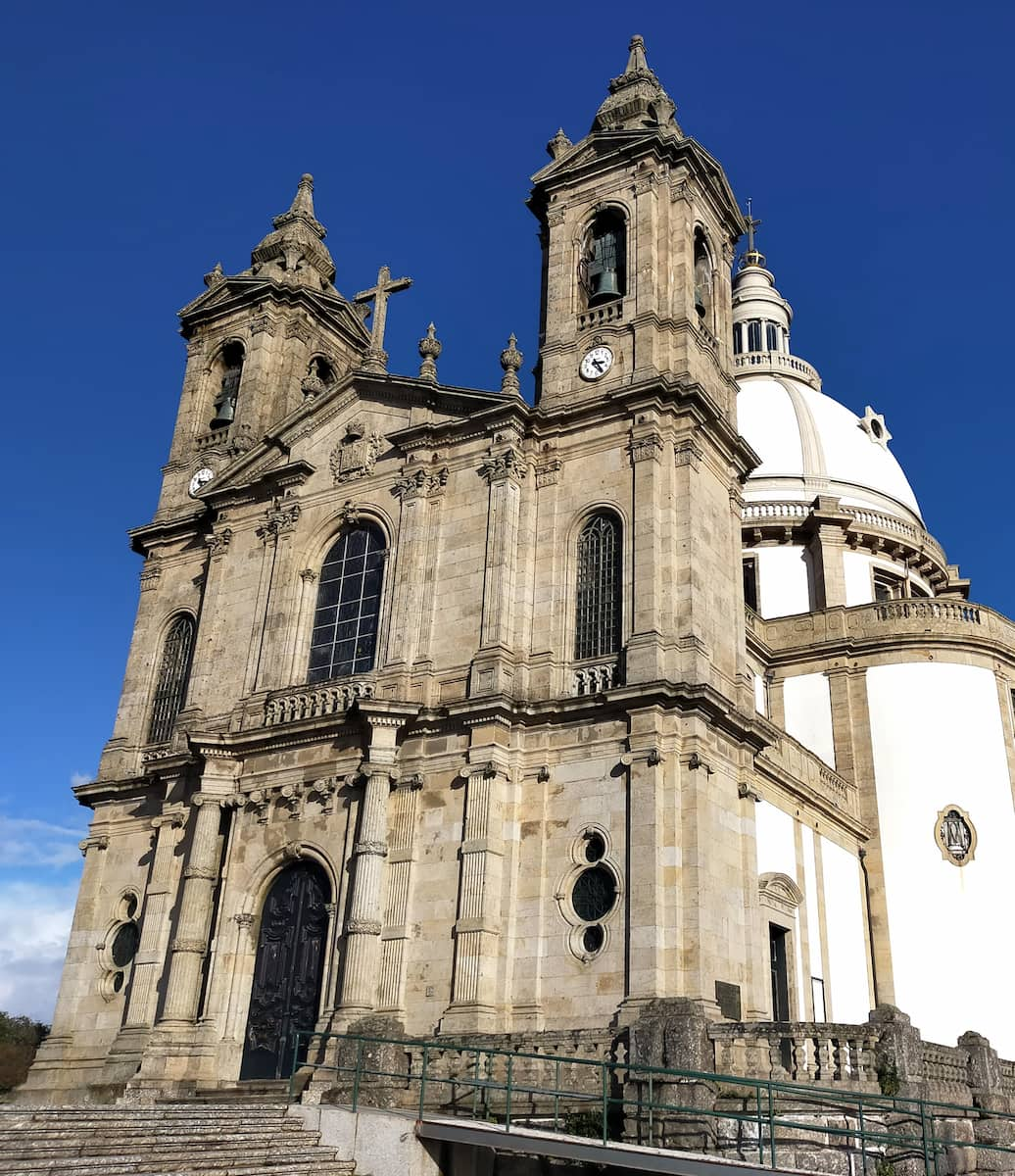
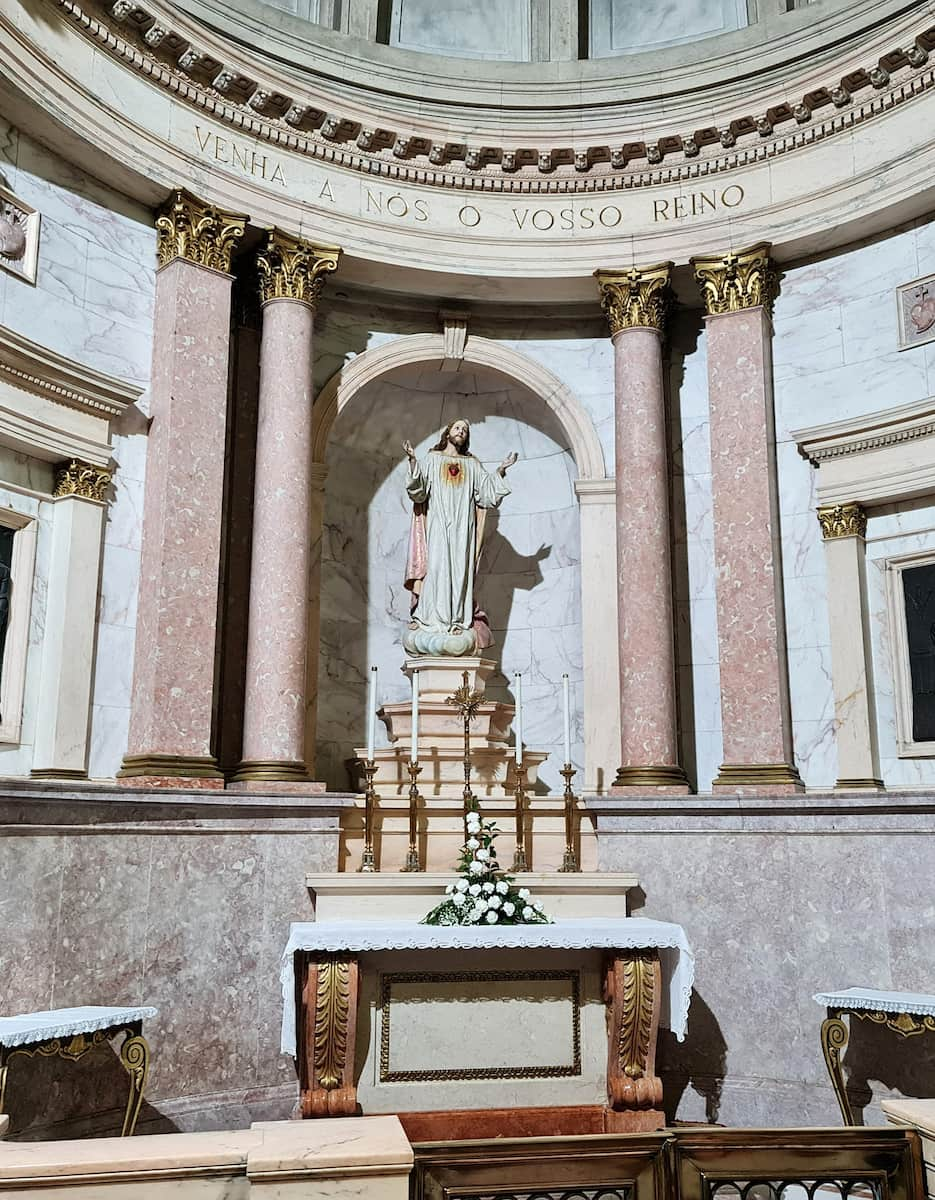
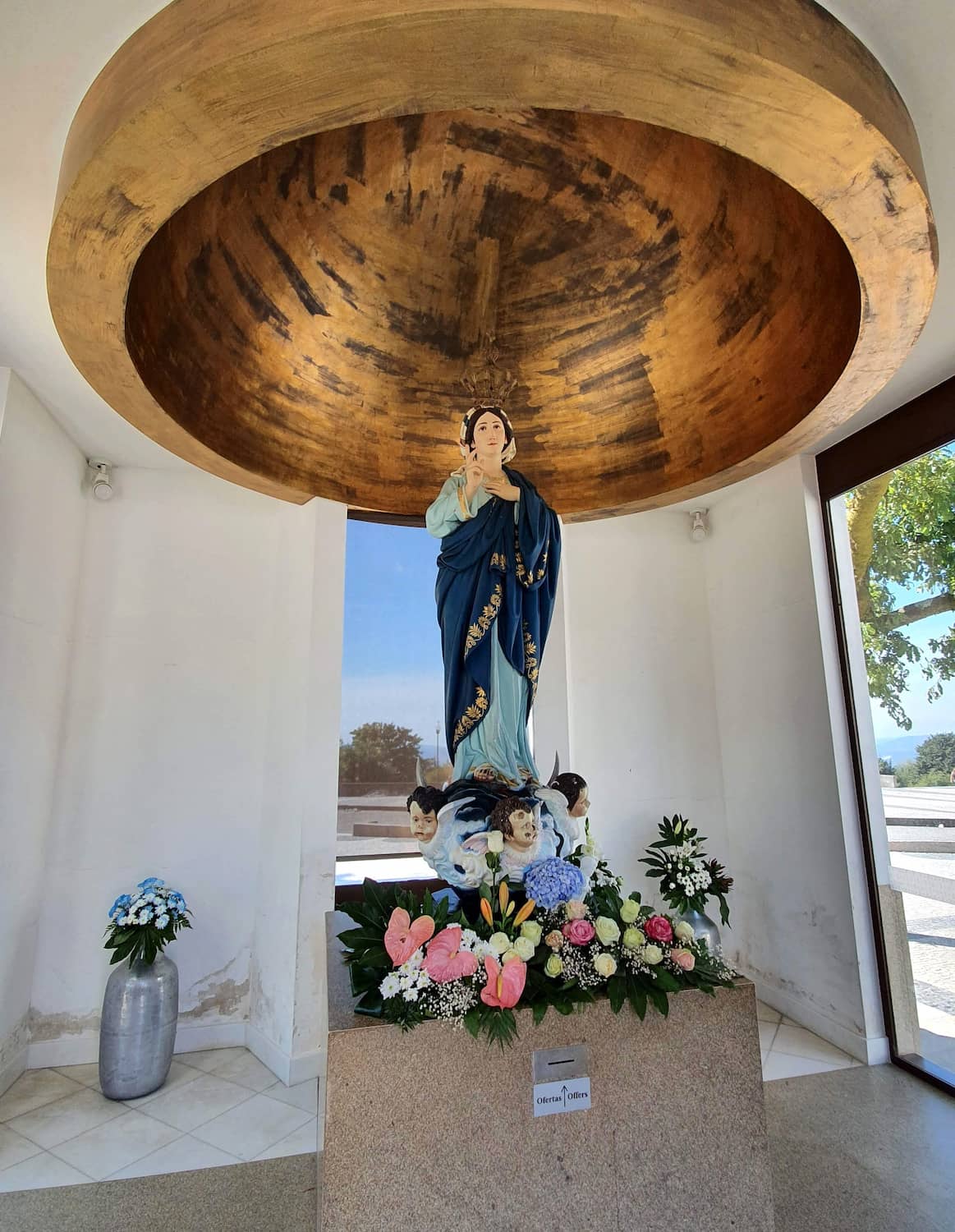
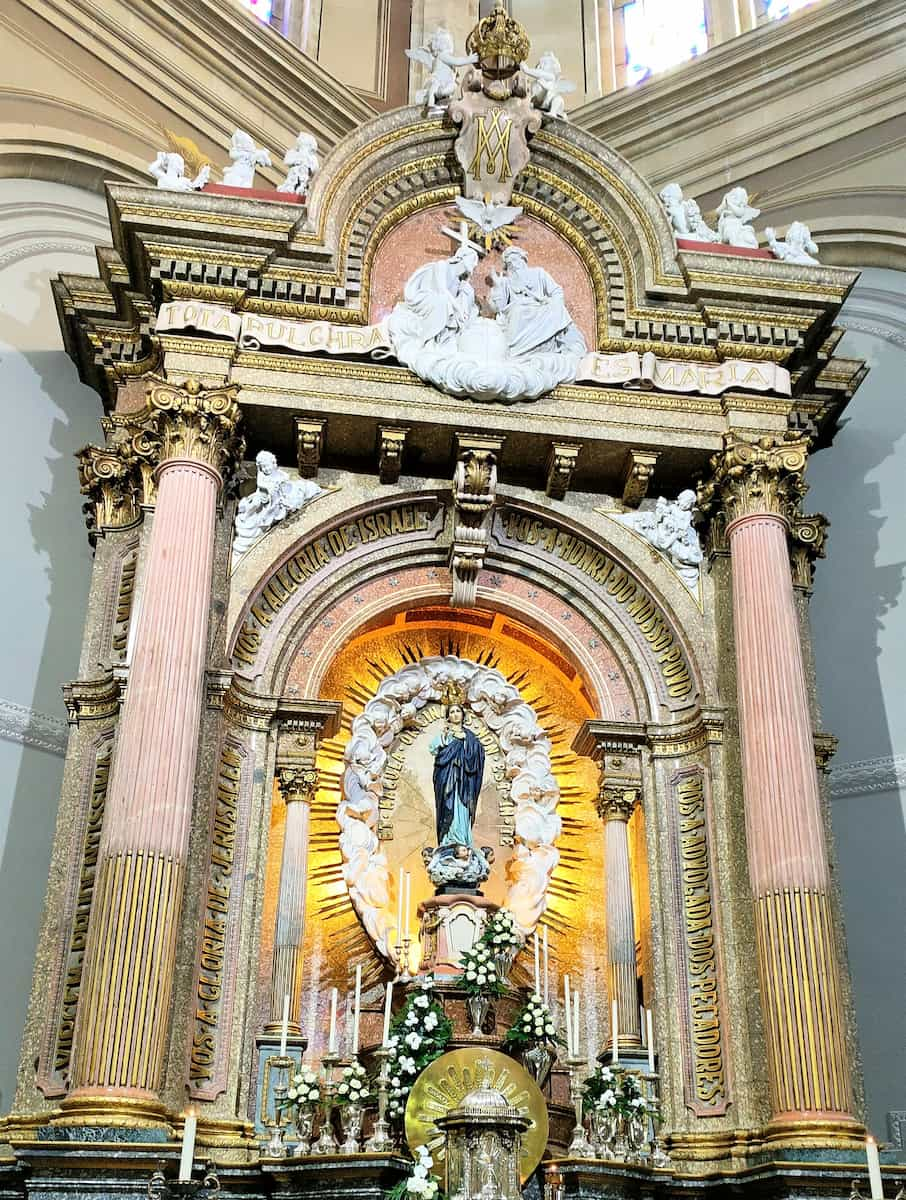
Sacred Architecture. The religious complex developed over several decades and includes numerous elements beyond the main church. I explored the Casa das Estampas, the Rector’s House, the Chapel of the Eucharist, and a grandiose flight of steps topped with monuments to the Sacred Heart and the Immaculate Conception. The church itself is neoclassical in style, and while architecturally simple, houses treasures like the silver tabernacle on the main altar and a beautiful statue of Mary sculpted in Rome by Eugénio Maccagnani that arrived in 1880. Budget tip: The sanctuary grounds are free to visit, making this an economical addition to your Braga itinerary.
Artistic Elements. Throughout the 20th century, the sanctuary was enriched with artworks reflecting various aesthetic and religious styles. In the crypt, I discovered a fascinating set of tile panels by Querubim Lapa. The presbytery features a large panel by Oscar Casares painted between 2005 and 2006. Most impressive were four great sculptures of the archangels Michael, Raphael, and Gabriel, along with the Angel of Portugal, created by Clara Menéres. Insider tip: Don’t miss the opportunity to climb to the top of the basilica’s dome for the most spectacular view – many visitors don’t realize this is possible.
Papal Recognition. I learned that on December 8, 2004, Pope John Paul II granted the sanctuary the Golden Rose, a distinction attributed by pontiffs to personalities, sanctuaries, churches, or cities in recognition of relevant services rendered to the Church or for the good of society. This prestigious honor underscores the sanctuary’s importance in Portuguese religious life. A common tourist mistake is not allowing enough time to explore both the sanctuary and its surroundings – plan for at least half a day.
| Sanctuary of Our Lady of Sameiro | Details |
|---|---|
| Entrance Fee | Free |
| Opening Hours | Winter: Mon-Sat 7:30am-5:30pm, Sun 6:30am-5:30pmSummer: Mon-Sat 7:30am-7:00pm, Sun 6:30am-7:00pm |
| Location | Monte do Sameiro, 4715-616 Braga |
| Distance from City Center | 4 km |
5. Monastery of São Martinho de Tibães
Monastic Grandeur. Walking through the gates of the Monastery of São Martinho de Tibães, I felt transported back in time. This remarkable example of ornate architecture, established in the 11th century and extensively rebuilt between the 17th and 18th centuries, served as the mother house of the Benedictine Order in Portugal and Brazil. The monastery complex is massive, comprising a church, cloisters, courtyards, and various monastic areas, all surrounded by a walled convent that includes gardens, agricultural land, and forest. What struck me most was the peaceful atmosphere that persists despite centuries of history.
Artistic Heritage. The interior decoration of the monastery church left me speechless. The decorative woodcarving designed and carved by master artists like Friar Cipriano da Cruz Sousa, André Soares, and Friar José de Santo António Vilaça represents some of the finest examples of Portuguese Rococo art. I learned that Tibães was renowned as a “workshop-school” for woodcarvers, sculptors, architects, and other artists working in the northwest of the Peninsula. Budget tip: The entrance fee is modest compared to the cultural value – at around €5 (approximately $5.40), it’s one of the best values in Portuguese heritage sites.
Garden Splendor. Beyond the buildings, I was captivated by the monastery’s elaborate garden with its monumental water features featuring remarkable hagiographic and allegoric iconography. The hydraulic systems that power these water features are still operational – an engineering marvel from centuries past. The garden, forest, and rural farm make this monastic enclosure unique among Portuguese religious sites. Insider tip: Ask about the guided tours that provide in-depth insights into the monastery’s history and architecture – they reveal details you’d never notice on your own.
Historical Layers. As I explored, I discovered that the monastery includes two cloisters: the ruins of the Refectory Cloister and the Cemetery Cloister with its classical-style arched galleries richly decorated with tiles. I was particularly charmed by the Courtyard of St. John, preserved in its original state with a small garden and monumental water feature at the center. A common tourist mistake is focusing only on the church and missing these equally fascinating spaces that reveal daily monastic life.
| Monastery of São Martinho de Tibães | Details |
|---|---|
| Entrance Fee | €5 (≈$5.40) |
| Opening Hours | 10:00am-6:00pm daily |
| Location | Mire de Tibães, 4700-565 Braga |
| Distance from Braga | 6 km |
| Guided Tours | Available in Portuguese and English |
6. Chafariz da Praça da República
Renaissance Elegance. Standing in Praça da República, I was immediately drawn to the beautiful Chafariz da Praça da República, a historic fountain that serves as one of the city’s most charming landmarks. Built in 1556 by order of Teodósio I, Duke of Bragança, the fountain was originally located elsewhere on the square before being moved to its present location in the mid-17th century. What captivated me was its Renaissance style architecture – a double dome supported by three columns, all crafted from exquisite estremos marble. The fountain isn’t just decorative; it’s a symbol of the city’s rich history.
Social Hub. The water feature sits at the heart of one of the city’s most vibrant squares, surrounded by cafes, shops, and the pulse of local life. I spent a delightful afternoon at a nearby cafe, watching as both tourists and locals gathered around the water feature – some taking photos, others meeting friends, children playing nearby. Budget tip: This is a perfect spot for economical people-watching; grab a coffee at one of the square’s cafes (€1-2, or about $1.10-2.15) and enjoy the atmosphere without spending much.
Photographic Gem. As the afternoon light began to soften, I noticed how the water feature transformed in the changing illumination. The marble seemed to glow with a warm hue, creating a magical atmosphere that was irresistible to photograph. Insider tip: Visit the fountain at sunset for the most stunning photos when the marble catches the golden light. Most tourists visit during midday when the harsh sun doesn’t do justice to its beauty.
Historical Context. What fascinated me about this fountain was learning about its role in the city’s development. It represents a period when public infrastructure was becoming more decorative as well as functional. The water feature has witnessed centuries of the city’s history, from religious processions to political demonstrations, serving as a silent witness to the city’s evolution. A common tourist mistake is not taking time to appreciate these smaller monuments that tell so much about a city’s character.
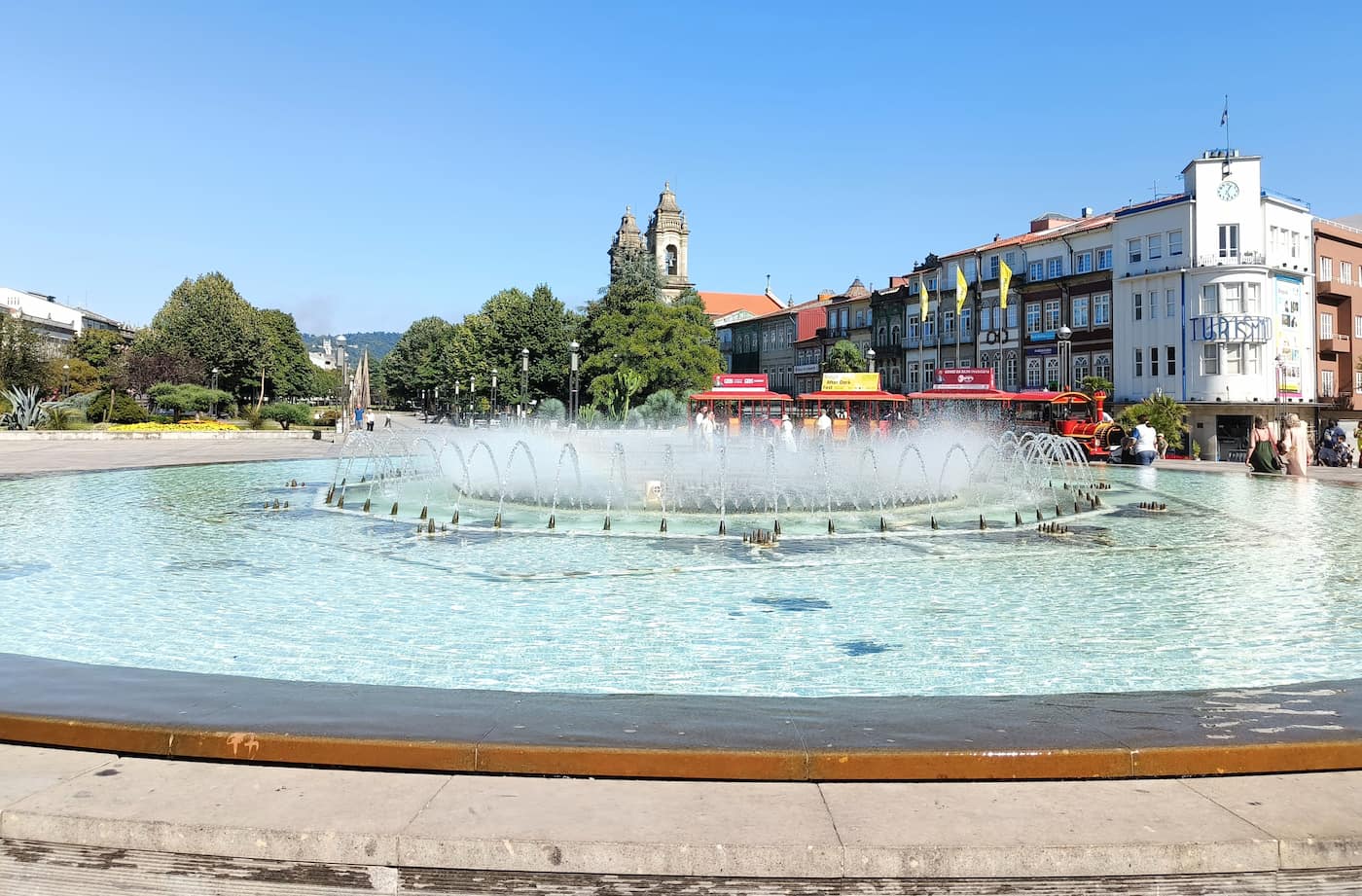
| Chafariz da Praça da República | Details |
|---|---|
| Entrance Fee | Free |
| Location | Praça da República, 4700-328 Braga |
| Nearby Amenities | Cafes, restaurants, shops |
| Features | Outdoor seating, family-friendly |
⭐Best activites
- Braga: Tuk Tuk City Tour – Take a tuk tuk tour of the city center and learn about its history, culture, and architecture from your guide. Discover hidden corners and hear their different, fascinating stories.
7. Arco da Porta Nova
Gateway to History. The moment I walked through the New Gate Arch, I felt like I’d stepped back in time. This impressive archway, one of the city’s most iconic landmarks, was originally created in 1512 during the time of Archbishop D. Diogo de Sousa as one of the gates in the city walls. However, its current elegant appearance dates from 1772, when it was redesigned by local architect André Soares at the initiative of Archbishop D. Gaspar de Bragança. The arch marks a historical moment when Braga was expanding beyond its ancient walls, symbolizing both protection and welcome.
Architectural Beauty. What struck me about the arch was its beautiful late Baroque style, with intricate details that reward close inspection. Standing beneath it, I admired the craftsmanship that has endured for centuries. The arch is classified as a National Monument, recognized for its historical and architectural significance since 1910. Budget tip: Like many of the city’s outdoor monuments, the New Gate Arch is free to visit, making it perfect for travelers on a tight budget.
Cultural Curiosity. I was delighted to learn about a curious expression associated with the arch. Bracarenses (people from Braga) are known for “leaving the door open,” leading to the phrase “Are you from Braga?” when someone leaves a door open. One theory suggests this comes from the fact that the New Gate Arch never actually had doors – as the city was expanding and peaceful times had arrived, no defensive gates were installed. Insider tip: Next to the arch is a medieval tower from the Fernandine wall, almost hidden by surrounding buildings. You can access it through the Image Museum for a different perspective on the city’s defensive past.
Strategic Location. The arch serves as a perfect starting point for exploring the city’s historic center. Standing at this gateway, I could see the old and new parts of the city meeting – a physical representation of the city’s blend of tradition and modernity. A common tourist mistake is walking through the arch without pausing to appreciate its significance or the views it frames of the city beyond. Take a moment to stand beneath it and consider the countless people who have passed through this same space over centuries.
| Arco da Porta Nova | Details |
|---|---|
| Entrance Fee | Free |
| Location | R. D. Diogo de Sousa, Braga |
| Classification | National Monument since 1910 |
| Architectural Style | Late Baroque |
| Nearby Attraction | Image Museum (in the medieval tower) |
Things to Do in Braga with Kids
1. Picoto Park
Outdoor Adventures at Picoto Park. Picoto Park was a hit with my kids, combining nature and adventure in one fun-filled destination. This park, located just minutes from the city center, offers activities for children of all ages. My youngest loved the playground area, while my older child couldn’t get enough of the climbing wall and zipline. The panoramic tree-climbing circuit was a highlight, giving them a sense of accomplishment as they navigated the ropes high above the ground. The park also features hiking trails with stunning views over Braga – perfect for a family walk.
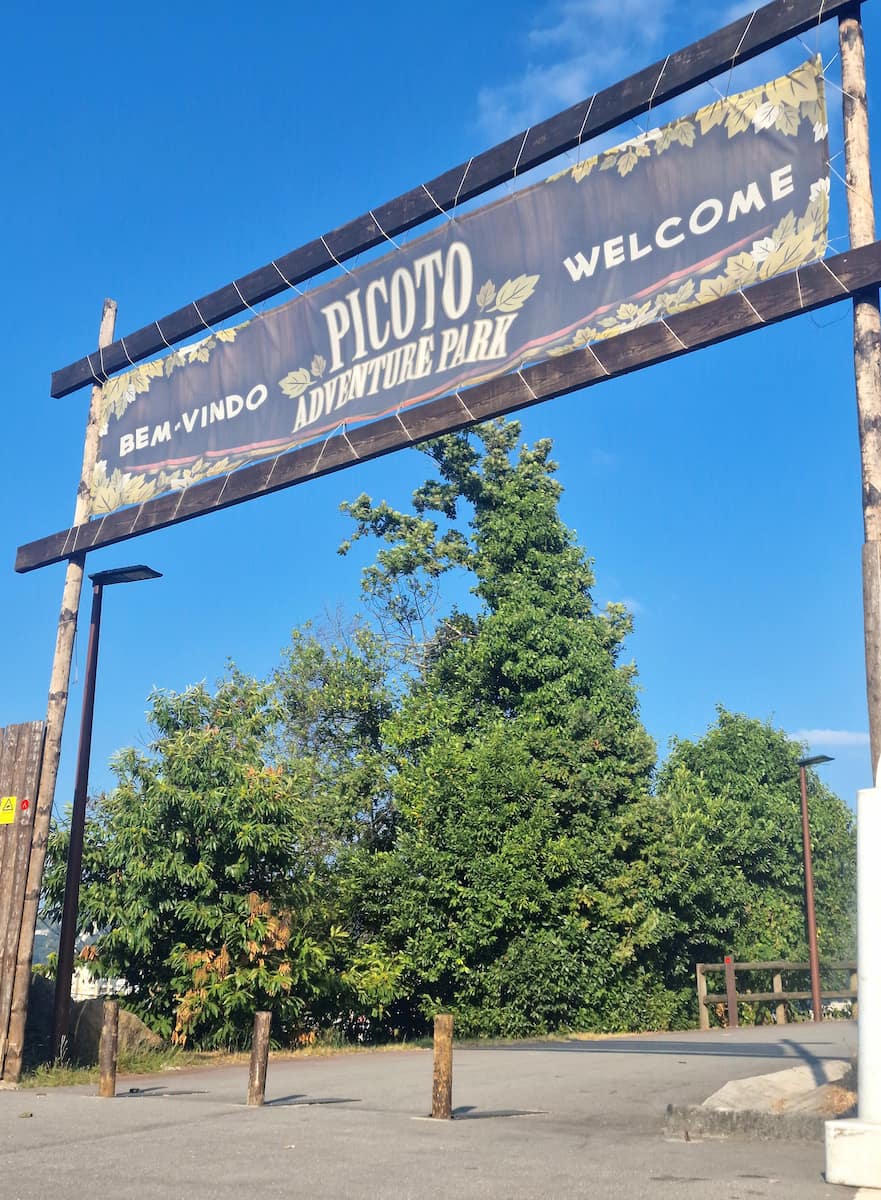

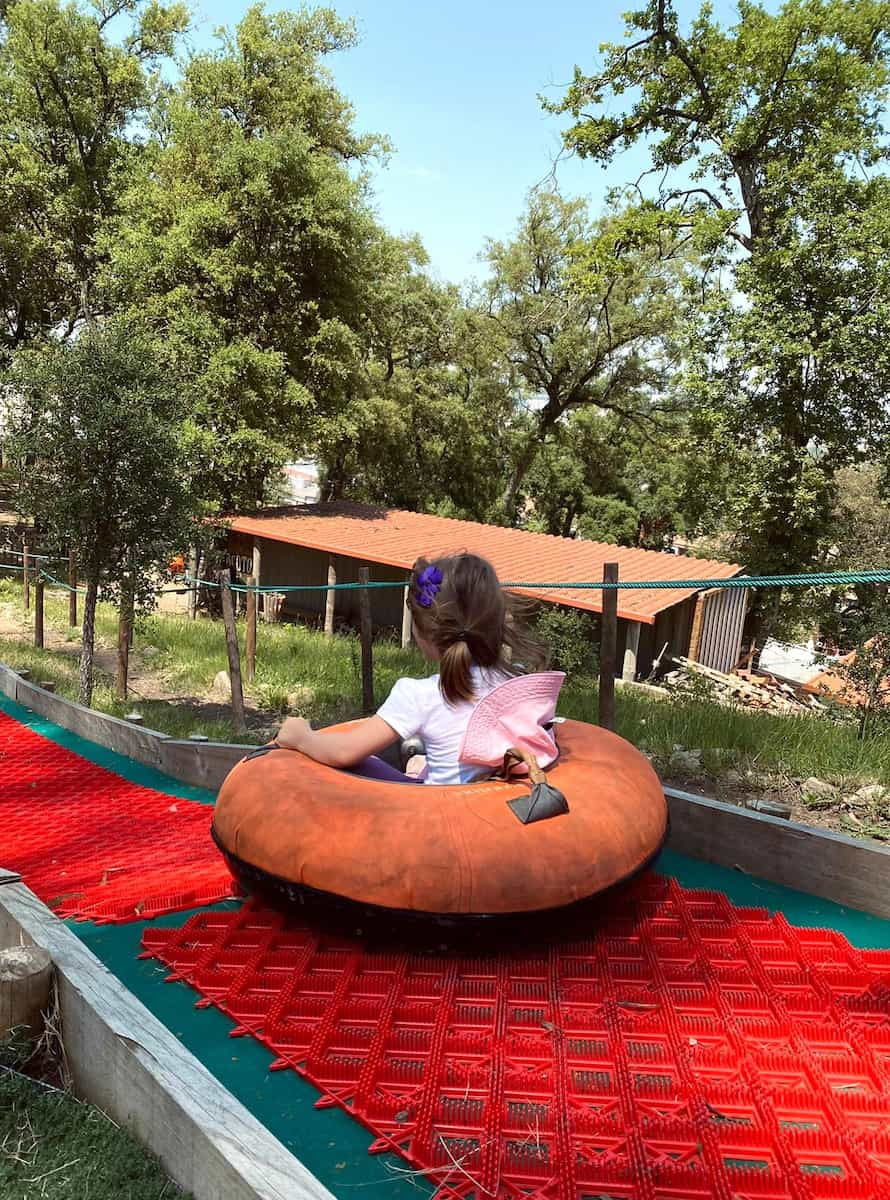
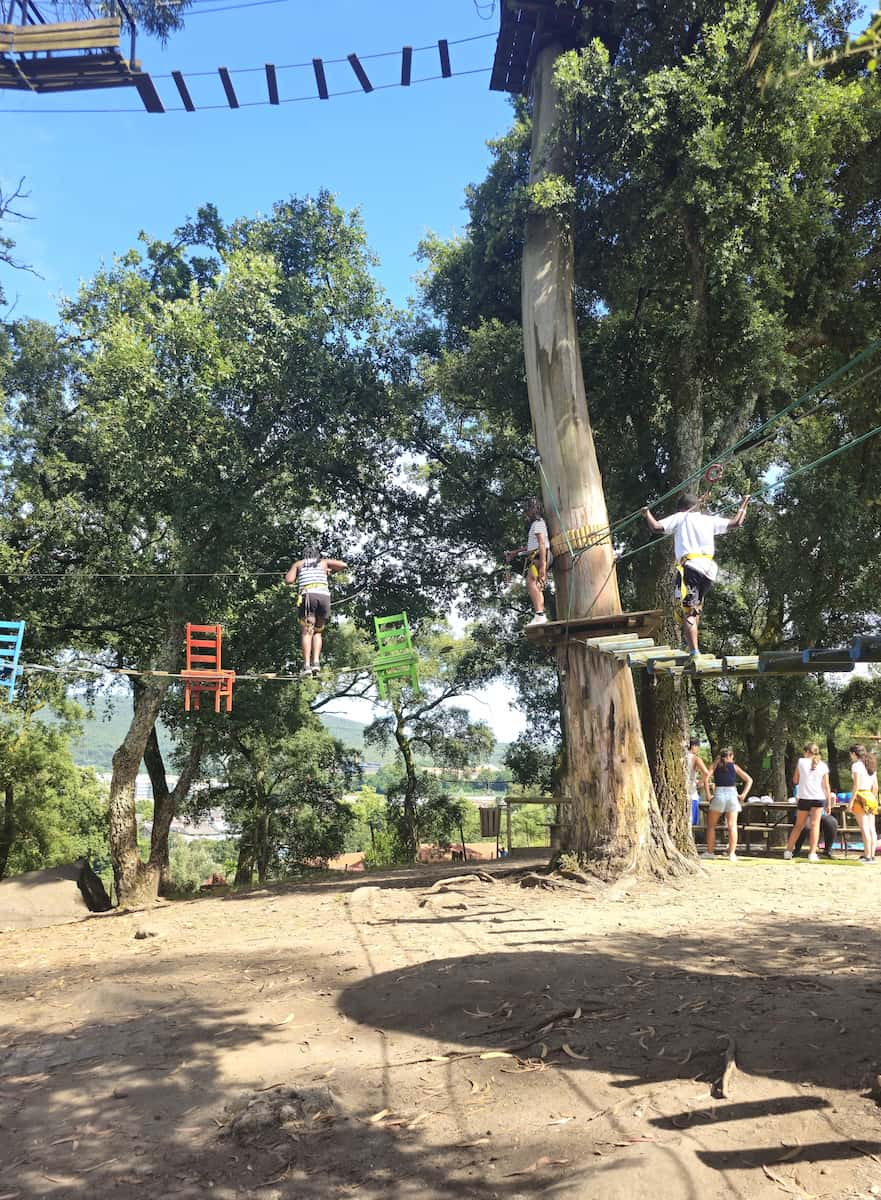
Budget Tip: Entry to Picoto Park is free, but activities like ziplining or climbing cost between €1-75 (≈$1.10-80), depending on the activity. If you’re on a budget, stick to the free hiking trails and viewpoints for an equally enjoyable experience.
Insider Tip: Visit early in the morning or late afternoon to avoid crowds and make the most of cooler temperatures. Don’t forget to pack water bottles and snacks – there’s plenty of space for a family picnic amidst the greenery.
| Picoto Park | Details |
|---|---|
| Entrance Fee | Free |
| Activity Costs | €1-75 (≈$1.10-80) |
| Location | Monte do Picoto, 4715-213 Braga |
2. The Quinta Pedagógica de Braga
Hands-On Fun at Braga Pedagogical Farm. The Quinta Pedagógica de Braga is an absolute gem for families looking to combine fun with learning. My kids were thrilled to interact with farm animals like goats, chickens, and rabbits – feeding them was their favorite part! The farm also offers educational activities such as planting vegetables and learning about sustainable farming practices. Watching my children dig into the soil and water plants was a heartwarming experience that connected them to nature in a meaningful way.
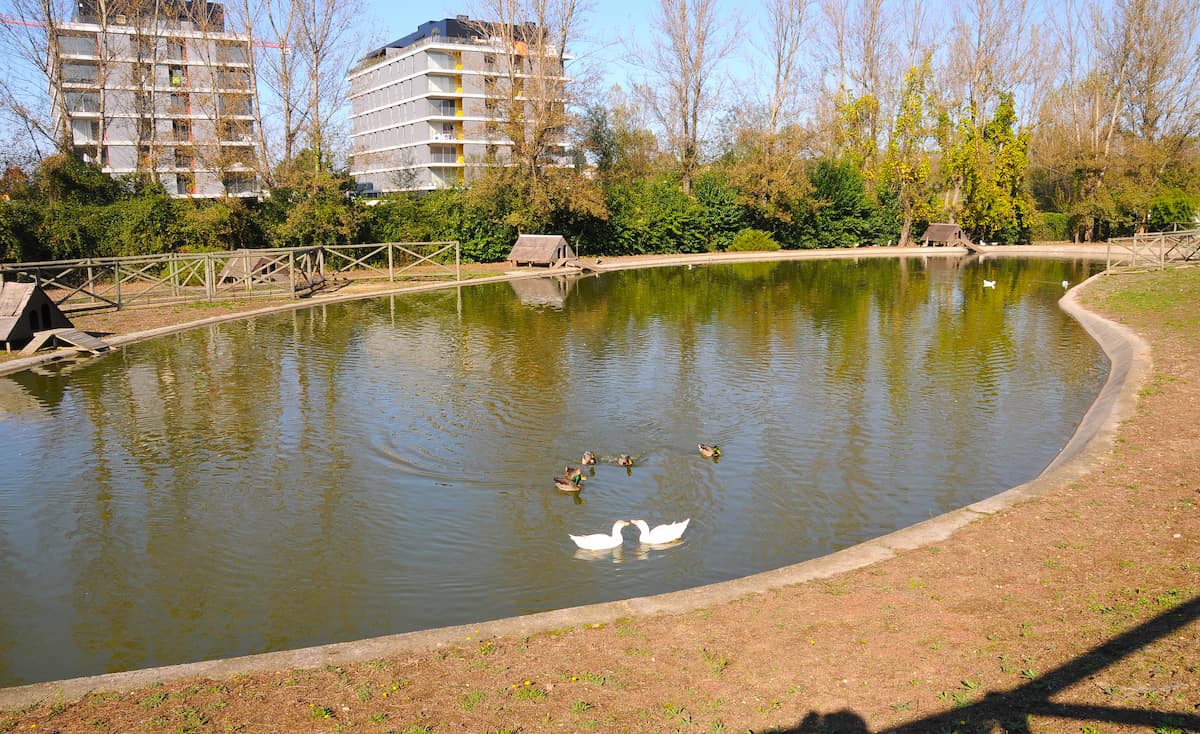
Budget Tip: Admission is free on weekends and holidays, making this an ideal stop for families traveling on a budget. During weekdays, entry costs around €2 (≈$2.15), which is still very affordable.
Insider Tip: Plan your visit during spring or summer when the farm is in full bloom and there are more hands-on activities available. Bring comfortable shoes for walking around the farm’s gardens and wooded areas.
| Braga Pedagogical Farm | Details |
|---|---|
| Entrance Fee | Free on weekends/holidays; €2 (≈$2.15) weekdays |
| Location | Caminho dos Quatro Caminhos, 4700-288 Braga |
3. Biscainhos Museum
Exploring History at Biscainhos Museum. Biscainhos Museum surprised me with how engaging it was for children. This 17th-century palace is not just about history – it’s about discovery! My kids were fascinated by old carriages and musical instruments displayed inside the museum, while I admired the elegant Baroque architecture. Outside, we explored the enchanting garden filled with fountains and manicured hedges where they could run freely while I relaxed on a bench.
Budget Tip: The museum is free to visit on Sundays between 10:00 AM and 12:30 PM – perfect for families looking for an affordable outing.
Insider Tip: Don’t rush through the garden; it’s one of the most beautiful parts of the museum and offers plenty of photo opportunities. A common tourist mistake is skipping this area altogether – don’t make that error!
| Biscainhos Museum | Details |
|---|---|
| Entrance Fee | Free on Sundays 10am-12:30pm; €2 (≈$2.15) other days |
| Location | Rua dos Biscainhos, Braga |
Free Things to Do in Braga
1. Raio Palace
Marvel at the Raio Palace. The Raio Palace, also known as Casa do Mexicano, is a hidden gem in the city center that I couldn’t stop admiring. Its striking blue façade, adorned with intricate baroque details, is a masterpiece of 18th-century architecture. Commissioned by João Duarte de Faria, a wealthy merchant and knight of the Order of Christ, the palace is as impressive inside as it is outside. The beautifully tiled staircase caught my eye immediately, and the small museum inside offers fascinating insights into the city’s history. While photography isn’t allowed indoors, I found the experience of seeing it with my own eyes even more rewarding.
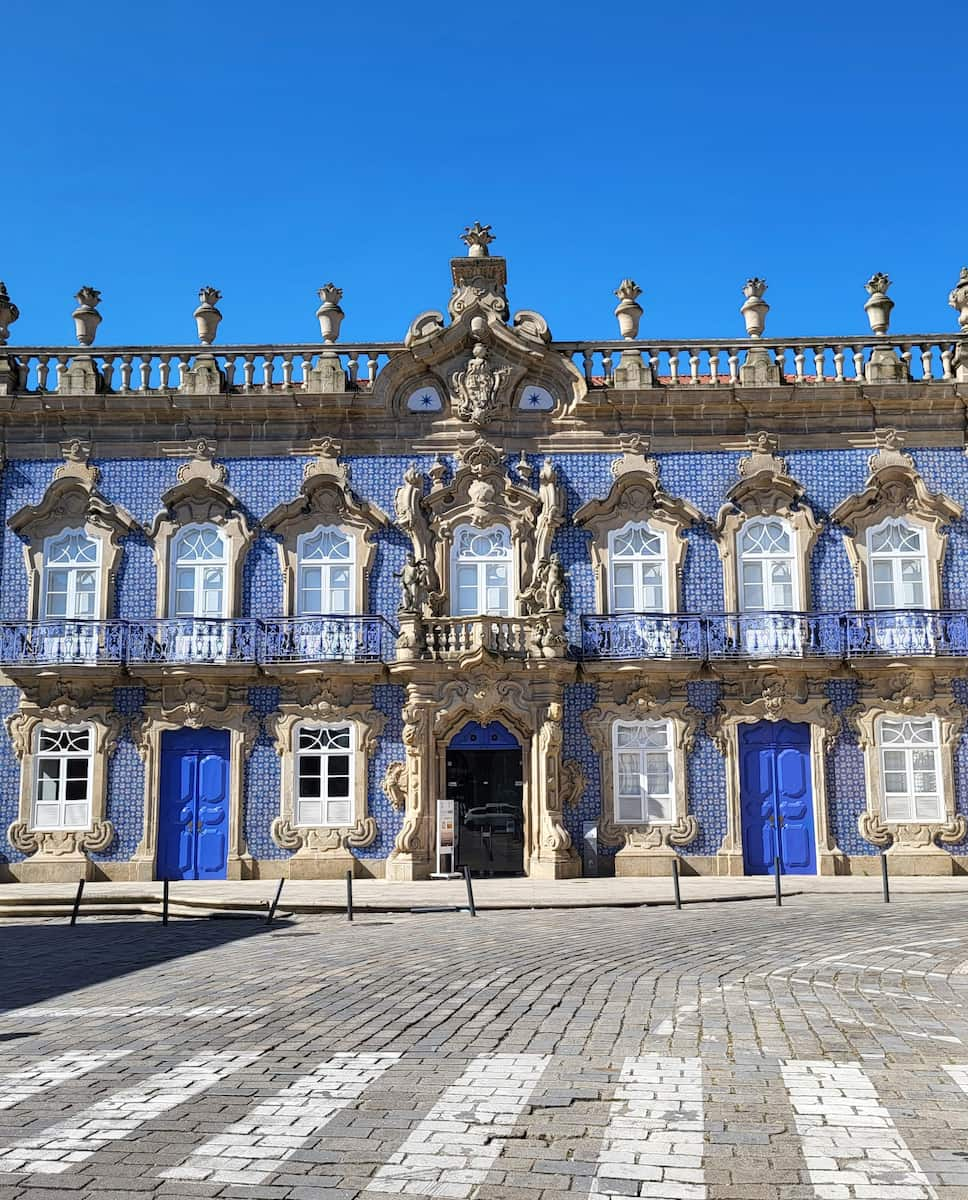
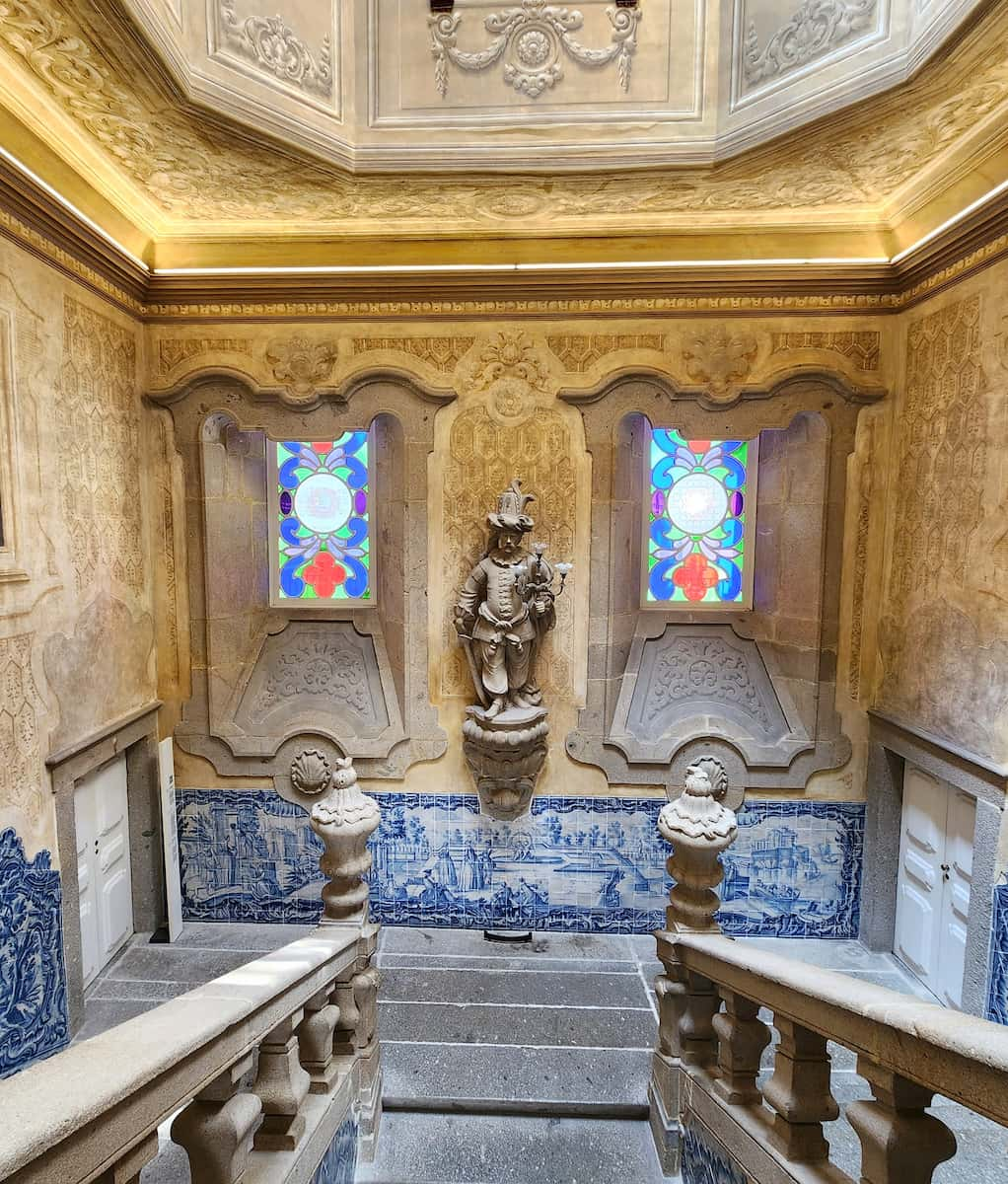
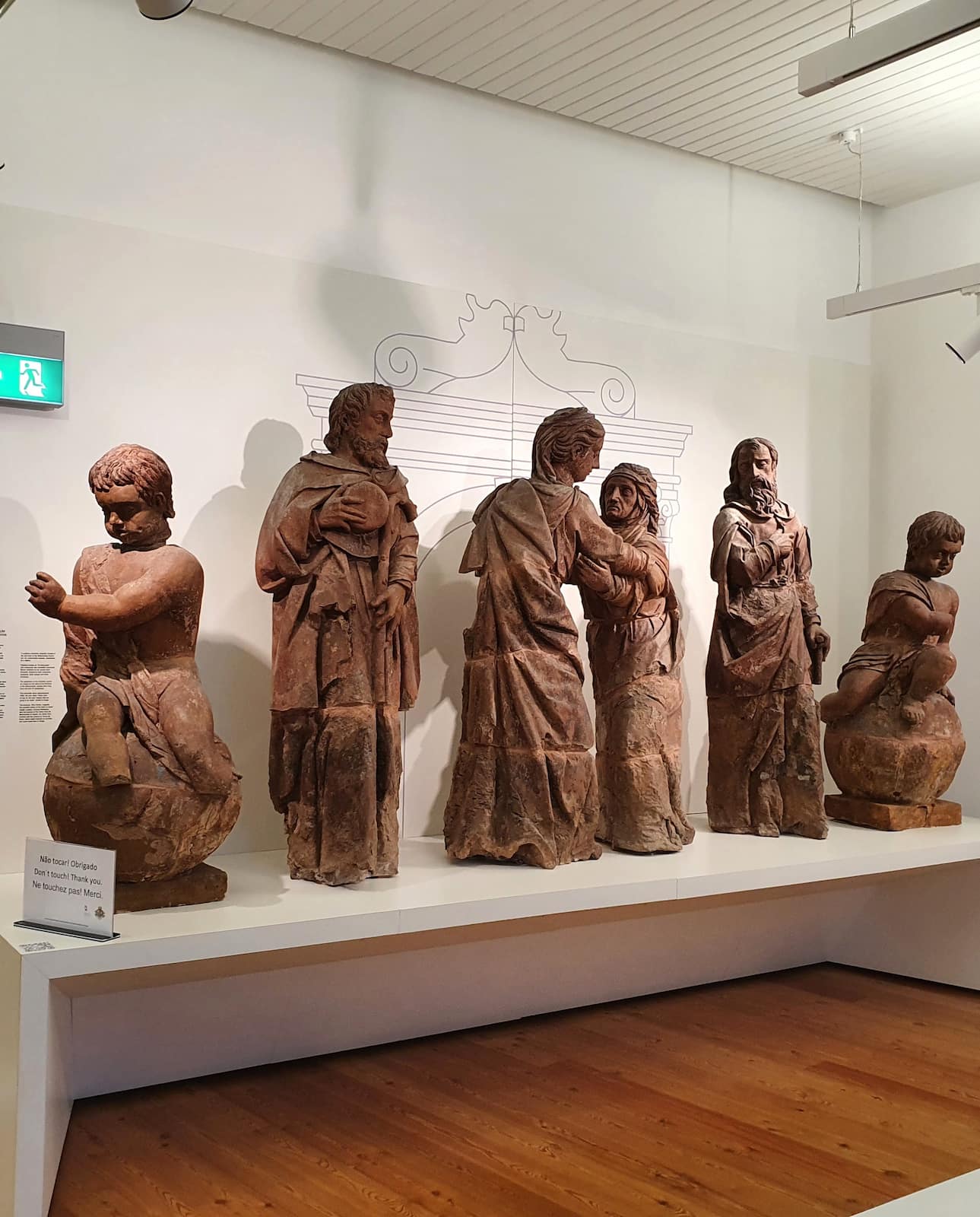
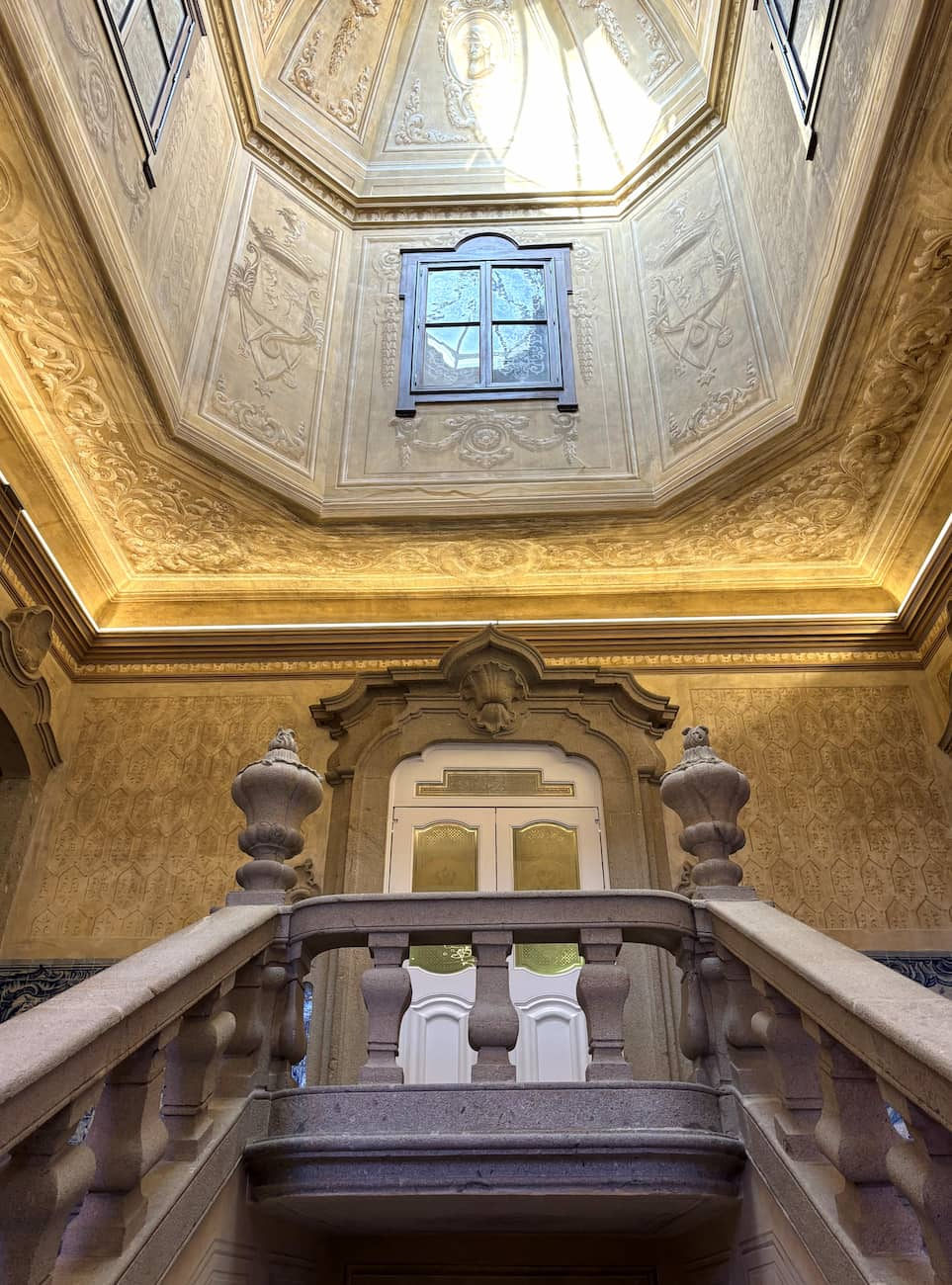
Budget Tip: Admission to the Raio Palace is completely free, making it an excellent choice for travelers on a budget who want to enjoy both history and art.
Insider Tip: Visit in the morning when the light enhances the brilliance of the blue tiles on the façade. A common tourist mistake is rushing through – take your time to appreciate the details both inside and outside.
| Raio Palace | Details |
|---|---|
| Entrance Fee | Free |
| Location | Largo do Paulo Orósio, Braga |
2. Braga Old Town
Get Lost in Old Town Streets. Wandering through the city’s old town streets was one of my favorite experiences in the city. This compact historical center is a maze of charming alleys filled with beautiful churches, quaint cafés, and architectural treasures like Torre de Menagem and countless small shops. I let myself be carried away by the winding streets and discovered hidden gems like the Image Museum and Centésima Página bookshop with its secret garden café. The vibrant atmosphere of locals chatting in esplanadas added to the charm.
Budget Tip: Exploring the old town is completely free – you can soak up centuries of history without spending a dime. For a low-cost treat, grab a coffee at one of the outdoor cafés for €1-2 (≈$1.10-2.15).
Insider Tip: Don’t miss Torre de Menagem, a medieval tower that’s often overlooked by tourists. It’s possible to visit with an appointment for an up-close look at this historical monument.
| Braga Old Town Streets | Details |
|---|---|
| Entrance Fee | Free |
| Location | Historic Center of Braga |
Seasonal Activities in Braga
Christmas in Braga
Christmas Magic. Braga transforms into a magical winter wonderland during the Christmas season. I was enchanted by the festive lights that adorn the entire city center, creating a fairytale atmosphere perfect for evening strolls. The highlight is definitely the giant Christmas tree of lights placed on Arcada’s fountain – it’s a spectacular sight that had me standing in awe for several minutes. The historic squares come alive with the Braga Christmas Market (typically running from early to late December), where I found beautiful handmade crafts and holiday decorations that made perfect gifts for family back home.
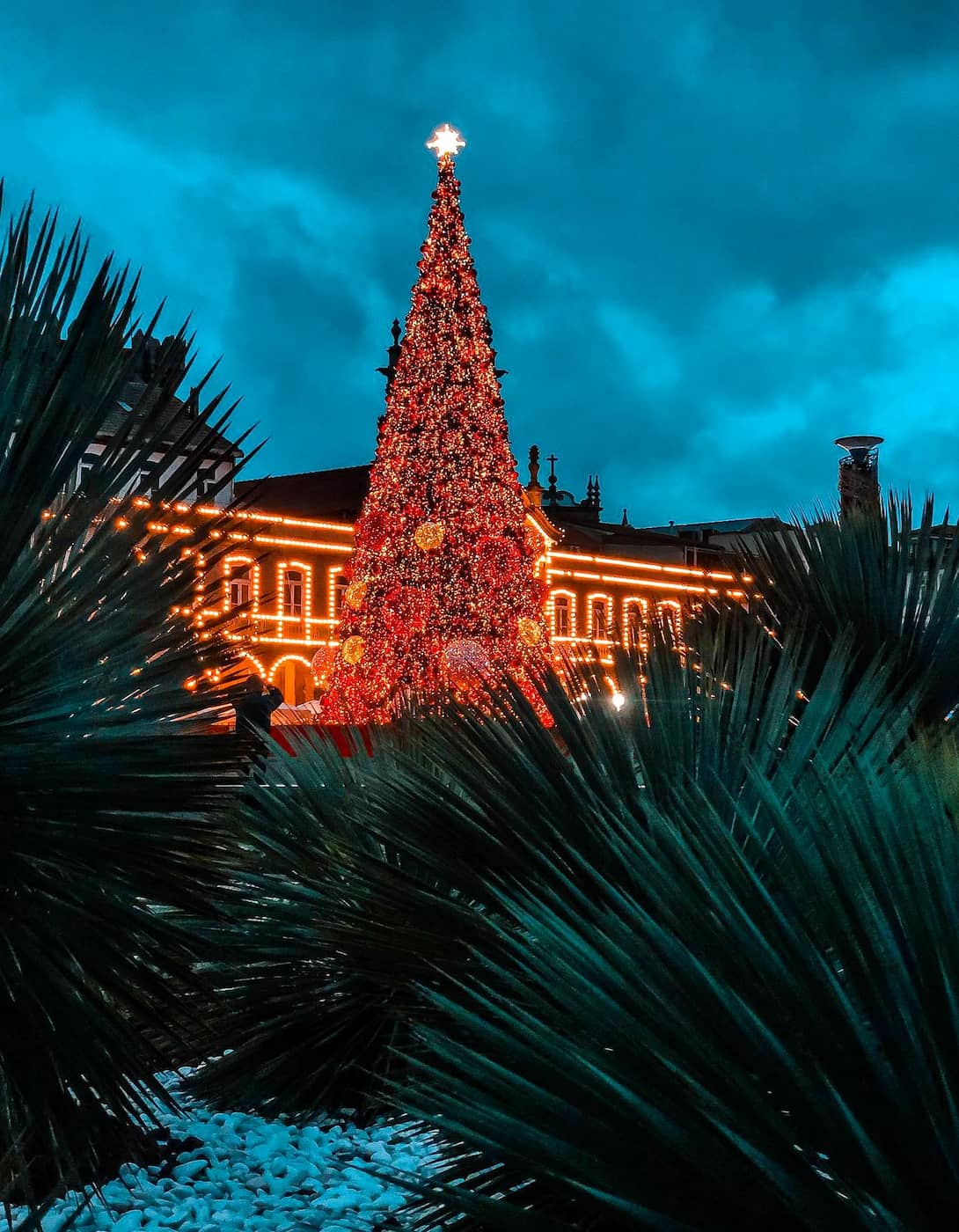
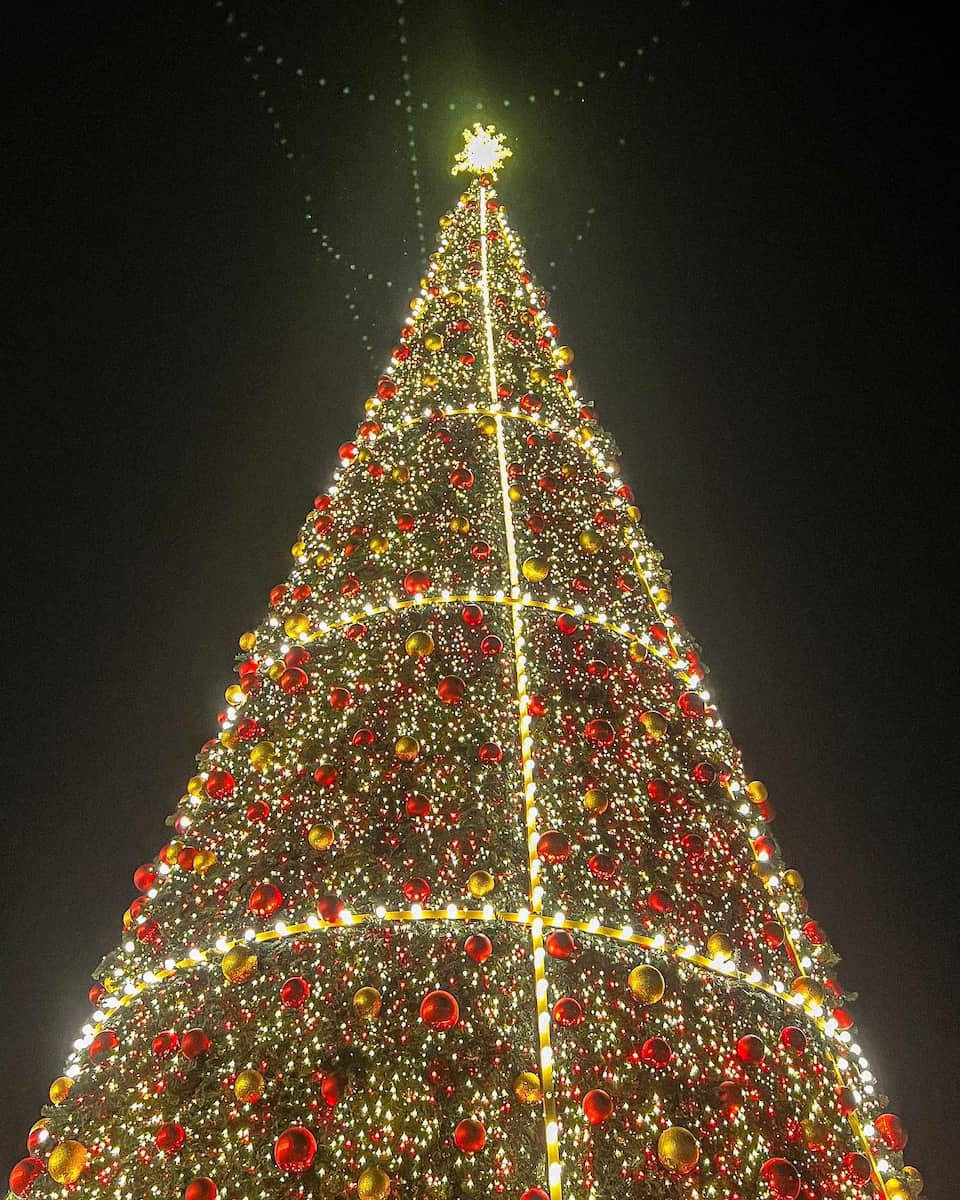
Festive Traditions. One of my most memorable experiences was attending the “Braga’s Festive Lights: A Christmas Journey” tour. Starting at Braga Cathedral, we wandered down R. do Souto and Av. da Liberdade, where the festive illuminations created a magical atmosphere. The tour concluded at Arco da Porta Nova, which serves as a picturesque entry to the Christmas market. Budget tip: While the guided tour costs around €15-20 (approximately $16-22), you can create your own self-guided route for free using the same landmarks.
Unique Celebrations. The Live Nativity of Priscos, the largest in Europe, was an absolute highlight of my Christmas visit to Braga. The community spends an entire year creating 90 detailed sceneries that recreate the town where Jesus Christ was born. Insider tip: Don’t miss the peculiar Christmas Eve tradition at Bananeiro, where locals gather for a glass of muscatel wine and a banana – it’s a uniquely Braga experience that I found both strange and delightful!
| Christmas Activity | Price | Location | Dates |
|---|---|---|---|
| Christmas Market | Free | Historic squares | Early-Late December |
| Festive Lights Tour | €15-20 (≈$16-22) | Starts at Braga Cathedral | December |
| Live Nativity of Priscos | €5-8 (≈$5.40-8.60) | Priscos parish | Mid-December to early January |
Summer in Braga
Summer Celebrations. The St. John Festival in Braga was one of the most vibrant celebrations I’ve ever experienced. Taking place on June 23rd, this massive street party lasts all night until dawn. I joined locals in the feast at Parque de Exposições, where countless tents and marquees serve traditional food and drinks. The atmosphere was electric – music playing everywhere, people dancing in the streets, and an overwhelming sense of joy permeating the entire city. What surprised me was that despite being overshadowed by Porto’s larger celebration, the city’s St. John has a more intimate, authentic feel.
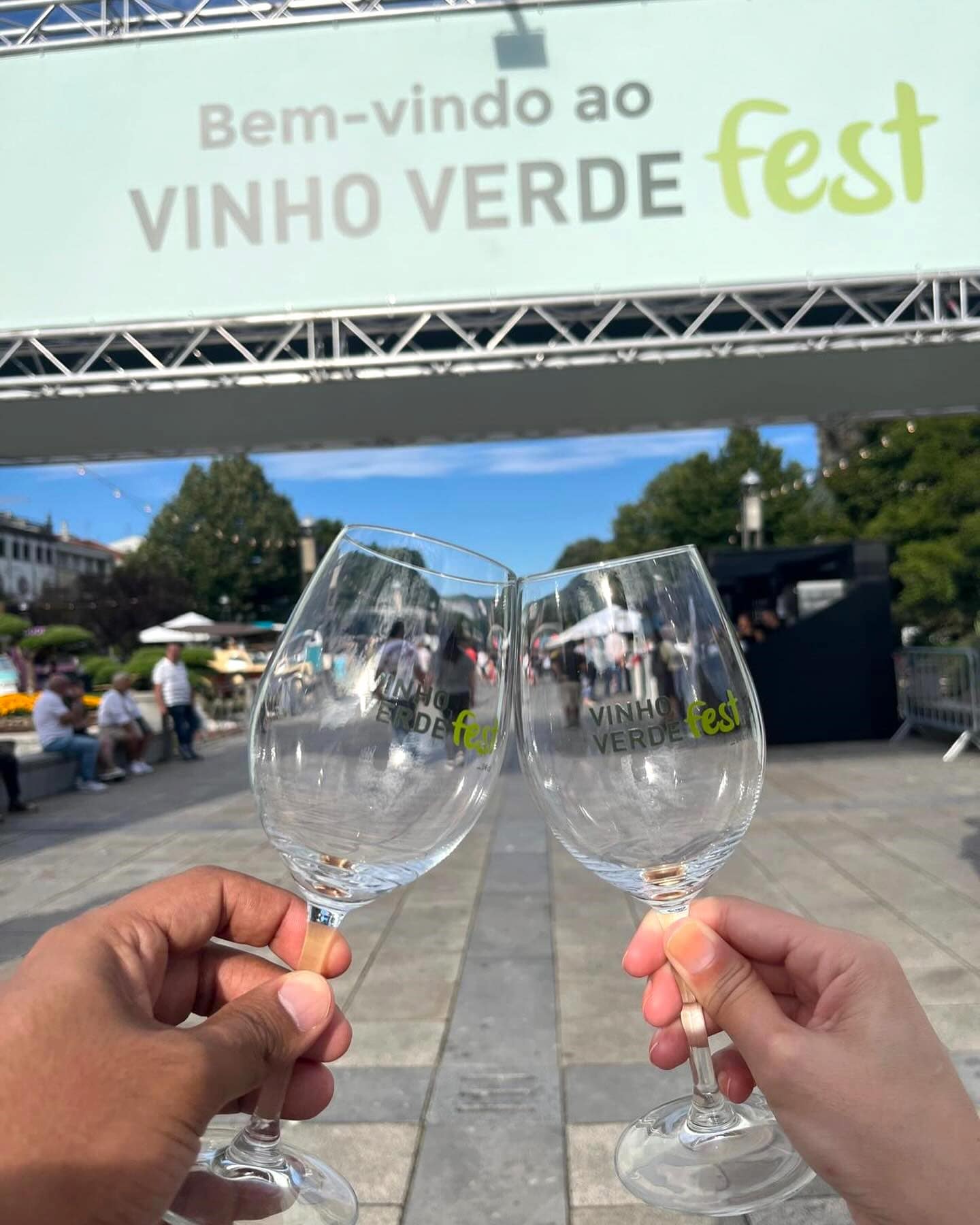
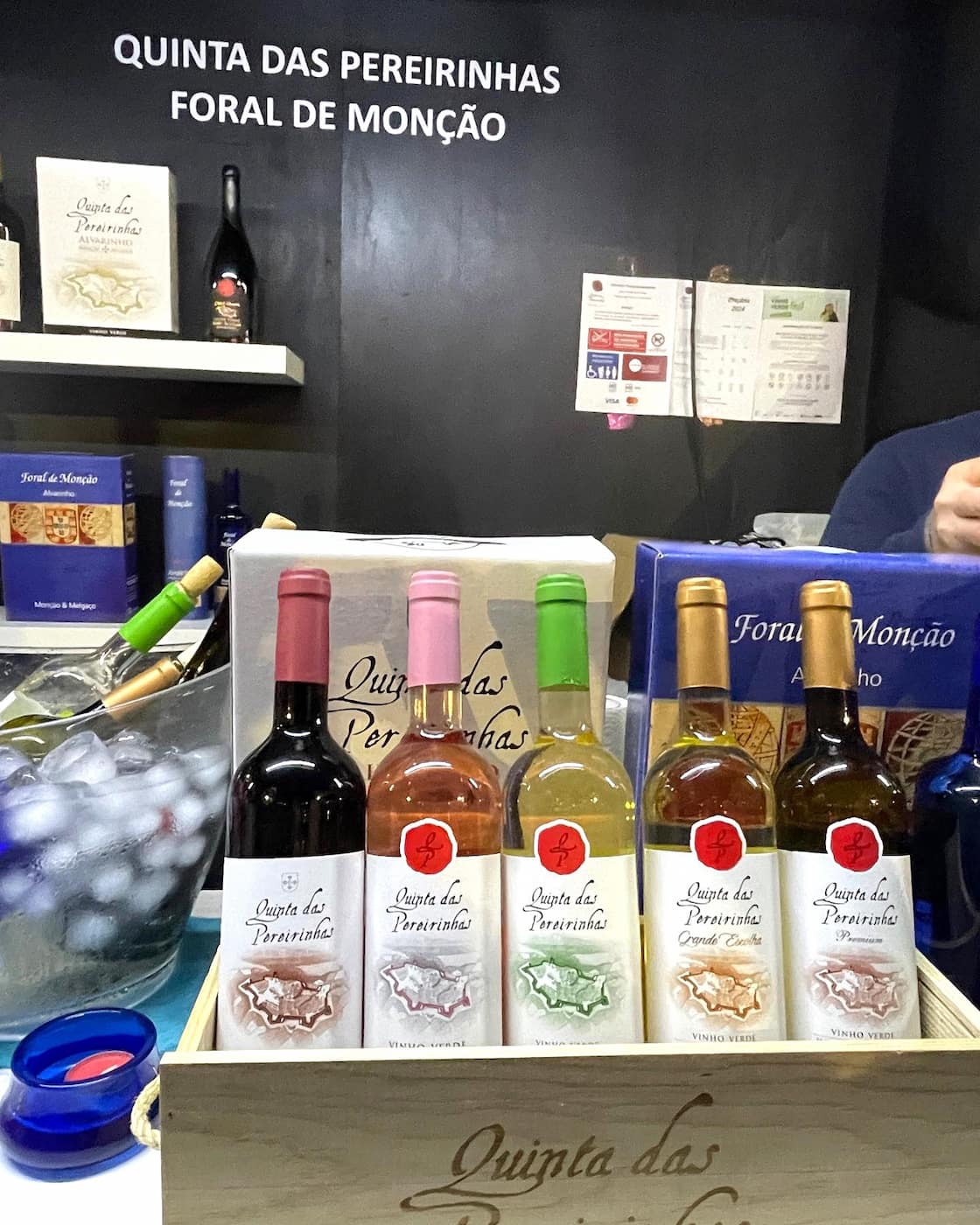
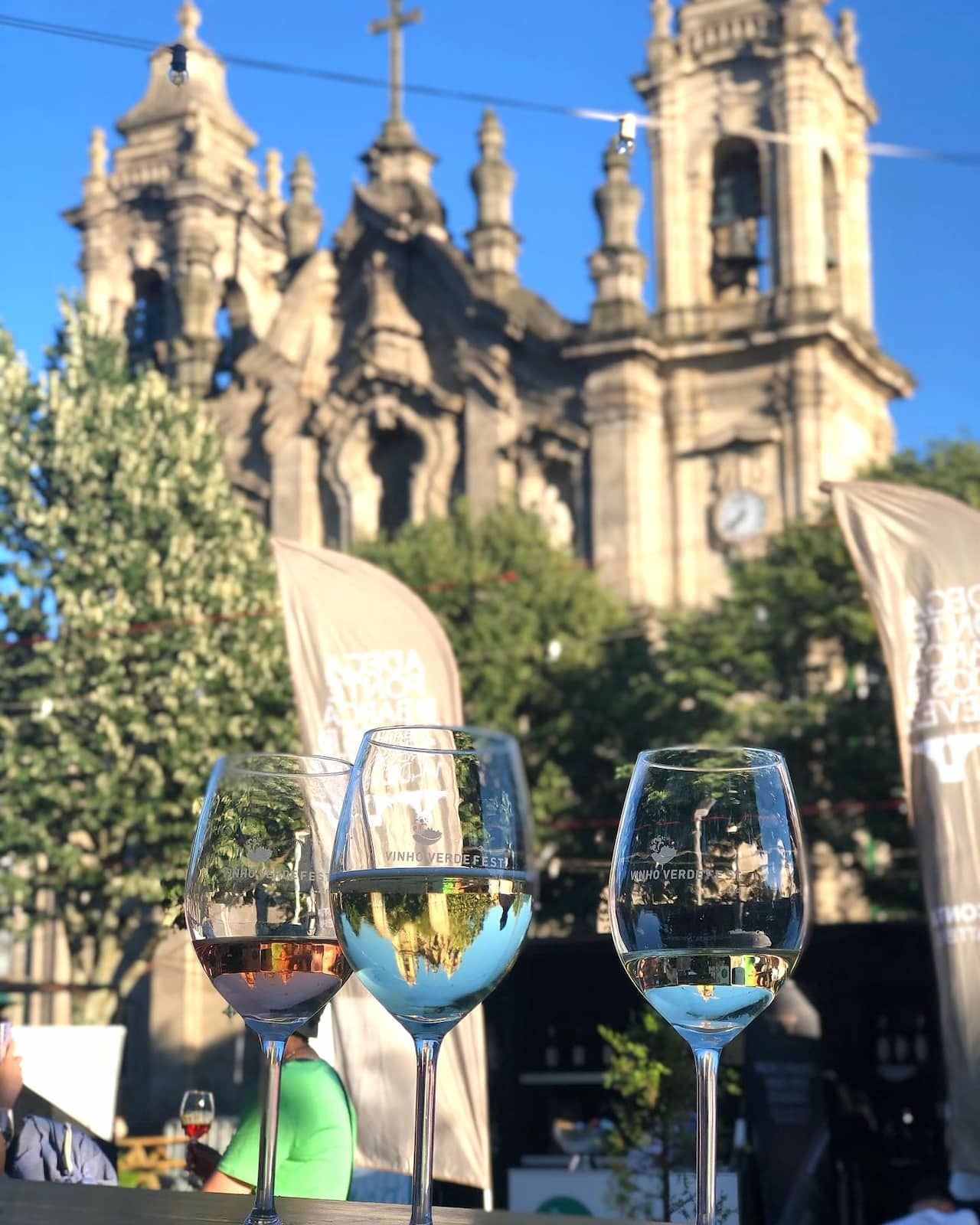
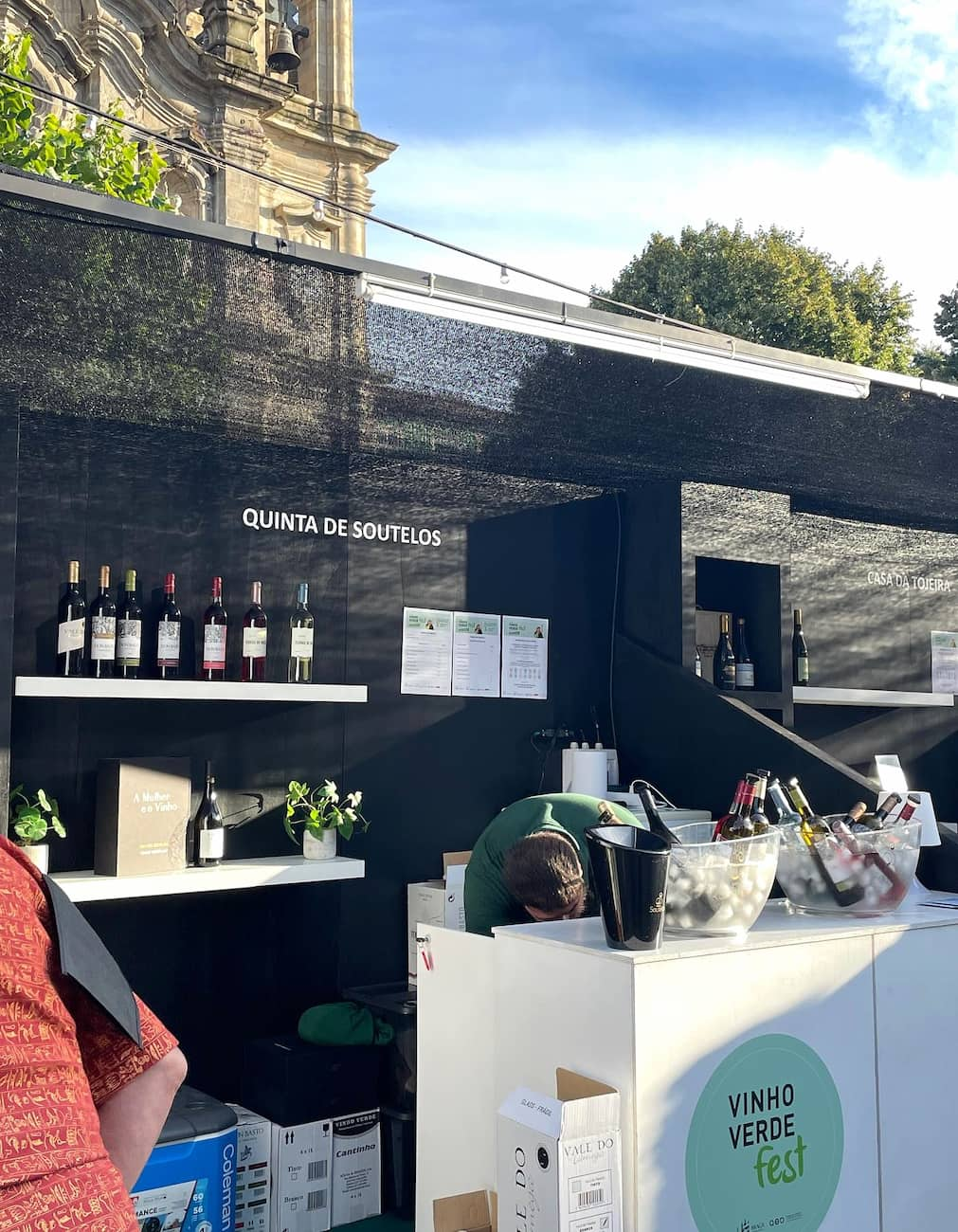
Cultural Immersion. Right after St. John ends, the MIMARTE theatre festival begins, running through the first half of July. I attended several performances by international theatre groups in various locations throughout the city. The diversity of shows – from traditional to experimental – offered something for everyone. Budget tip: Many outdoor performances during these summer festivals are completely free, allowing you to enjoy high-quality entertainment without spending a cent.
Musical Experiences. July brings the Vinho Verde Fest, combining two of my favorite things – music and wine! I spent a delightful evening sampling the region’s famous young wines while listening to live performances. The festival creates a relaxed atmosphere where you can chat with winemakers and learn about local production methods. Insider tip: Arrive early to secure a good spot, as this has become increasingly popular with both locals and tourists in recent years.
| Summer Event | Price | Location | Dates |
|---|---|---|---|
| St. John Festival | Free (food/drinks extra) | City-wide | June 23 |
| MIMARTE Theatre Festival | €5-15 (≈$5.40-16) | Various venues | First half of July |
| Vinho Verde Fest | €10-20 (≈$11-22) | City center | July |
Spring in Braga
Spring Renewal. My spring visit to Braga coincided with Braga Romana, a fascinating festival that takes place in May. The entire city transforms to recreate everyday life in ancient Bracara Augusta, with over 80 hours of programming. I was amazed by the commitment of locals – hundreds of associations, merchants, and schools dress in period costumes and participate in historical reenactments. Walking through the streets felt like traveling back in time to when Romans dominated the city.
Holy Week Traditions. If you visit in spring, Semana Santa (Holy Week) is an unmissable experience. Known as the most famous Holy Week celebration in Portugal, it features unique elements of the city’s own ritual that date back to at least the 16th century. I was moved by the solemn processions through the streets, with participants carrying ornate religious icons and candles. Budget tip: All processions are free to watch from the streets, though arriving early is essential to get a good viewing spot.
Craft Beer Culture. The Hopen Beer Fest in May/June was an unexpected delight during my spring visit. As a craft beer enthusiast, I enjoyed sampling a wide variety of local and international brews while chatting with passionate brewers about their creations. The festival has a relaxed, friendly atmosphere with live music adding to the enjoyment. Insider tip: Purchase the tasting package rather than individual samples – it’s more economical and allows you to try a wider selection.
| Spring Event | Price | Location | Dates |
|---|---|---|---|
| Braga Romana | Free | City-wide | May |
| Semana Santa | Free (processions) | Historic center | Varies (March/April) |
| Hopen Beer Fest | €10-15 (≈$11-16) | City center | May/June |
Autumn in Braga
Autumn Arts. Fall in Braga brings a rich tapestry of cultural events that I found particularly inspiring. The Encontros da Imagem photography festival (mid-September to late October) transforms the city into an open-air gallery, with exhibitions in unique venues like Mosteiro de Tibães and the Alberto Sampaio Museum. As one of Europe’s oldest and most respected photography festivals, it attracts artists and visitors from around the world. I spent hours wandering between venues, discovering thought-provoking images that stayed with me long after my visit.
Musical Exploration. Braga Music Week (late September to early October) fills the city with nine days of music, cinema, and culture. I enjoyed concerts on street corners, film screenings at the iconic Theatro Circo, and various cultural events throughout the city. The festival creates an energetic atmosphere that’s contagious – even as a visitor, I felt part of something special. Budget tip: Many of the street performances are free, allowing you to experience the festival’s atmosphere without spending money on tickets.
Electronic Innovation. The Semibreve festival in late October was a fascinating discovery during my autumn visit. This avant-garde electronic music and digital art festival takes place in emblematic venues like Theatro Circo, Casa Rolão, and GNRation (the old Guarda Nacional Republicana building). Recognized as one of the world’s top 26 festivals by British magazine “Dazed and Confused,” it attracts a diverse, international crowd.
| Autumn Event | Price | Location | Dates |
|---|---|---|---|
| Encontros da Imagem | Free-€5 (≈$5.40) | Various venues | Mid-September to late October |
| Braga Music Week | €0-20 (≈$0-22) | Throughout the city | Late September to early October |
| Semibreve Festival | €15-30 (≈$16-32) | Various venues | Late October |
Day Trips from Braga
1. Guimarães
The Cradle of Portugal. A short 25-minute train ride from Braga brings you to Guimarães, a UNESCO World Heritage Site and the birthplace of Portugal’s national identity. Walking through its medieval streets felt like stepping back in time. My first stop was Guimarães Castle, a 10th-century fortress that played a pivotal role in Portuguese history. Nearby is the Palace of the Dukes of Braganza, an imposing 15th-century residence filled with period furniture and tapestries.
Charming Squares and Streets. The town’s heart lies in Largo da Oliveira and Praça de São Tiago, two picturesque squares lined with medieval buildings and lively cafés. I enjoyed a coffee while soaking in the atmosphere before exploring Rua de Santa Maria, one of Guimarães’ oldest streets filled with charming shops and historical landmarks.
Insider Tip: Don’t miss the cable car ride up to Penha Mountain for stunning views over Guimarães and its surrounding countryside. It’s a peaceful retreat after exploring the bustling town center.
| Guimarães Day Trip | Details |
|---|---|
| Train Fare | €3.25 (≈$3.50) one way |
| Travel Time | 25 minutes |
| Must-See Spots | Guimarães Castle, Palace of the Dukes, Penha Mountain |
⭐Best activites
- Best of Braga and Guimaraes Day Trip from Porto – Discover the beauty of one of Portugal’s most underrated regions on this full-day guided tour of Minho from Porto. Located in Northern Portugal, Minho is known for its bucolic countryside, vineyards, and delicious cuisine. Spend the day exploring it all with the help of a knowledgeable guide and upgrade to include lunch at a local restaurant. Visit two cities, Guimaraes and Braga, to get to know the heart of the region.
2. Porto
A Vibrant Riverside City. Just a 40-minute train ride from Braga, Porto is an essential day trip for anyone visiting northern Portugal. Known for its stunning Douro River views and colorful Ribeira district, Porto offers a mix of history, culture, and gastronomy. My first stop was the iconic St. John Bento Railway Station, where I marveled at the intricate azulejo tiles depicting scenes from Portuguese history. From there, I wandered through the narrow streets of the old town, eventually reaching the Dom Luís I Bridge. Crossing the bridge on foot provided breathtaking views of the river and Vila Nova de Gaia, home to Porto’s famous wine cellars.
Cultural Highlights. Porto is packed with attractions for all tastes. I visited Livraria Lello, one of the world’s most beautiful bookstores, and climbed the Clérigos Tower for panoramic city views. Insider tip: Arrive early at both spots to avoid long lines. For art lovers, the Serralves Museum of Contemporary Art is a must-see, surrounded by lush gardens perfect for a leisurely stroll.
Budget Tip: The urban train from Braga to Porto costs just €3.55 (≈$3.80) one way, making it an affordable option for travelers. Don’t forget to validate your ticket before boarding to avoid fines!
| Porto Day Trip | Details |
|---|---|
| Train Fare | €3.55 (≈$3.80) one way |
| Travel Time | 40 minutes (urban train) |
| Must-See Spots | St. John Bento Station, Ribeira District, Dom Luís I Bridge |
⭐Best activites
- Tour: 3-Hour Porto Highlights on a Electric Bike Guided Tour – Take a tuk tuk tour of Braga’s city center and learn about its history, culture, and architecture from your guide. Discover hidden corners and hear their different, fascinating stories.
- Ticket online: Catedral do Porto: Entry Ticket + Torre dos Clérigos: Entry Ticket – Discover the beauty of one of Porto’s oldest monuments and take in sweeping views of Porto atop the Baroque tower.
- Ticket online: Porto Explorer Pass – Combine Porto favorites with this flexible pass that lets you explore multiple attractions.
- Tour+Ticket online: FC Porto Museum & Dragão Stadium | Book Tickets Online – Experience the rich history of FC Porto with a museum visit and tour of the iconic Dragão Stadium.
FAQs
What are the must-visit attractions in Braga?
The city’s top attractions include Bom Jesus do Monte, a UNESCO World Heritage site known for its Baroque staircase and panoramic views, and Sé de Braga Cathedral, the oldest cathedral in Portugal. Don’t miss the historic center with landmarks. This city of Braga is steeped in history and culture, making it a must-visit destination in northern Portugal.
How can I get to Bom Jesus do Monte?
You can reach Bom Jesus do Monte by taking the historic funicular or walking up the famous staircase. Both options offer unique experiences and stunning views of Braga.
What are some family-friendly activities in Braga?
For families, Bom Jesus do Monte is great for exploring nature and architecture, while Parque da Ponte offers playgrounds and exercise areas. Monkey Park Braga is another fun spot with various activities for kids.
Can I visit Braga Cathedral for free?
Yes, you can visit the exterior of Sé de Braga Cathedral for free, though there is a fee to explore the interior and treasury. This oldest cathedral in Portugal is a significant cultural landmark and a must-visit, even if just to admire from the outside.
How can I get to Braga?
To get to Braga, you can take a direct train from Porto, which takes about 1 hour and 10 minutes, or a bus, which takes around 45 minutes. Driving is also an option, taking approximately 45 minutes via the A3 highway. Braga is well-connected, making it easy to plan a trip to Braga from nearby cities like Porto. You can also fly into Porto Airport and then take a bus or taxi to Braga.
What are some of the best hotels in Braga?
For accommodations, consider hotels like Meliã Braga Hotel or Innside By Meliá Braga Centro, which offer comfortable stays in the heart of Braga. These hotels provide easy access to the city’s main attractions and are highly rated for their service and location.
What are some seasonal highlights in Braga?
Braga offers a range of seasonal activities, including festive events at Christmas, outdoor activities in summer, and scenic views in spring and autumn. Braga in the spring is particularly beautiful with vibrant flowers. Don’t miss the Braga Romana festival, which celebrates the city’s Roman heritage.
What are some of the best places to see in Braga?
Some of the best places to see in Braga, Sé de Braga Cathedral, and the historic center with landmarks like New Gate Arch and Torre de Menagem. These attractions showcase the city’s rich history and cultural significance.
